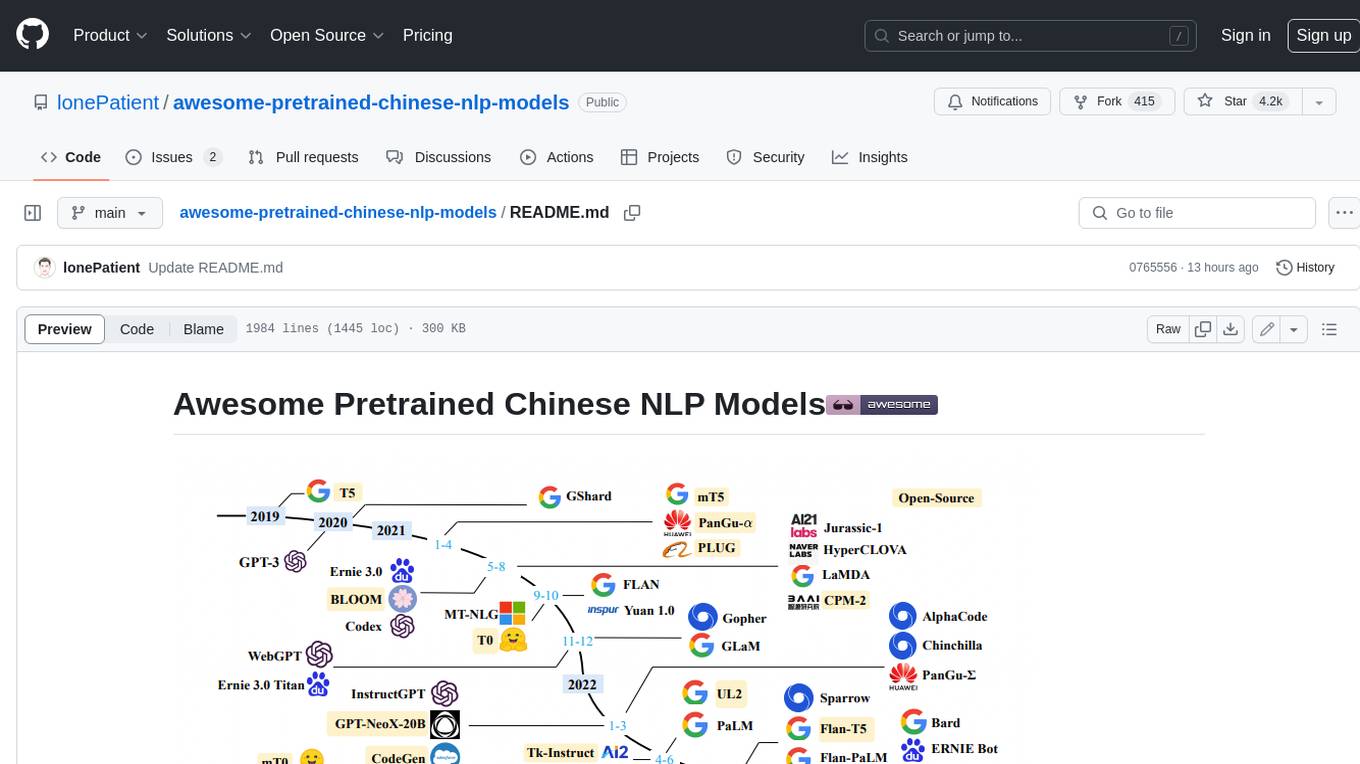
sanic-web
一个轻量级、支持全链路且易于二次开发的大模型应用项目(Large Model Data Assistant) 支持DeepSeek/Qwen3等大模型 基于 Dify 、LangChain/LangGraph、Ollama&Vllm、Sanic 和 Text2SQL 📊 等技术构建的一站式大模型应用开发项目,采用 Vue3、TypeScript 和 Vite 5 打造现代UI。它支持通过 ECharts 📈 实现基于大模型的数据图形化问答,具备处理 CSV 文件 📂 表格问答的能力。同时,能方便对接第三方开源 RAG 系统 检索系统 🌐等,以支持广泛的通用知识问答。
Stars: 1025
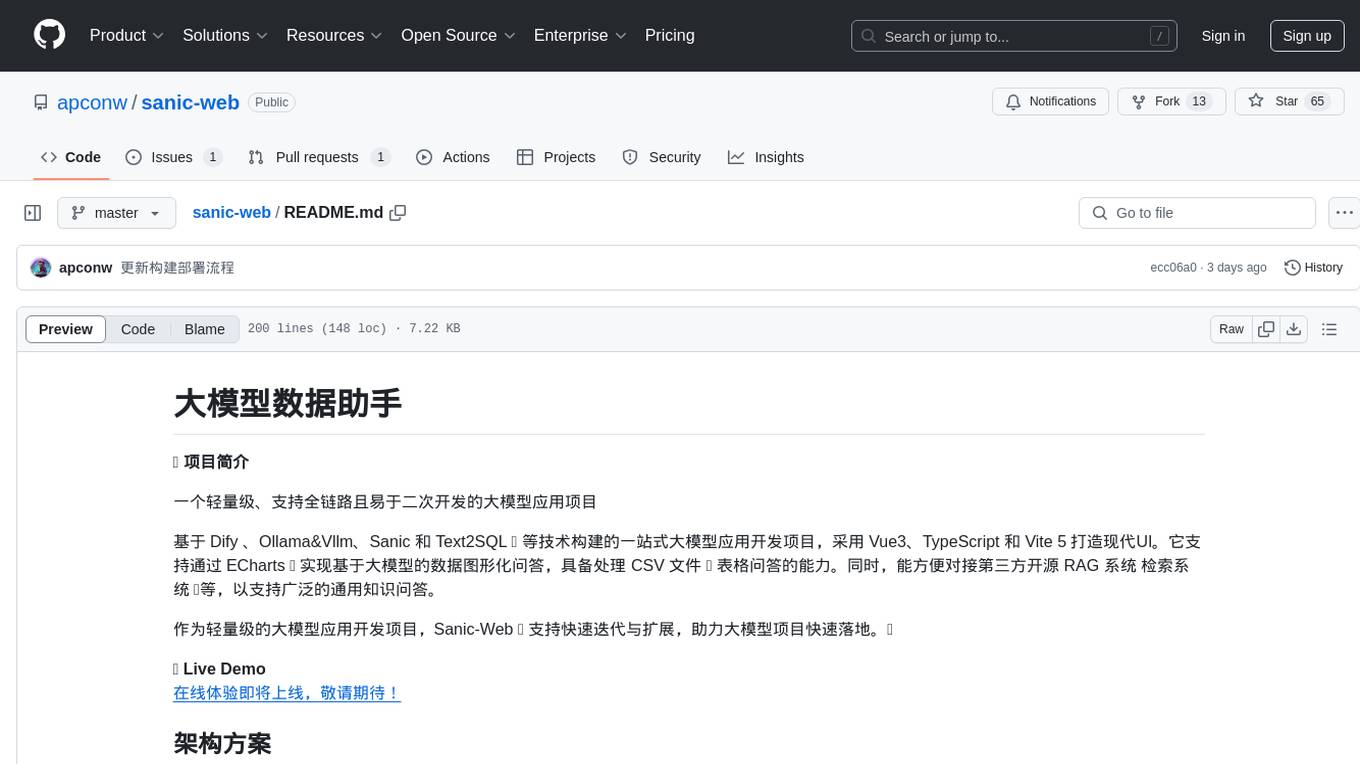
Sanic-Web is a lightweight, end-to-end, and easily customizable large model application project built on technologies such as Dify, Ollama & Vllm, Sanic, and Text2SQL. It provides a one-stop solution for developing large model applications, supporting graphical data-driven Q&A using ECharts, handling table-based Q&A with CSV files, and integrating with third-party RAG systems for general knowledge Q&A. As a lightweight framework, Sanic-Web enables rapid iteration and extension to facilitate the quick implementation of large model projects.
README:
🌟 项目简介
一个轻量级、支持全链路且易于二次开发的大模型应用项目
已集成MCP多智能体架构
基于 Dify 、LangChain/LangGraph、Lamaindex、MCP、Ollama&Vllm、Sanic 和 Text2SQL 📊 等技术构建的一站式大模型应用开发项目,采用 Vue3、TypeScript 和 Vite 5 打造现代UI。它支持通过 ECharts 📈 / AntV 实现基于大模型的数据图形化问答,具备处理 CSV 文件 📂 表格问答的能力。同时,能方便对接第三方开源 RAG 系统 检索系统 🌐等,以支持广泛的通用知识问答。
作为轻量级的大模型应用开发项目,Sanic-Web 🛠️ 支持快速迭代与扩展,助力大模型项目快速落地。🚀
- 多智能体: 支持多模型、多智能体+MCP协同任务
- 大模型交互: 全面支持主流大模型交互框架,如 Dify 与 LangChain
- 核心技术栈:Dify + Ollama + RAG + (Qwen3/DeepSeek) + Text2SQL + MCP + LangGraph
- UI 框架: Vue 3 + TypeScript + Vite 5
- 数据问答:集成 ECharts/AntV大模型实现Text2SQL轻量级的图形化数据问答展示
- 表格问答:支持 CSV格式文件的上传与基于大模型总结预处理和Text2SQL的表格数据问答
- 通用问答:支持通用数据形式问答基于对接三方RAG系统+公网检索模式
- 应用架构:作为一个轻量级全链路一站式大模型应用开发框架方便扩展落地
- 灵活部署:支持大模型应用开发各依赖组件docker-compose一键拉起快速部署零配置
 |
 |
 |
 |
如果你喜欢这个项目或发现有用,可以点右上角 Star 支持一下,你的支持是我们不断改进的动力,感谢! ^_^
- 我们能承接 写作类、报告类、数据问答、表格问答、数字人大屏等具体垂直业务场景的项目需求和方案,欢迎联系微信(备注 商务合作)
- 开源不易,本人精力和时间有限,如需一对一技术支持,请先赞助。联系微信(备注 技术支持)
- 支持解决Dify画布前端展示不美观、缺乏登录权限等问题,提供需求开发支持。
- 帮你快速落地具体场景的画布适配开发,通过 Demo 展示,助力你高效完成 kip 考核。
| 技术支持方式 | 赞助 |
|---|---|
| 一对一技术支持 我将亲自远程帮您 配置环境并部署 讲解项目架构&大模型学习资料 | 100元/次 |
| 技术顾问 解答大模型开发相关问题&技术支持 | 365元 |
| 需求开发支持 具体场景Dify画布开发 下面开源Dify画布前后端适配开发 | 500元起 |
- 大模型应用交流群欢迎大家, 欢迎加进群讨论分享经验
- 关注下面的公众号点击·微信群菜单添加微信拉你入群
 |
- 以下DSL清单来源声明:https://github.com/wwwzhouhui/dify-for-dsl.git 项目作者:wwwzhouhui
| DSL清单名称 | 工作流显示 | 用到技术 | 更新时间 | 作者 | 适用dify版本 |
|---|---|---|---|---|---|
| 零代码搞定 DIFY 插件开发:小白也能上手的文生图插件实战.yml | 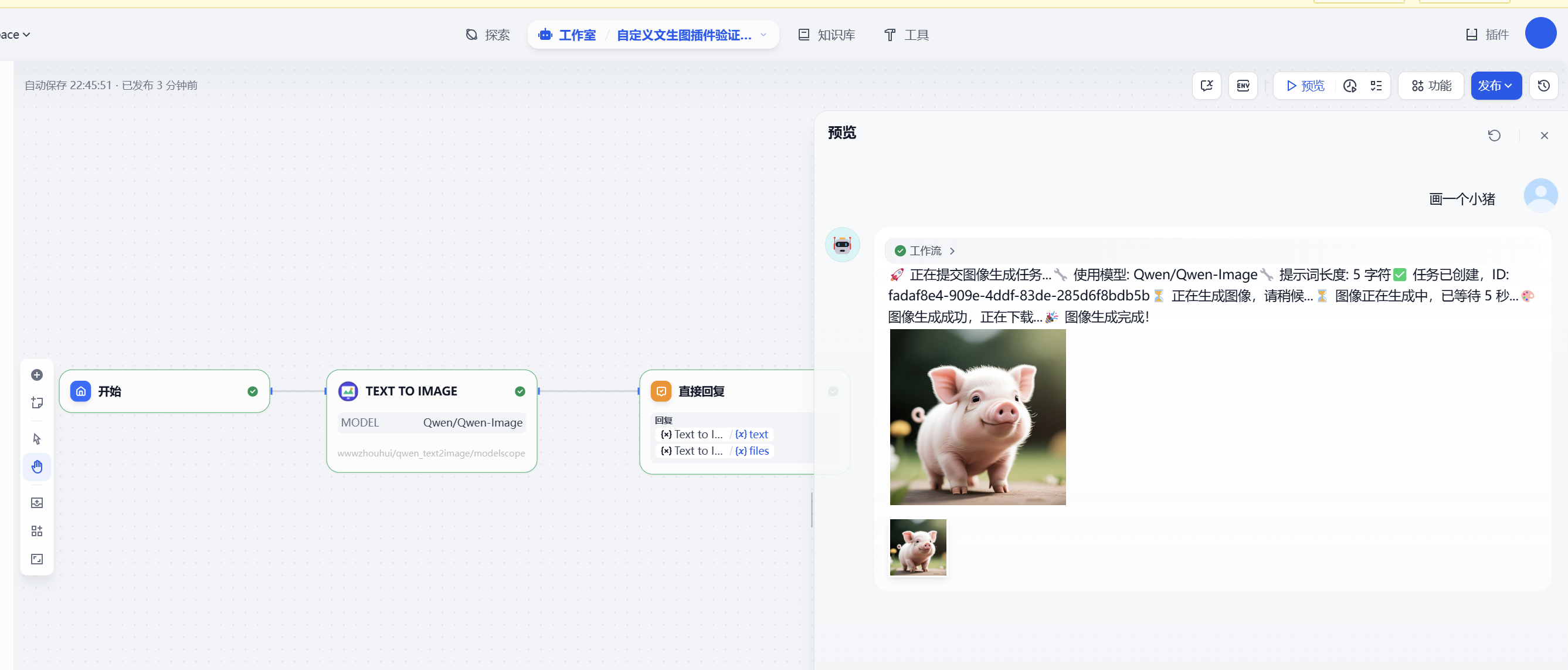 |
qwen-image插件(自己开发的) | 2025年8月20日 | wwwzhouhui | 1.6.0 |
| 100% 识别率!发票、汇票、信用证全搞定的通用票据识别工作流.yml | 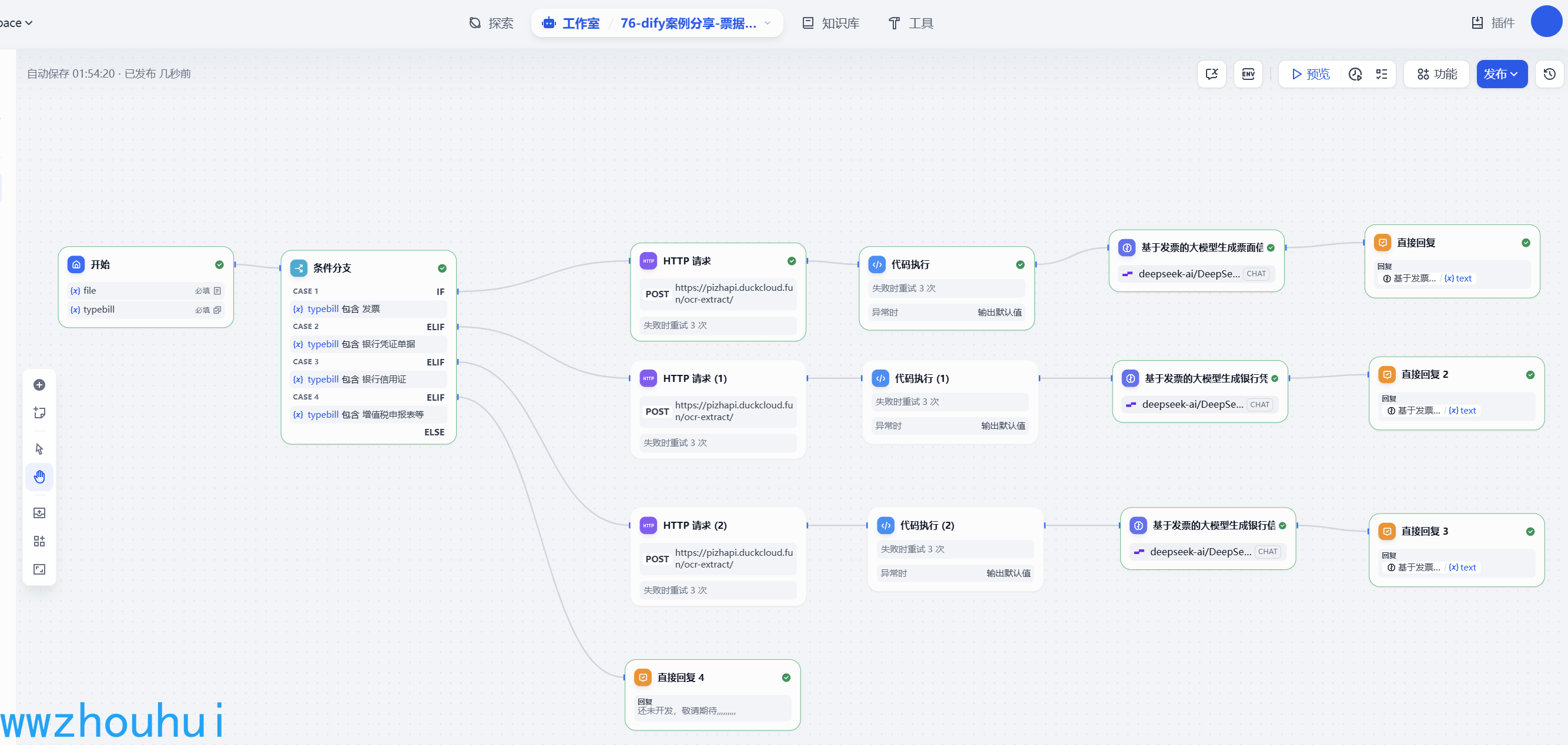 |
条件判断、http请求、LLM大语言模型、代码处理 | 2025年8月13日 | wwwzhouhui | 1.6.0 |
| 用 Qwen Code+Dify 一键生成交互式元素周期表网页.yml |  |
LLM大语言模型、代码处理 | 2025年8月10日 | wwwzhouhui | 1.6.0 |
| Dify 秘塔搜索工作流搭建教程与效果展示.yml | 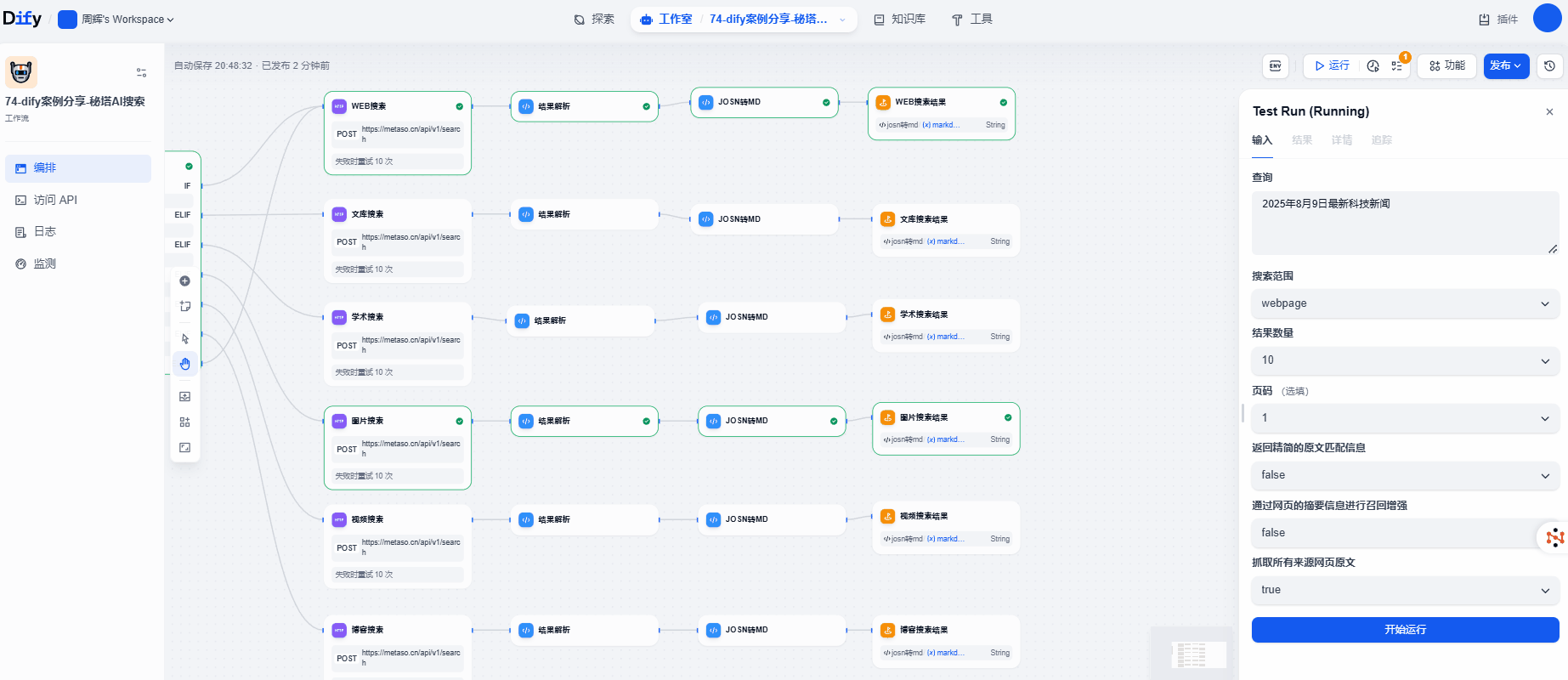 |
条件分支、http请求、代码处理、秘搭API | 2025年8月9日 | 阿文 | 1.6.0 |
| Dify 工作流一键生成发票申请预览,对接开票系统超简单.yml |  |
excel工具、LLM大语言模型、代码处理 | 2025年8月6日 | wwwzhouhui | 1.6.0 |
| 用 Dify 实现多语言 PDF 文档原格式翻译.yml | 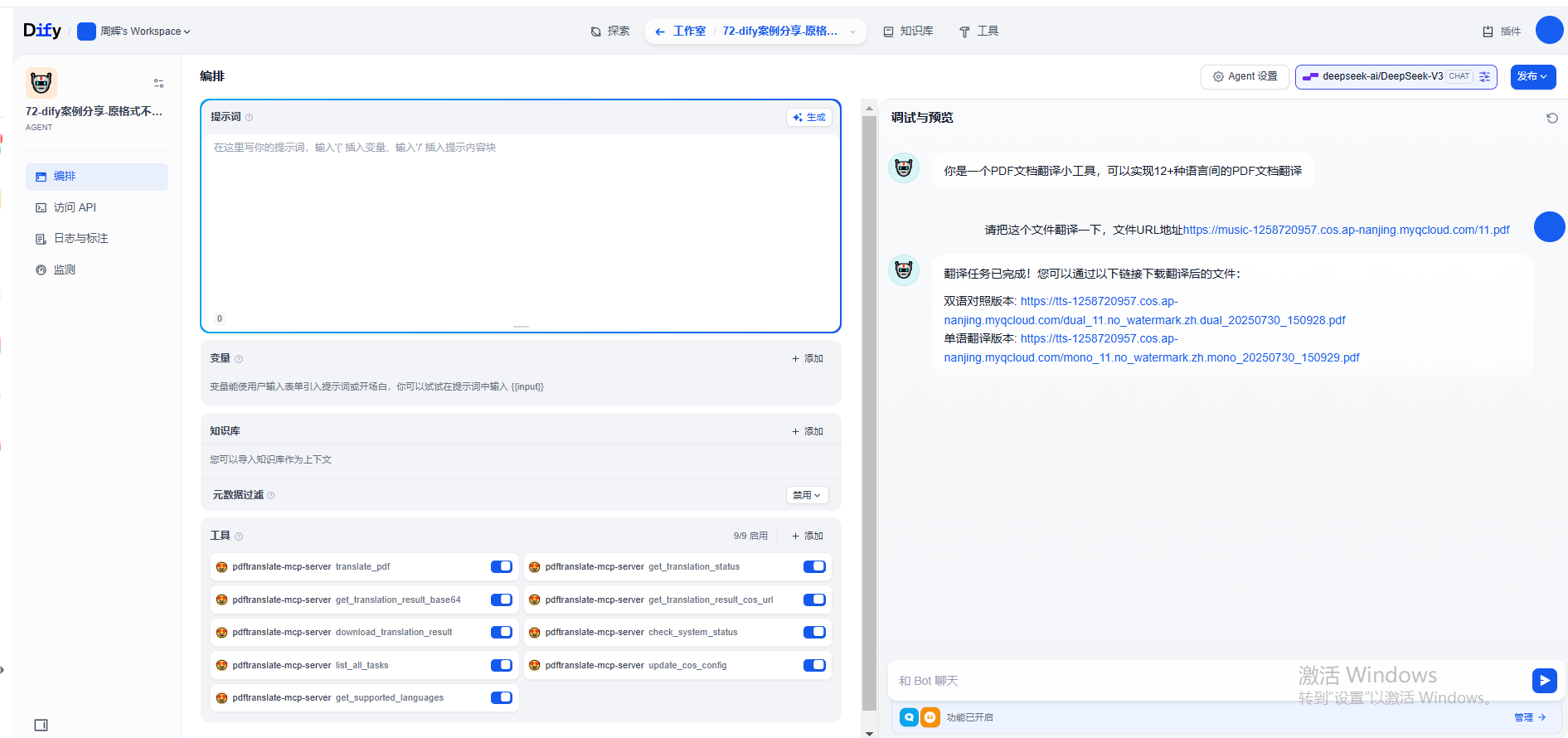 |
Agent、MCP-Server | 2025年7月30日 | wwwzhouhui | 1.6.0 |
| 用Kimi-K2+Mermaid 神器,一键生成系统架构图!小白也能秒会.yml | 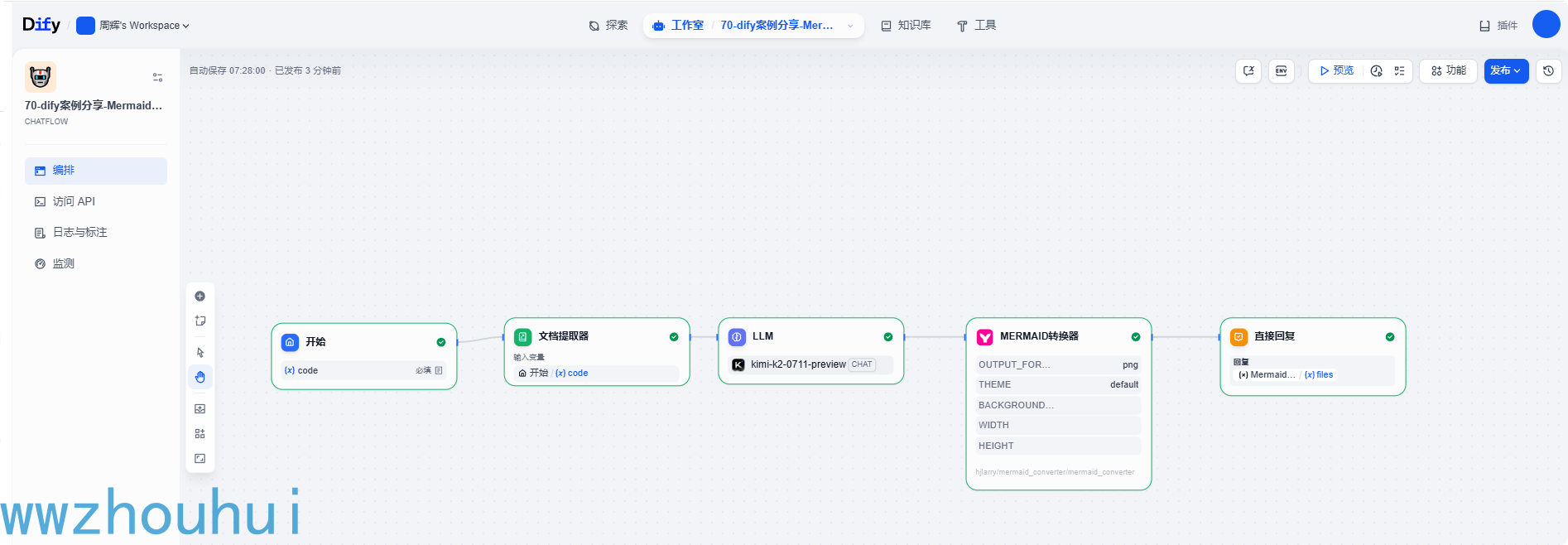 |
开始、文档管理器、LLM大语言、Mermaid插件 | 2025年7月19日 | wwwzhouhui | 1.6.0 |
| 用 Dify 一键搭建七牛云oss工作流 |  |
开始、Agent、LLM大语言模型、代码执行、直接回复 | 2025年7月11日 | GeekAPP | 1.4.3 |
| 用 Dify 一键搭建数学公式识别工作流,支持laTex |  |
开始、Agent、LLM大语言模型、代码执行、直接回复 | 2025年7月11日 | GeekAPP | 1.4.3 |
| 用 Dify 一键搭建中药科普工作流,文字 + 图片 + 视频全搞定 | 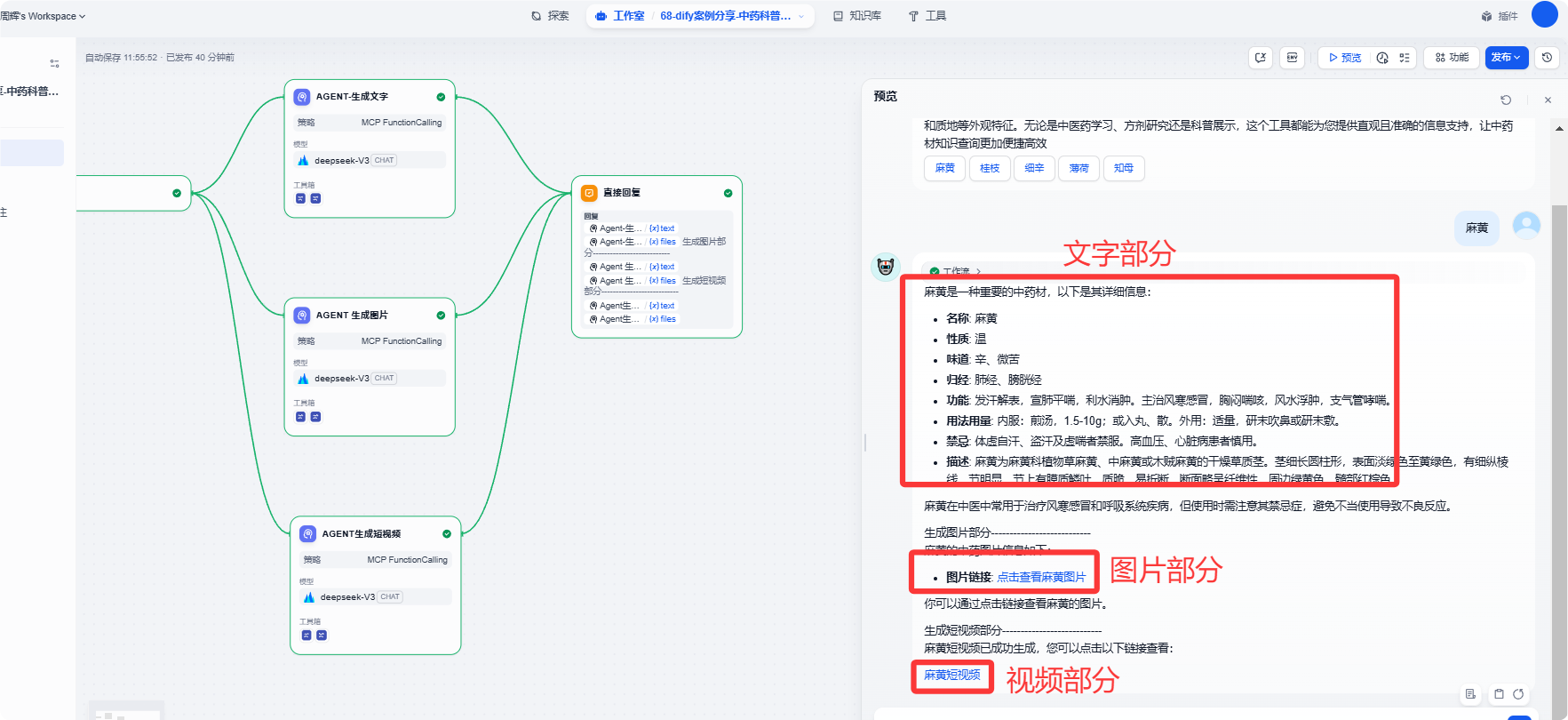 |
开始节点、AGENT、直接回复、自定义MCP-Server | 2025年7月3日 | wwwzhouhui | 1.4.3 |
| 用 Dify 一键生成 长安的荔枝金句 HTML 页面,三步搞定!.yml | 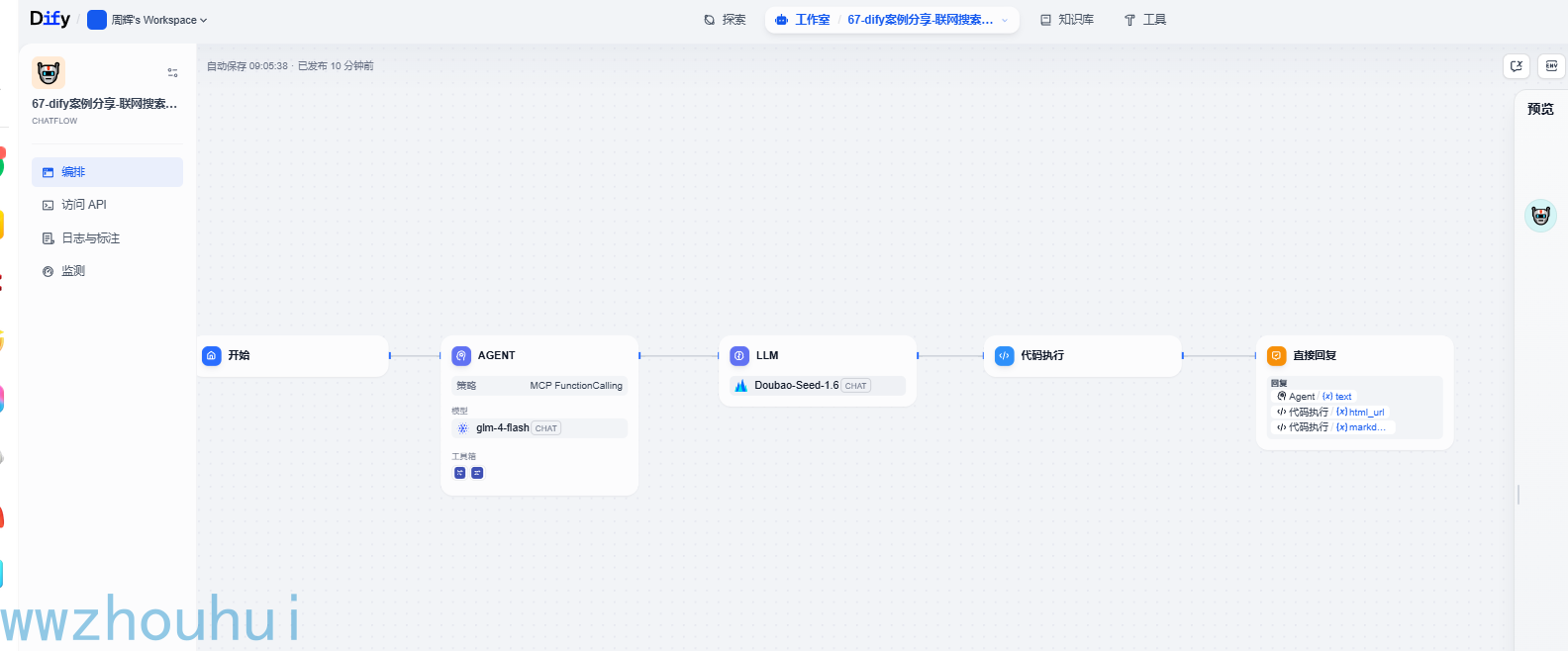 |
开始、Agent、LLM大语言模型、代码执行、直接回复 | 2025年6月27日 | wwwzhouhui | 1.4.3 |
| Dify 轻松实现 PPT 到 SVG 海报的华丽变身_合合版.yml | 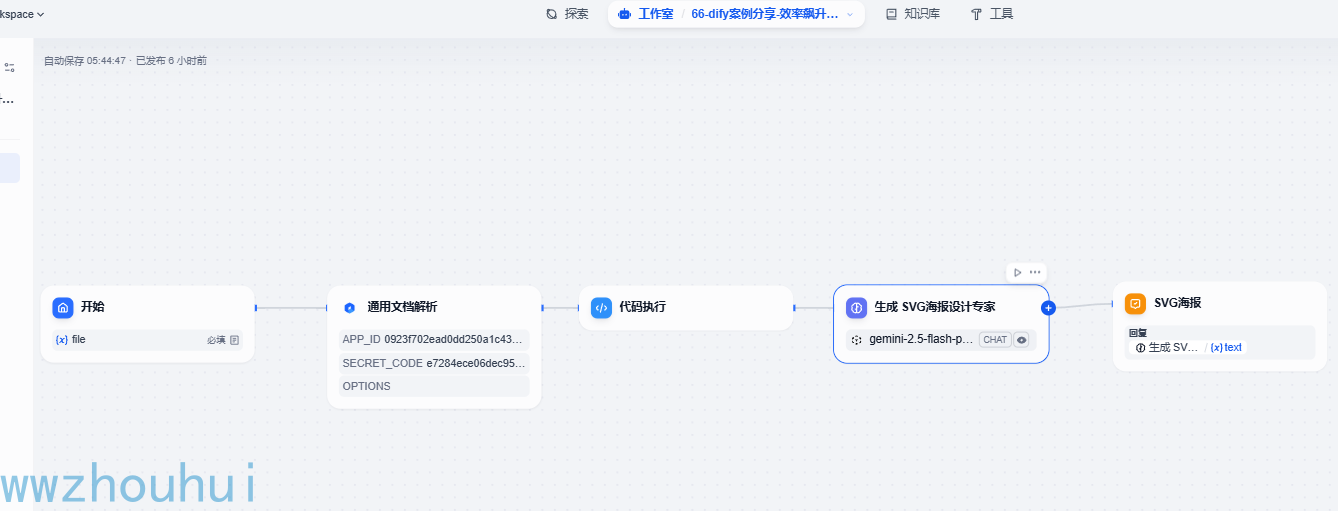 |
开始、合合通用文档解析、LLM大语言模型、直接回复 | 2025年6月22日 | wwwzhouhui | 1.4.3 |
| Dify 轻松实现 PPT 到 SVG 海报的华丽变身-MinerU版.yml | 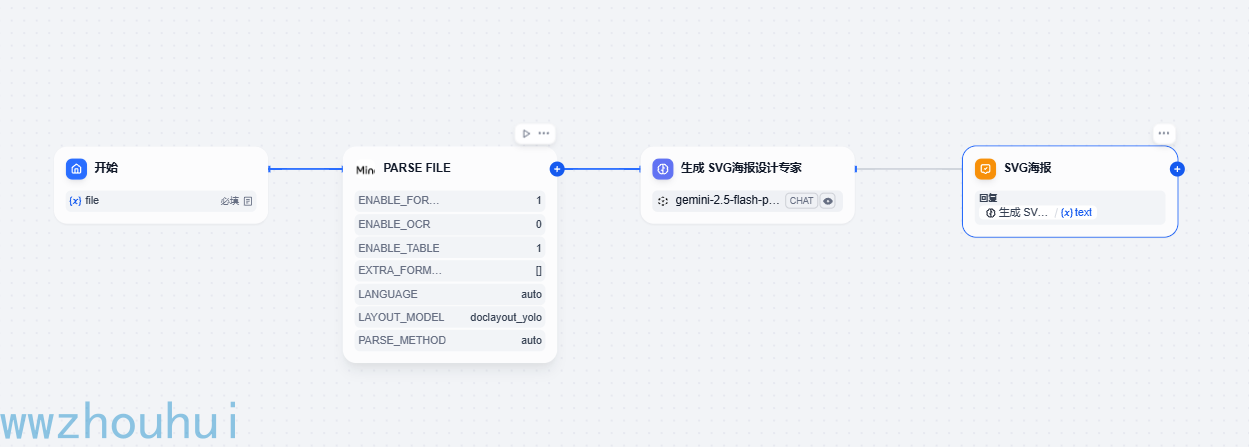 |
开始、MinerU、LLM大语言模型、直接回复 | 2025年6月22日 | wwwzhouhui | 1.4.3 |
| 中药科普知识工作流.yml | 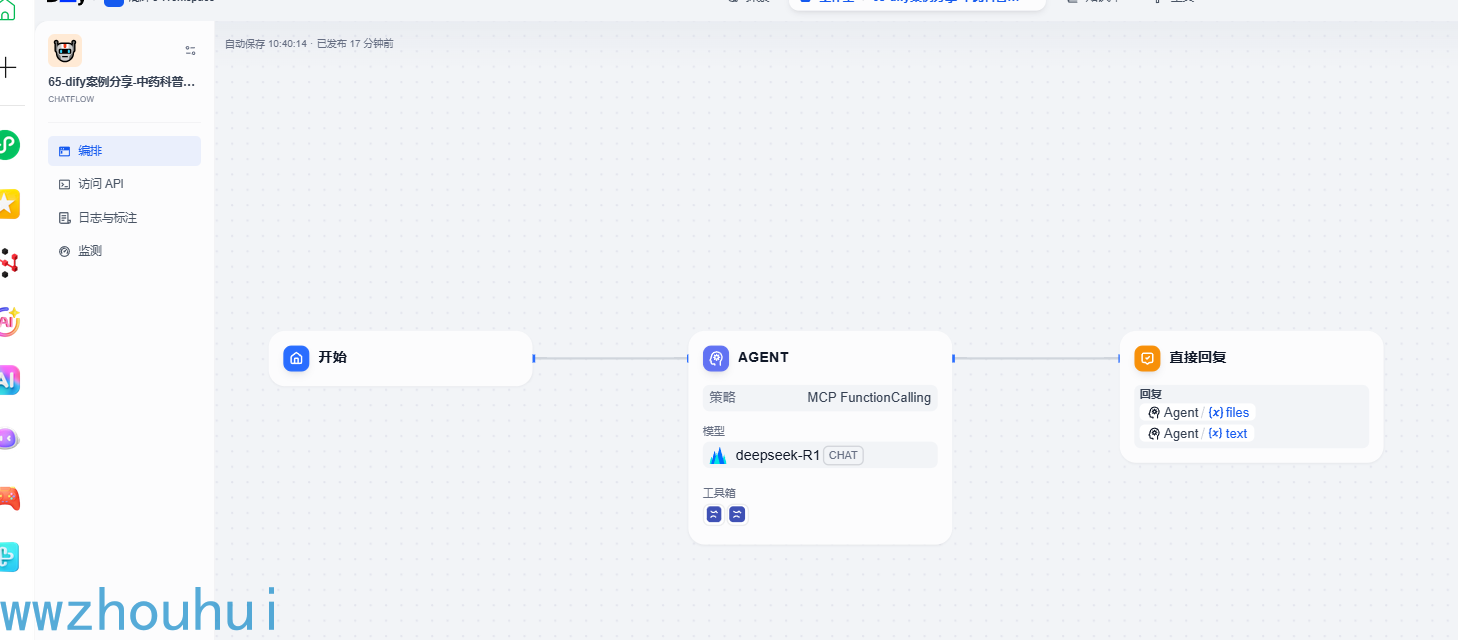 |
开始节点、AGENT、直接回复、自定义MCP-Server | 2025年6月18日 | 醒醒、wwwzhouhui | 1.4.0 |
| 豆包文本生成图、文生视频+小支付功能 | 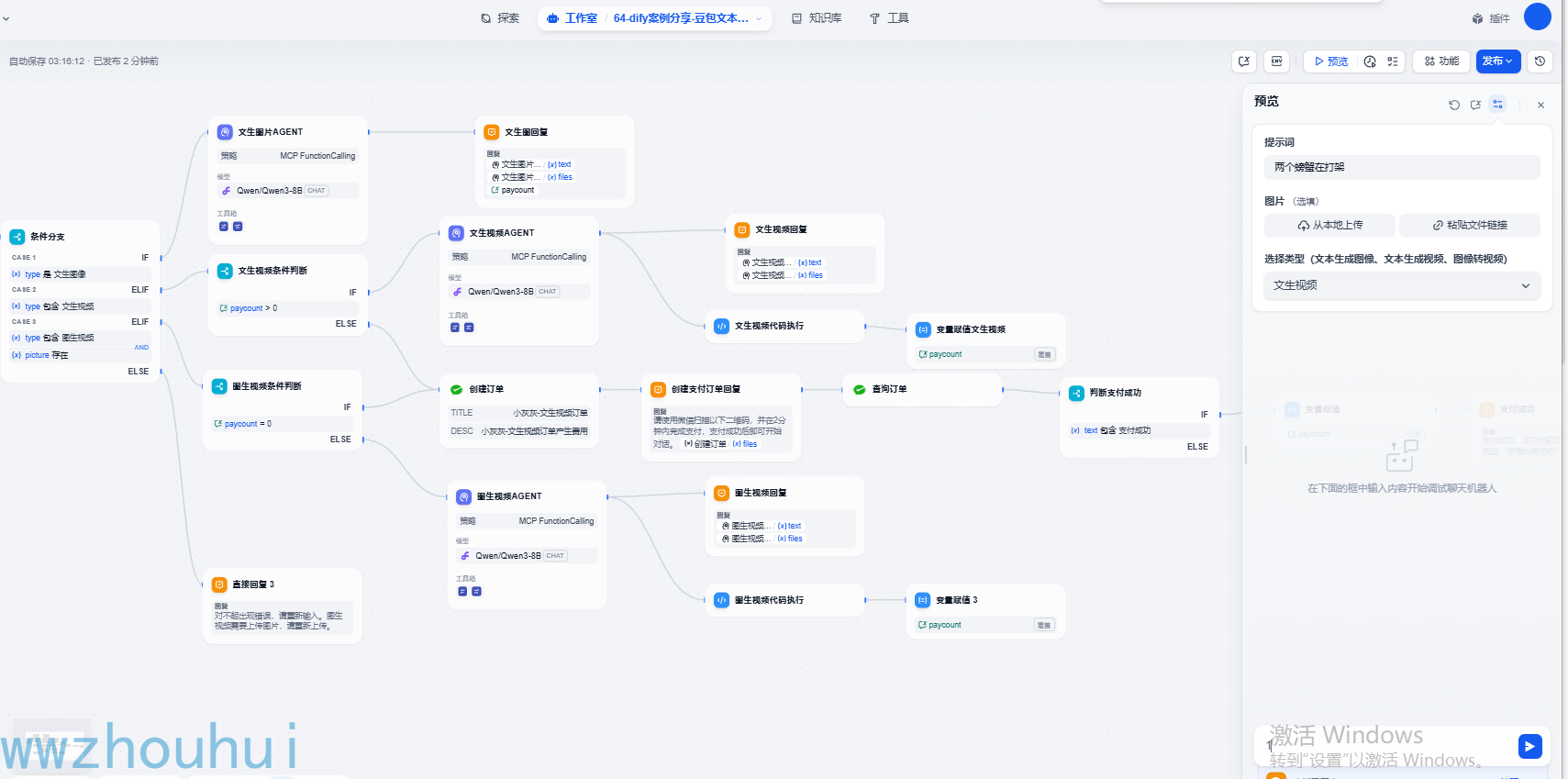 |
开始节点、条件分支、AGENT、小支付、直接回复 | 2025年6月14日 | wwwzhouhui | 1.4.0 |
| N8N+Dify 打造新闻定时推送流.yml | 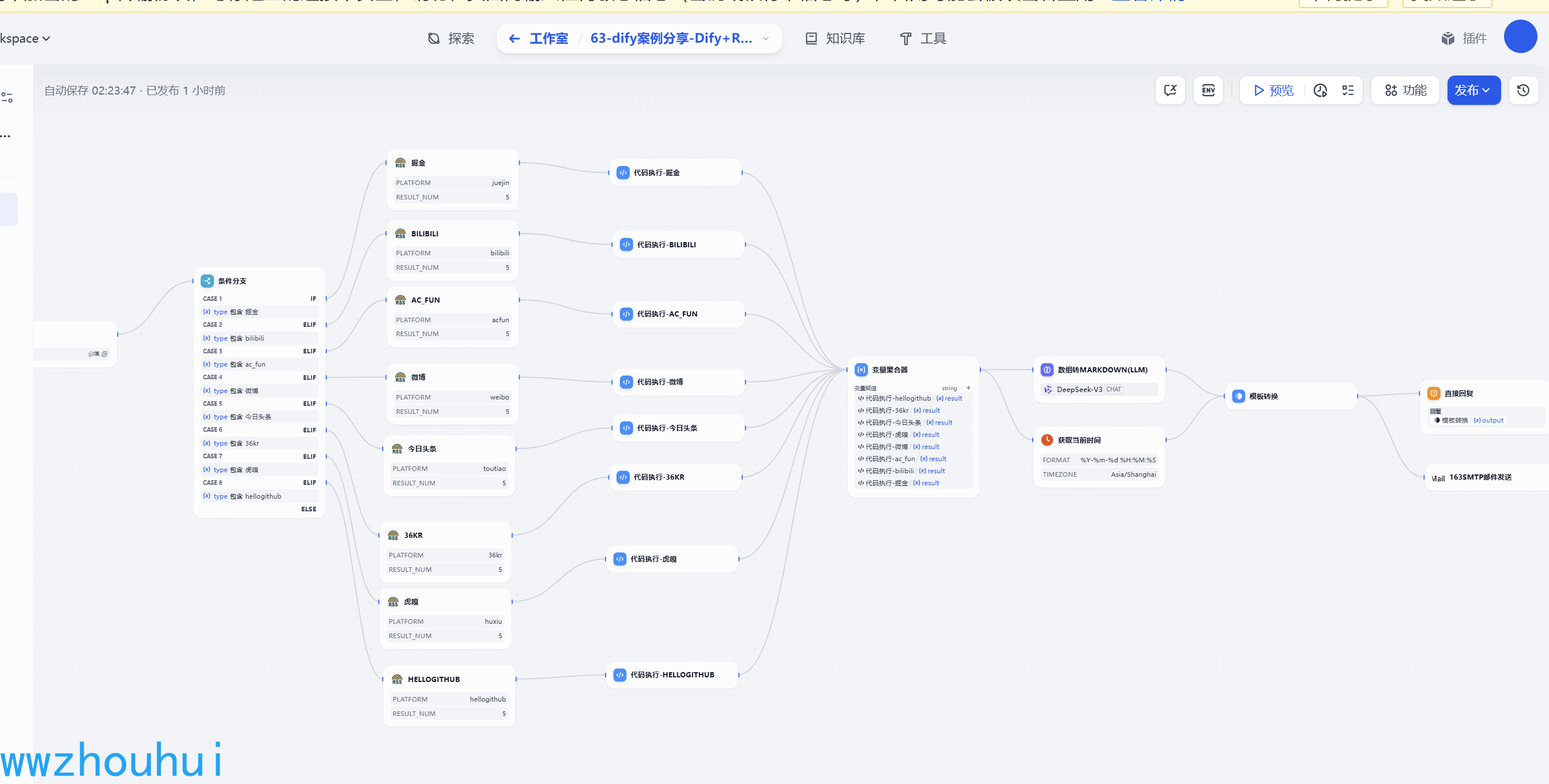 |
条件分支、rookie_rss(第三方工具)、变量聚合器、代码执行、llm文本模型、获取时间(第三方工具)、163SMTP邮件发送 | 2025年6月10日 | wwwzhouhui | 1.4.0 |
| Dify+RSS 聚合 8 大平台实时热点,新闻获取效率飙升 300%.yml | 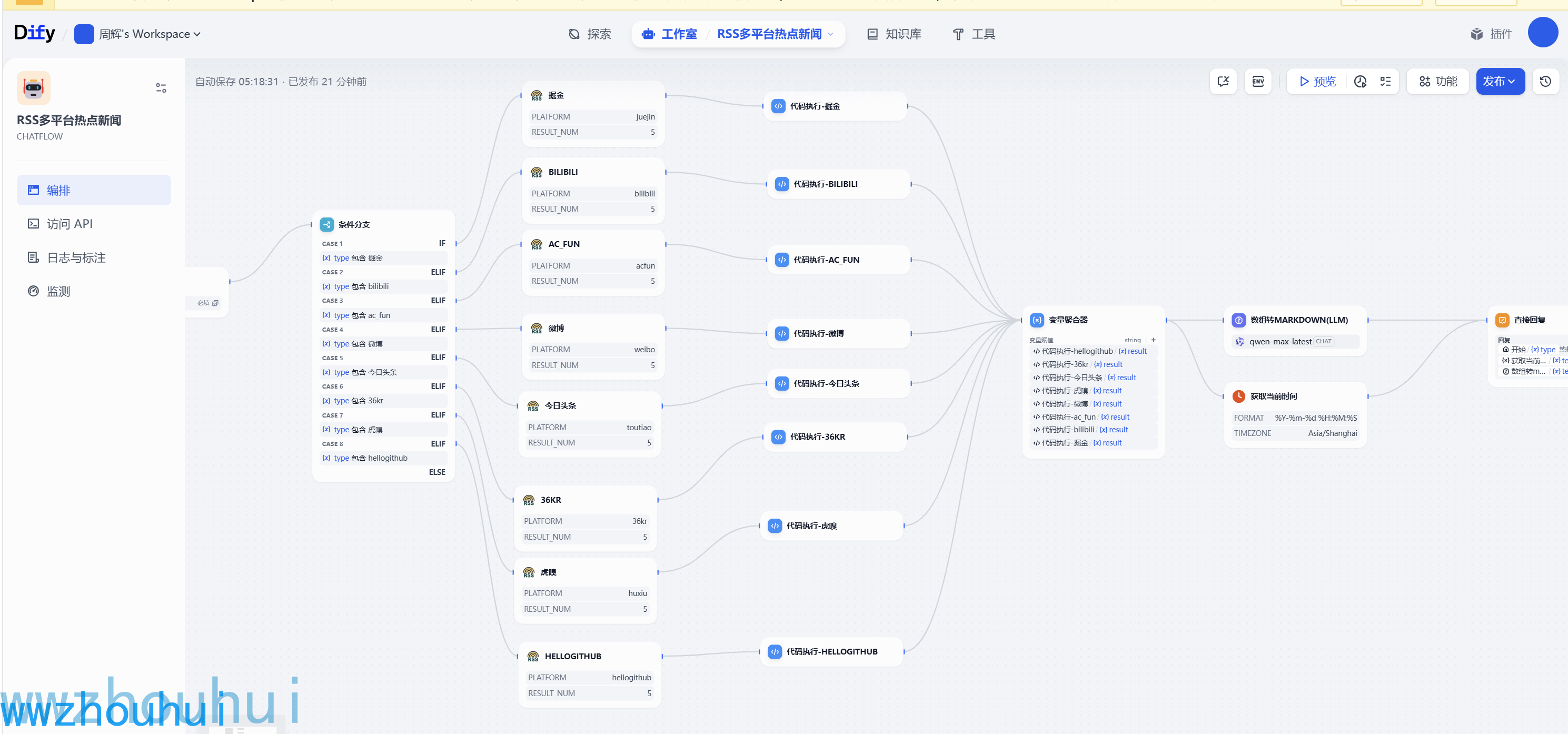 |
条件分支、rookie_rss(第三方工具)、变量聚合器、代码执行、llm文本模型、获取时间(第三方工具) | 2025年6月9日 | wwwzhouhui | 1.4.0 |
| 批量识别PDF电子发票信息生成excle表格.yml | 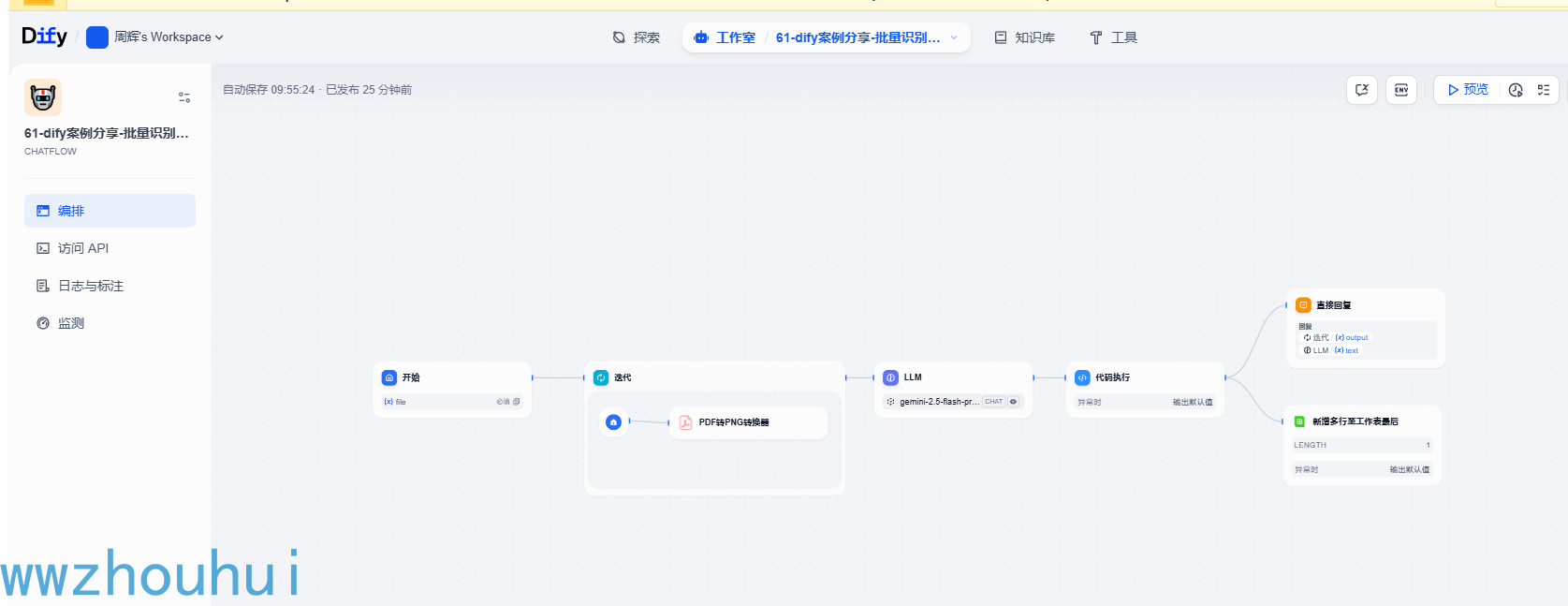 |
迭代、pdf转png转换器(第三方工具)、多模态大语言模型、代码执行、飞书表格 | 2025年6月6日 | wwwzhouhui | 1.4.0 |
| 豆包文本生成图像、文本生成视频以及图像转视频.yml | 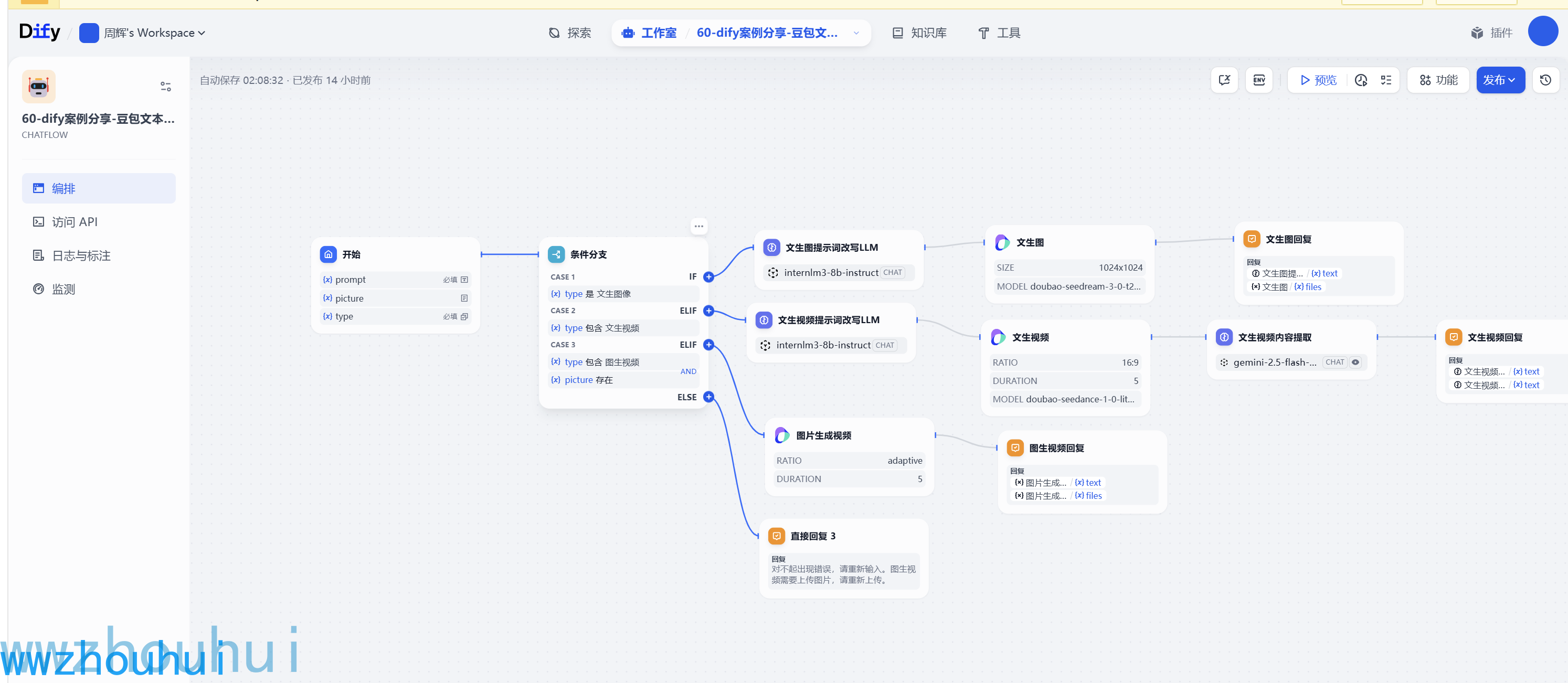 |
条件分支、llm大语言模型、Doubao Image and Video Generator 的插件 | 2025年6月3日 | wwwzhouhui | 1.4.0 |
| 衡水体英语作文评分工作流.yml | 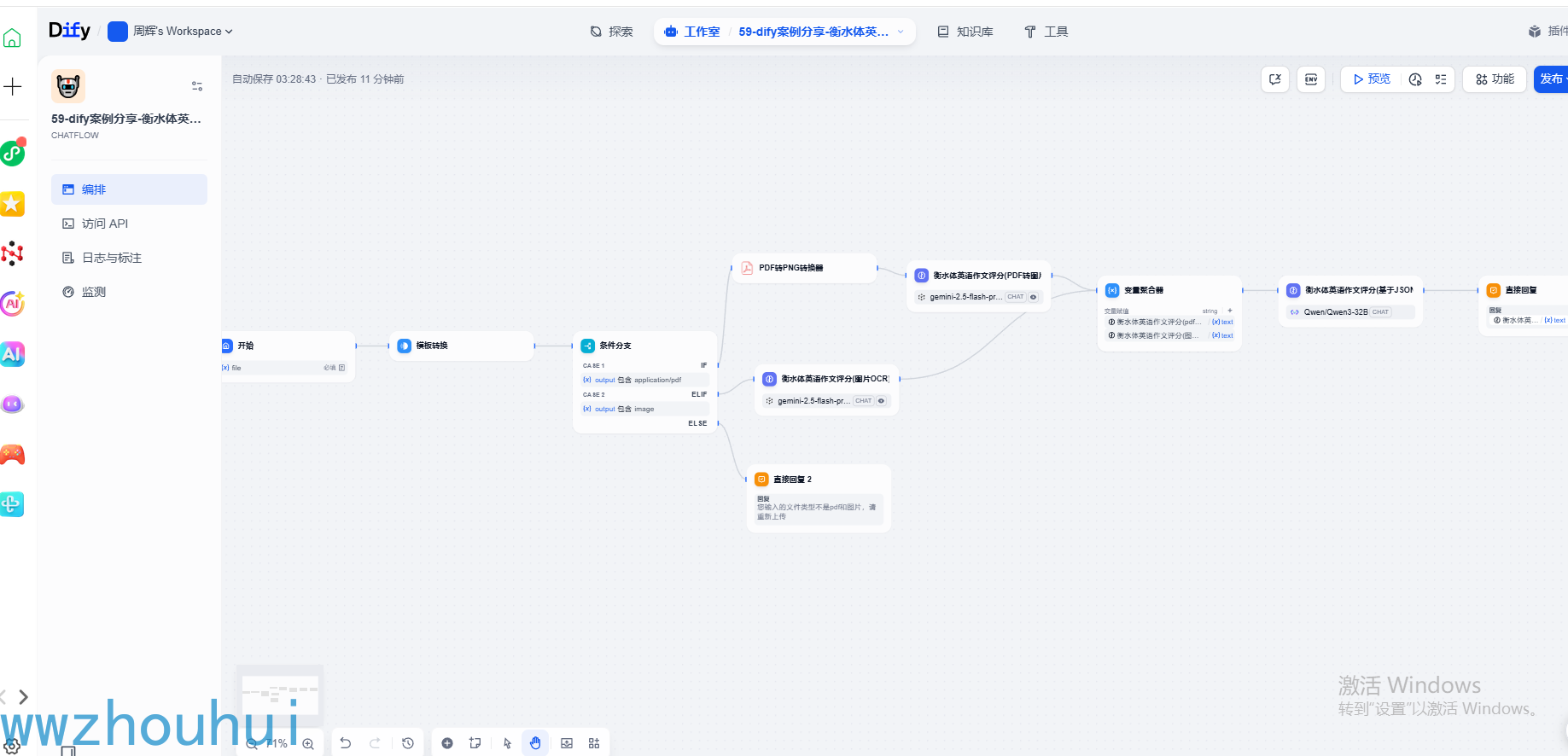 |
模板转换、条件分支、pdf转png转换器(第三方工具)、基于多模态llm大语言模型、变量聚合器、基于文本大语言模型 | 2025年6月2日 | wwwzhouhui | 1.4.0 |
| 中小学数学错题本-生成同类型题.yml | 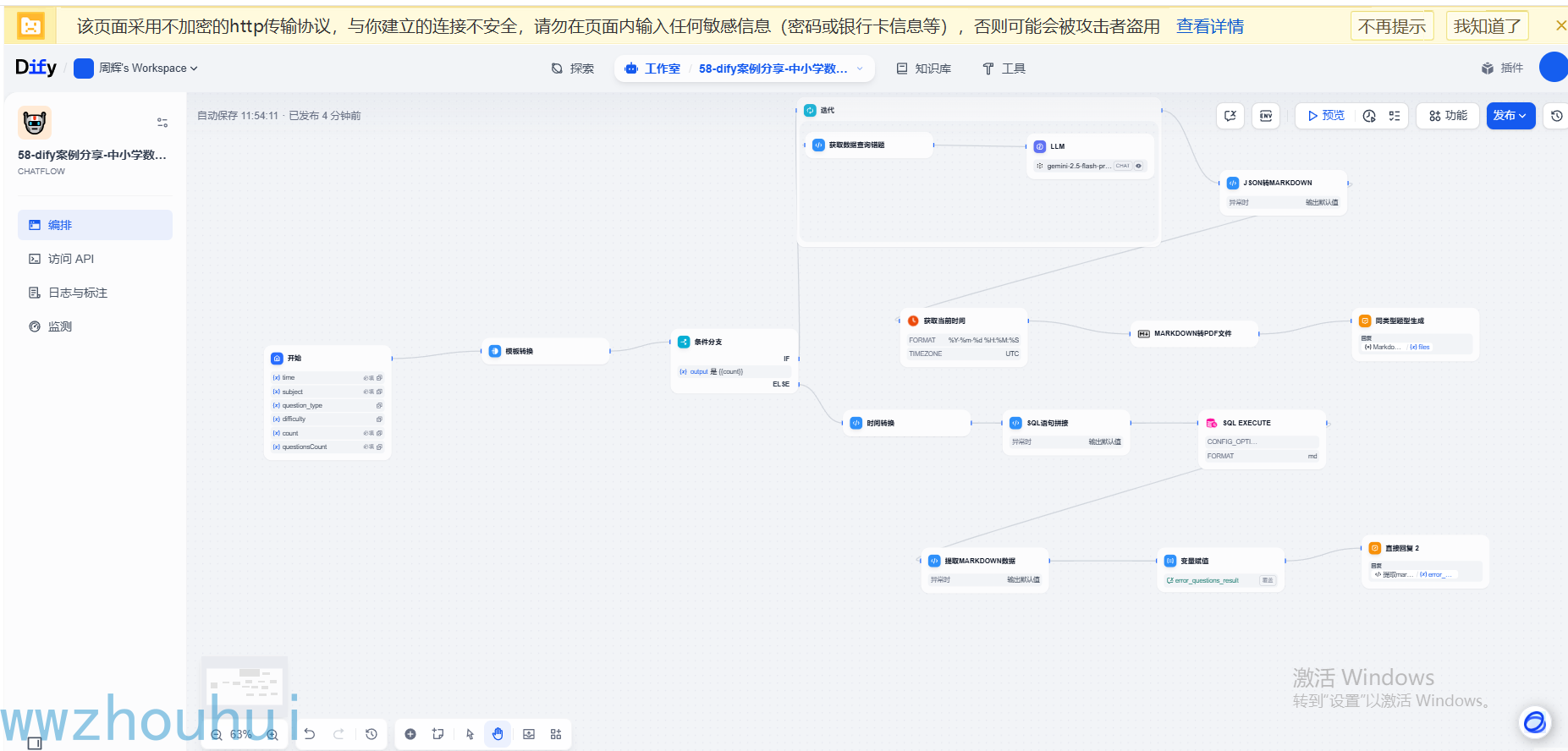 |
问题分类器、模板转换、条件分支、代码处理、SQL Execute、变量赋值、迭代、获取当前时间、Markdown转PDF文件、LLM大语言模型等 | 2025年5月30日 | wwwzhouhui | 1.4.0 |
| 中小学数学错题本-错题收集篇.yml | 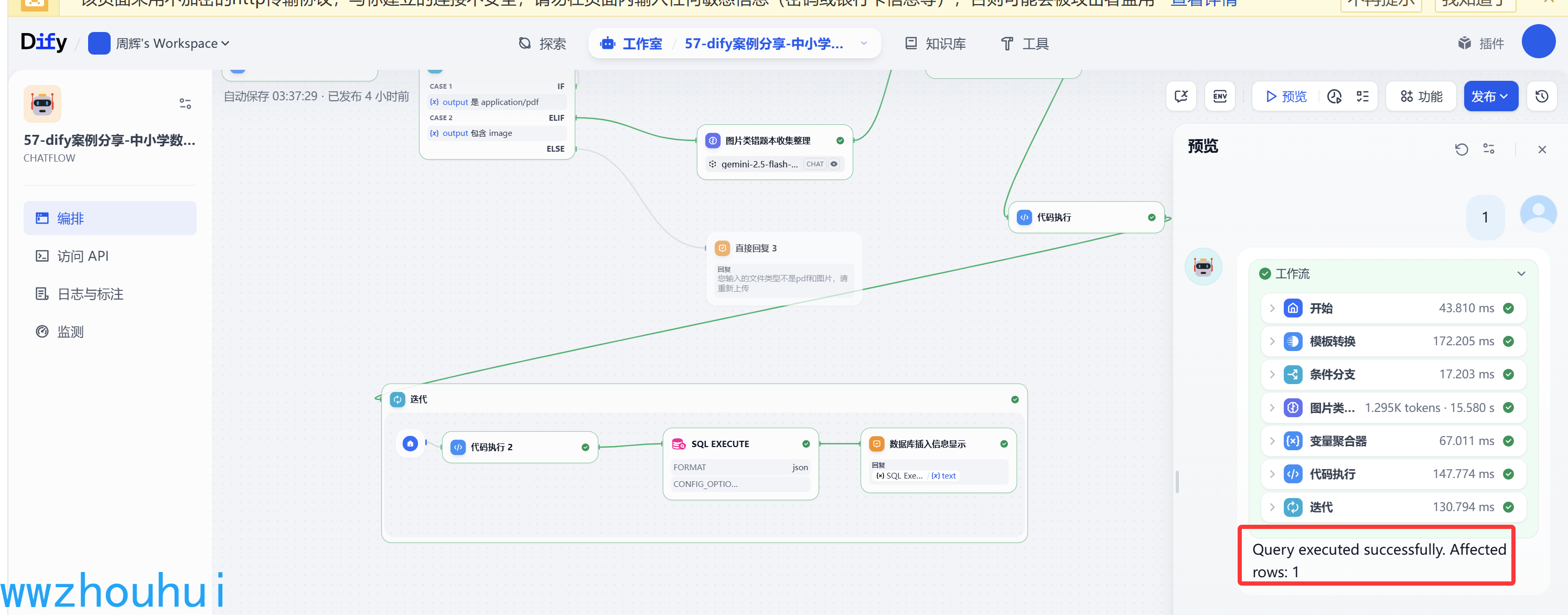 |
开始节点、模板转换、条件分支、pdf转png转换器(第三方工具)、基于多模态llm大语言模型、变量聚合器、代码执行、迭代、SQL Execute(第三方工具) | 2025年5月28日 | wwwzhouhui | 1.4.0 |
| 0 代码实现企业画像!16 种图表,解锁数据查询新姿势.yml | 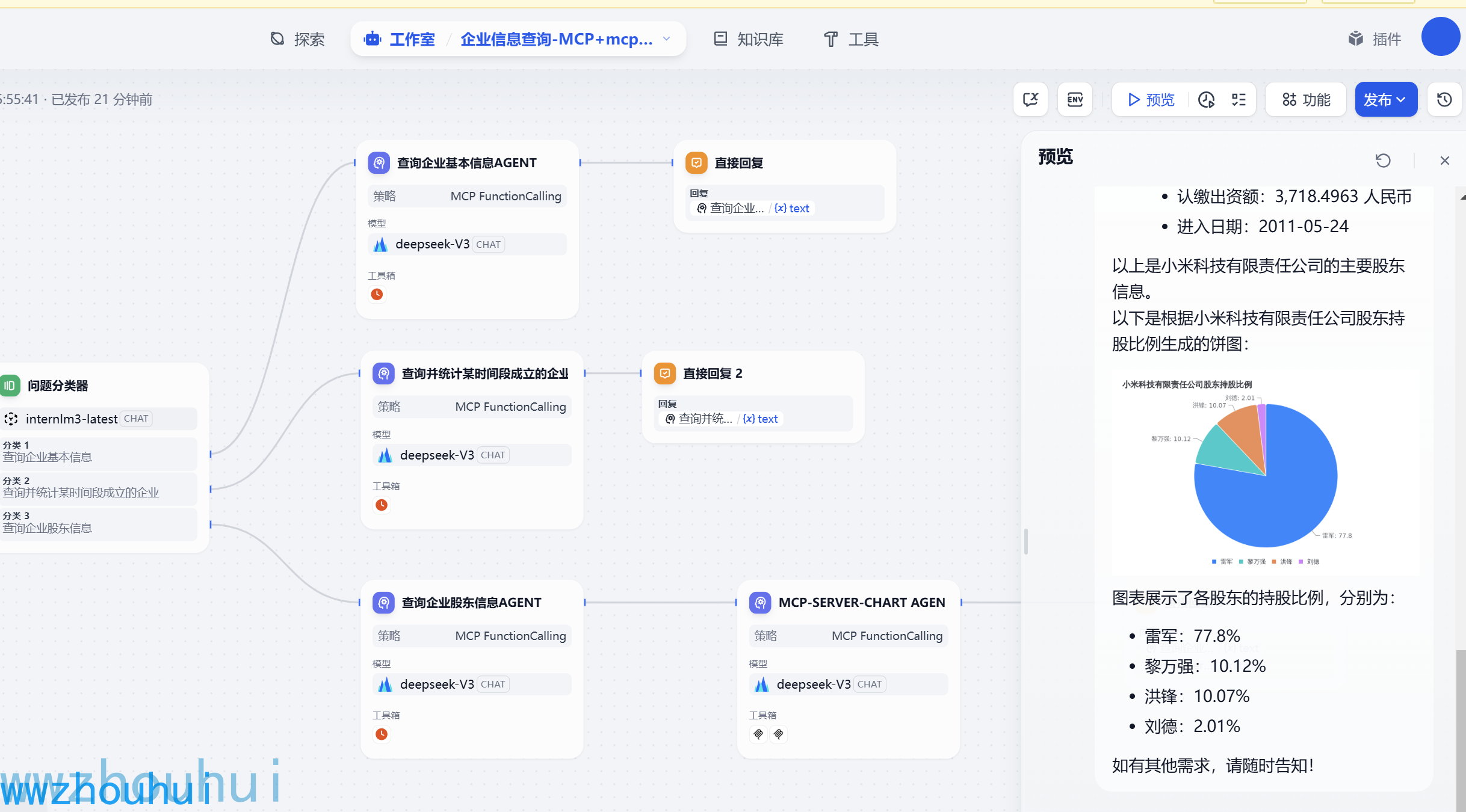 |
问题分类器、mcp-sse、mcp-server-chart、MCP Agent 策略工具、企业信息查询的MCP-Server | 2025年5月27日 | wwwzhouhui | 1.4.0 |
| 英语单词口语练习.yml | 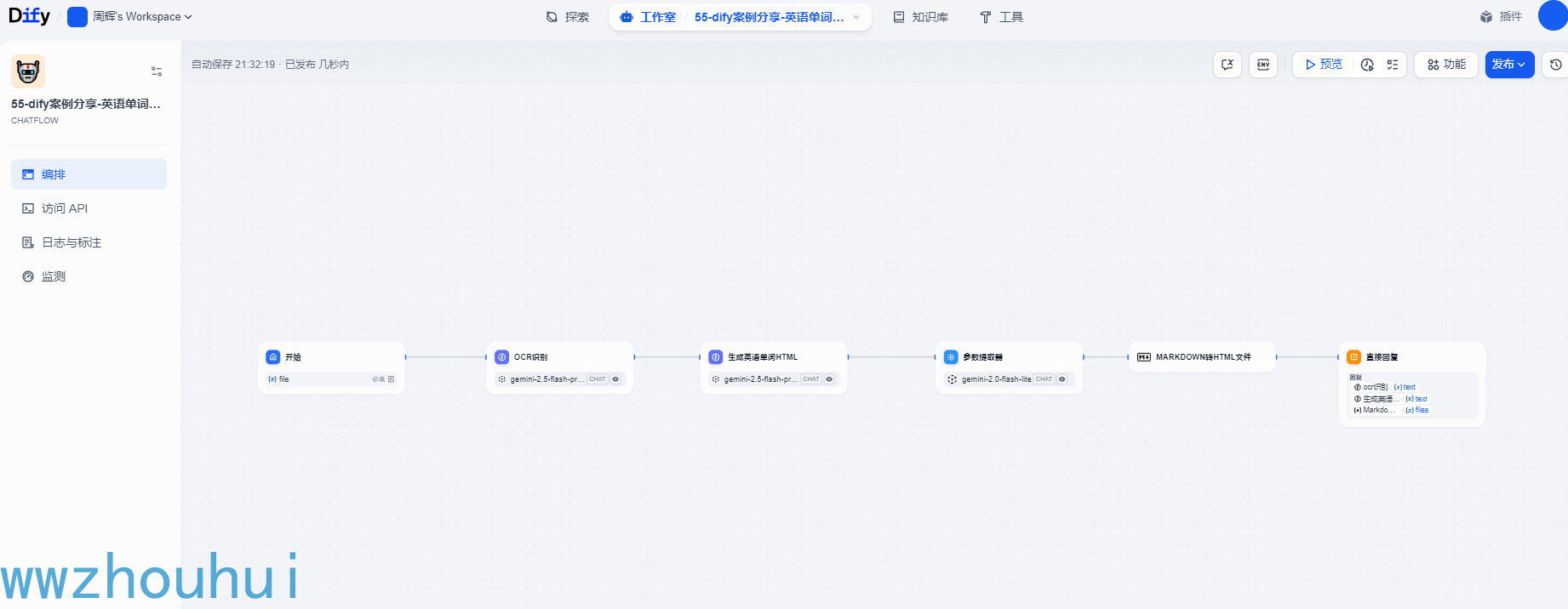 |
llm大语言模型、参数提取器、Markdown转HTML文件 | 2025年5月24日 | wwwzhouhui | 1.4.0 |
| 海报封面生成工作流-Wanx 文生图.yml | 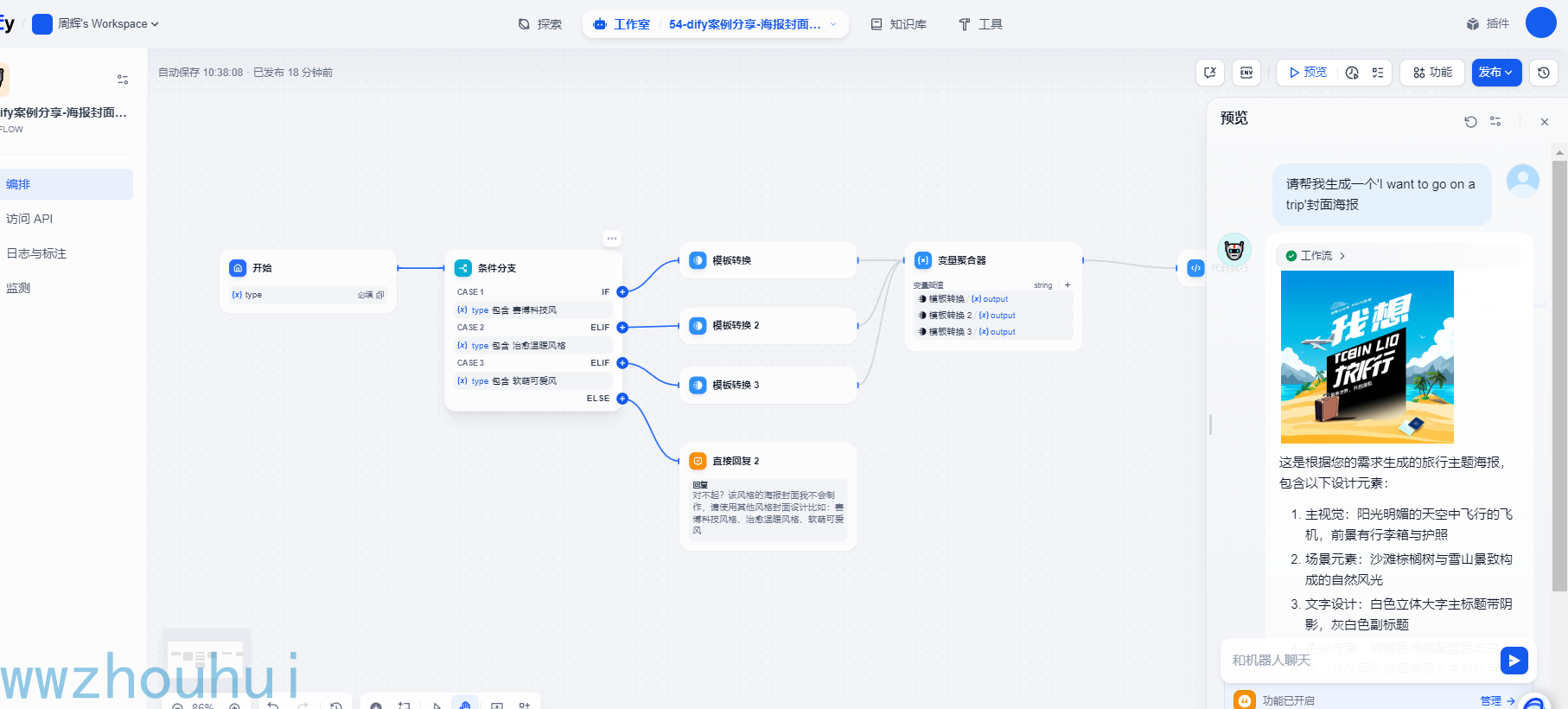 |
阿里云百炼MCP Agent(Wanx 文生图)、条件分支、变量聚合器、模版转换、代码执行 | 2025年5月23日 | wwwzhouhui | 1.4.0 |
| 12306mcp火车票信息查询-chatflow.yml | 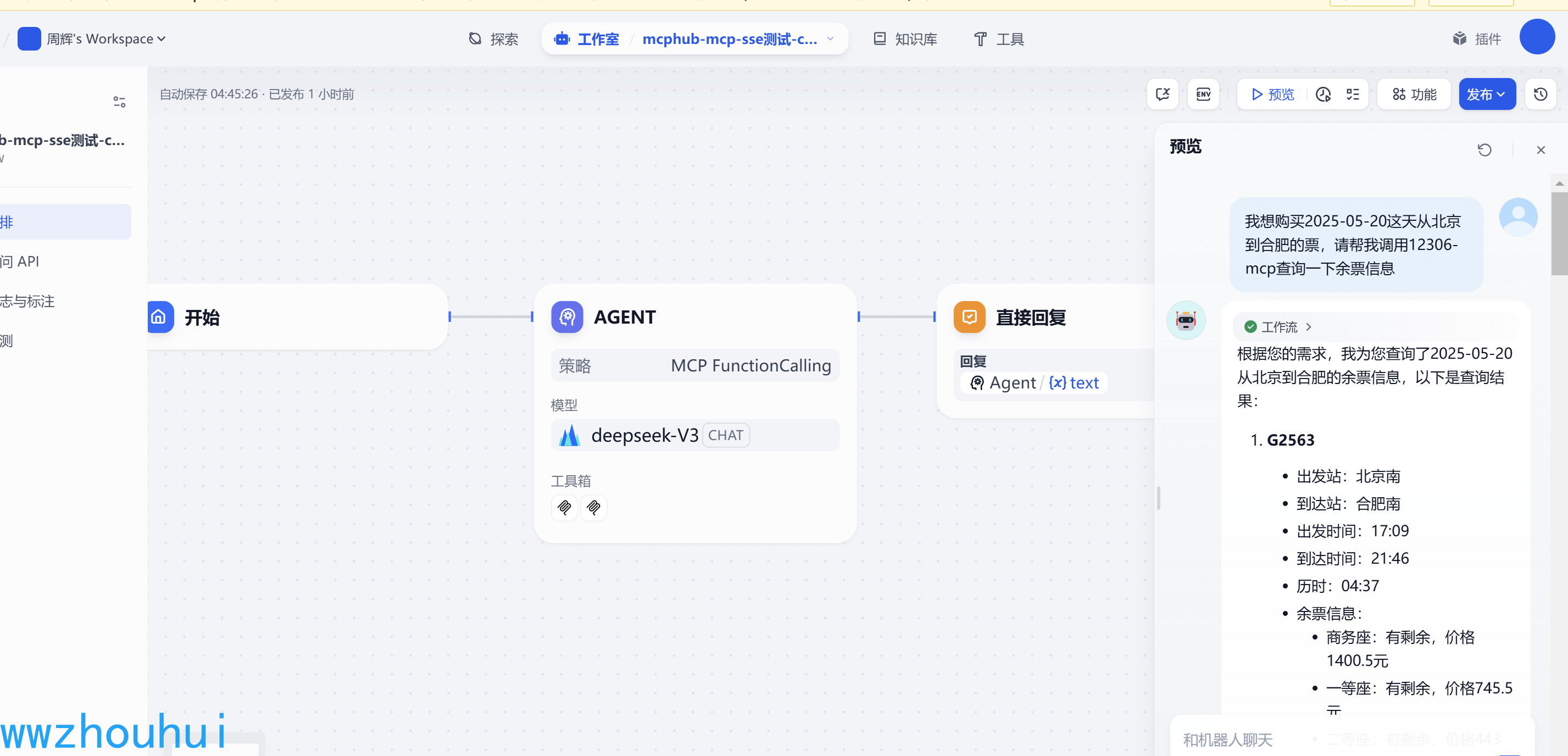 |
AGNET策略工具、12306MCP、mcphub | 2025年5月21日 | wwwzhouhui | 1.4.0 |
| 3步实现音视频转文字会议纪要从此无忧.yml | 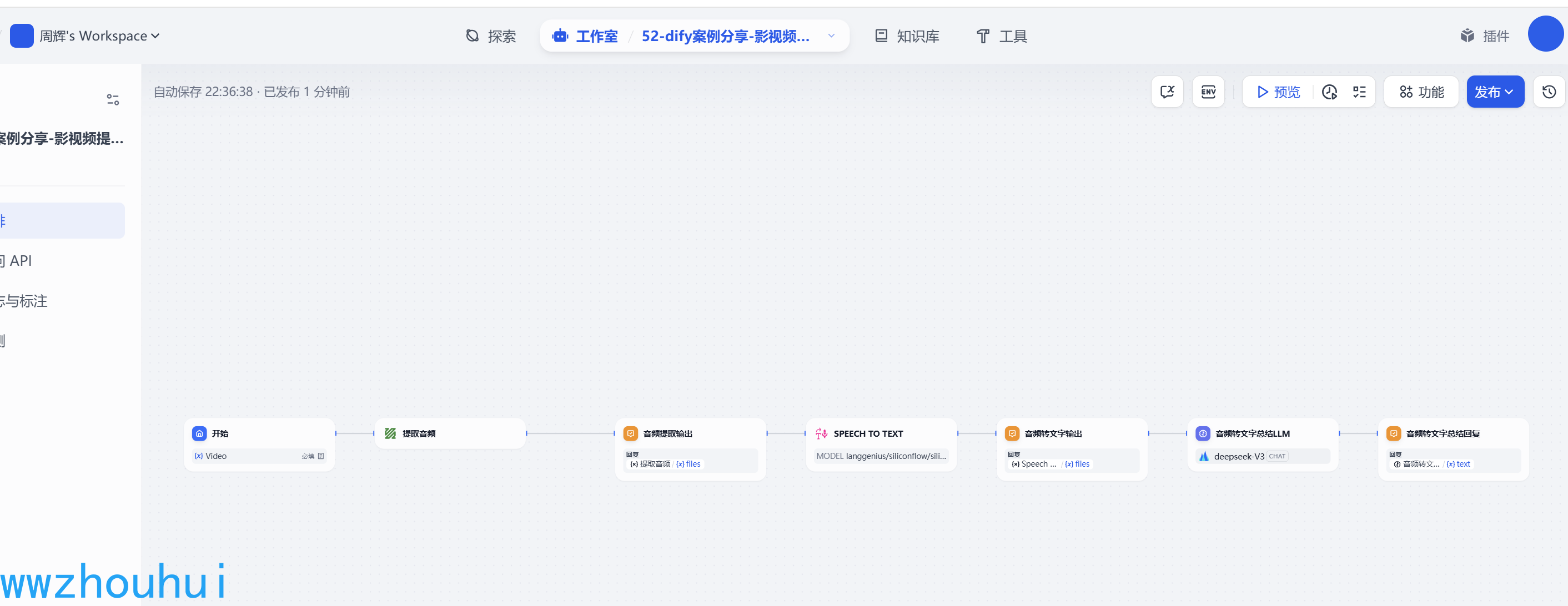 |
ffmpeg、Speech To Text、ASR模型、LLM大语言模型 | 2025年5月20日 | wwwzhouhui | 1.4.0 |
| 基于上市公司财报分析结果html分析报告(整合MinerU+edgeone-pages-mcp).yml | 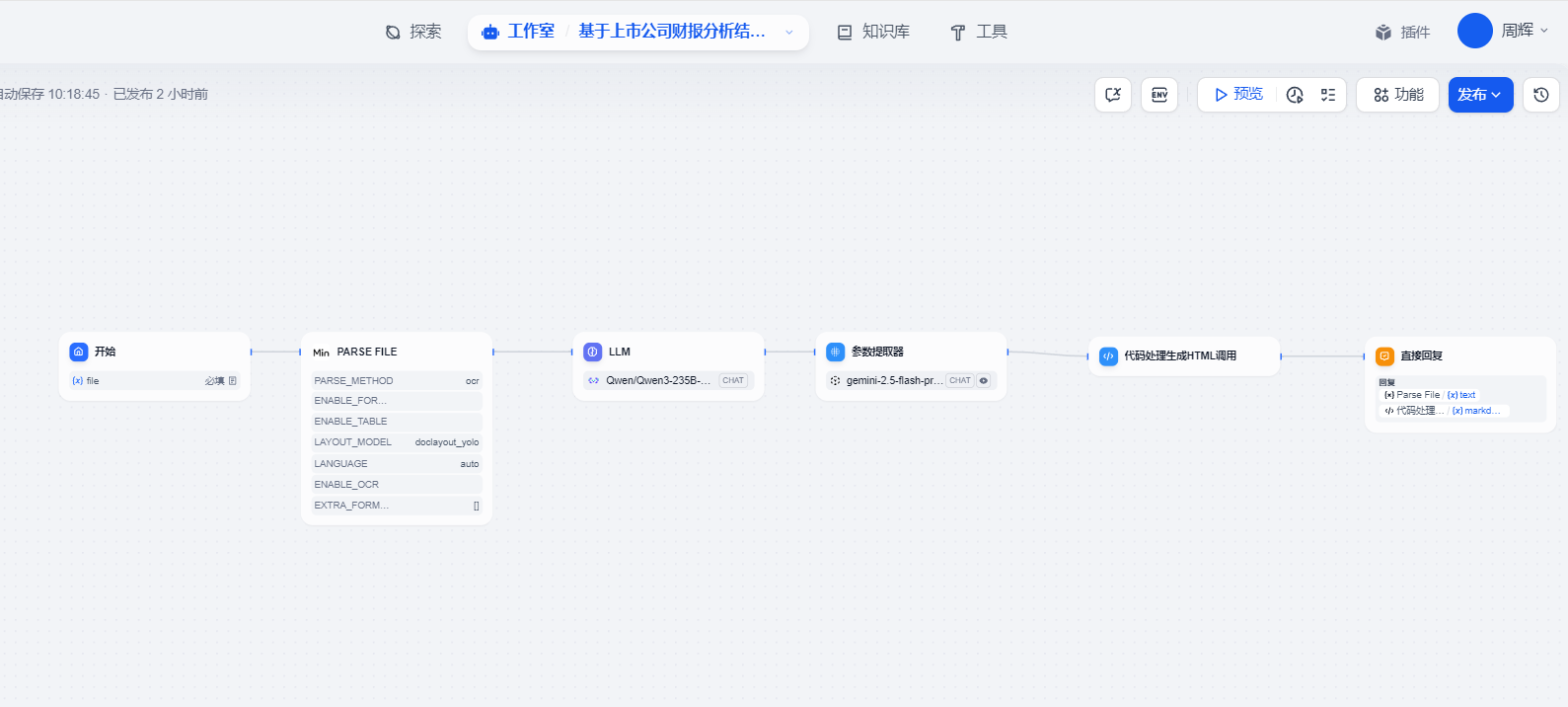 |
mineru插件、LLM大语言模型、参数提取器、代码处理生成 | 2025年5月13日 | wwwzhouhui | 1.13 |
| 多模态图像编辑(HiDream-E1-Full)chatflow.yml | 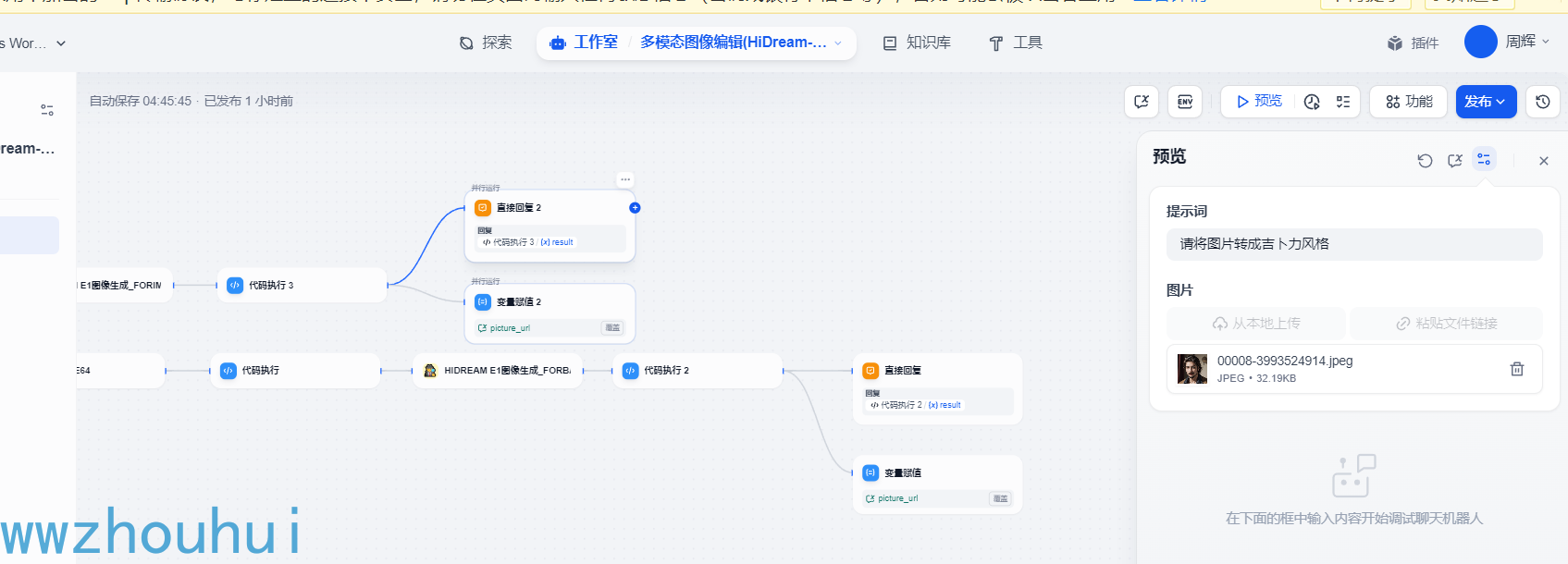 |
图片转base64、条件分支、代码转换、变量赋值、2个自定义工具 | 2025年5月10日 | wwwzhouhui | 1.13 |
| 图片生成html,网页小游戏(1panel mcpsse).yml | 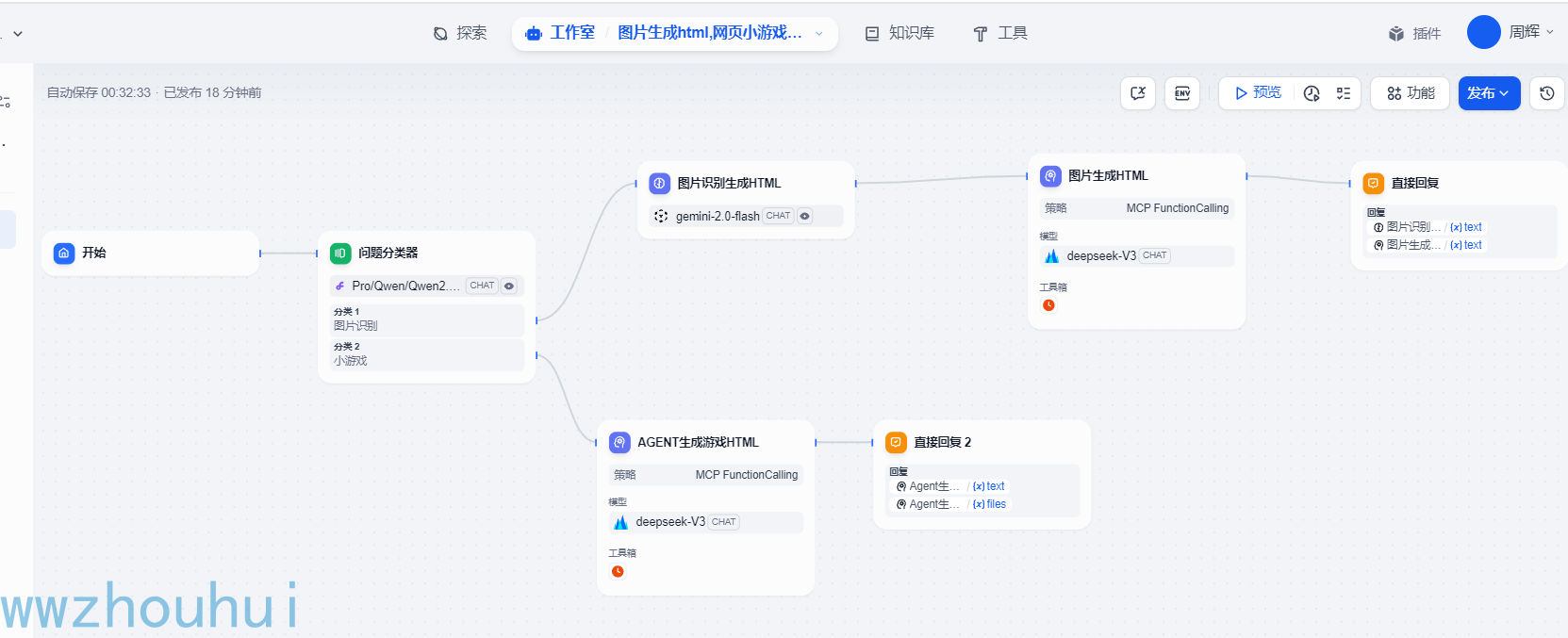 |
1panelmcp、问题分类器、AGNET策略工具、edgeone-pages-mcp-server | 2025年5月3日 | wwwzhouhui | 1.13 |
| 通用合同审查助手.yml | 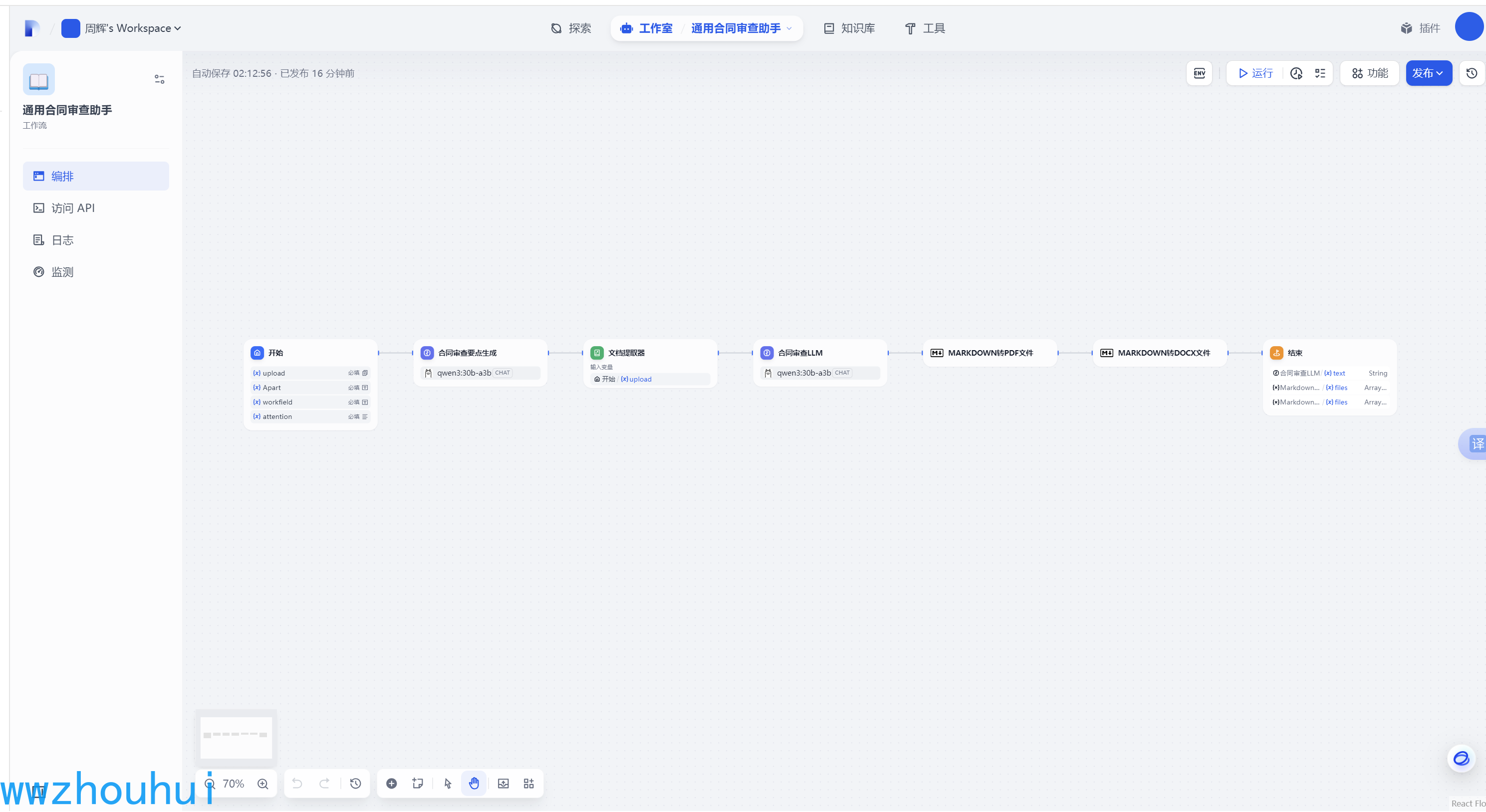 |
qwen3最新模型、文档提取器、markdown转换器 | 2025年4月29日 | 堕落奶酪、wwwzhouhui | 1.3.1 |
| 魔搭社区MCP-Server.yml | 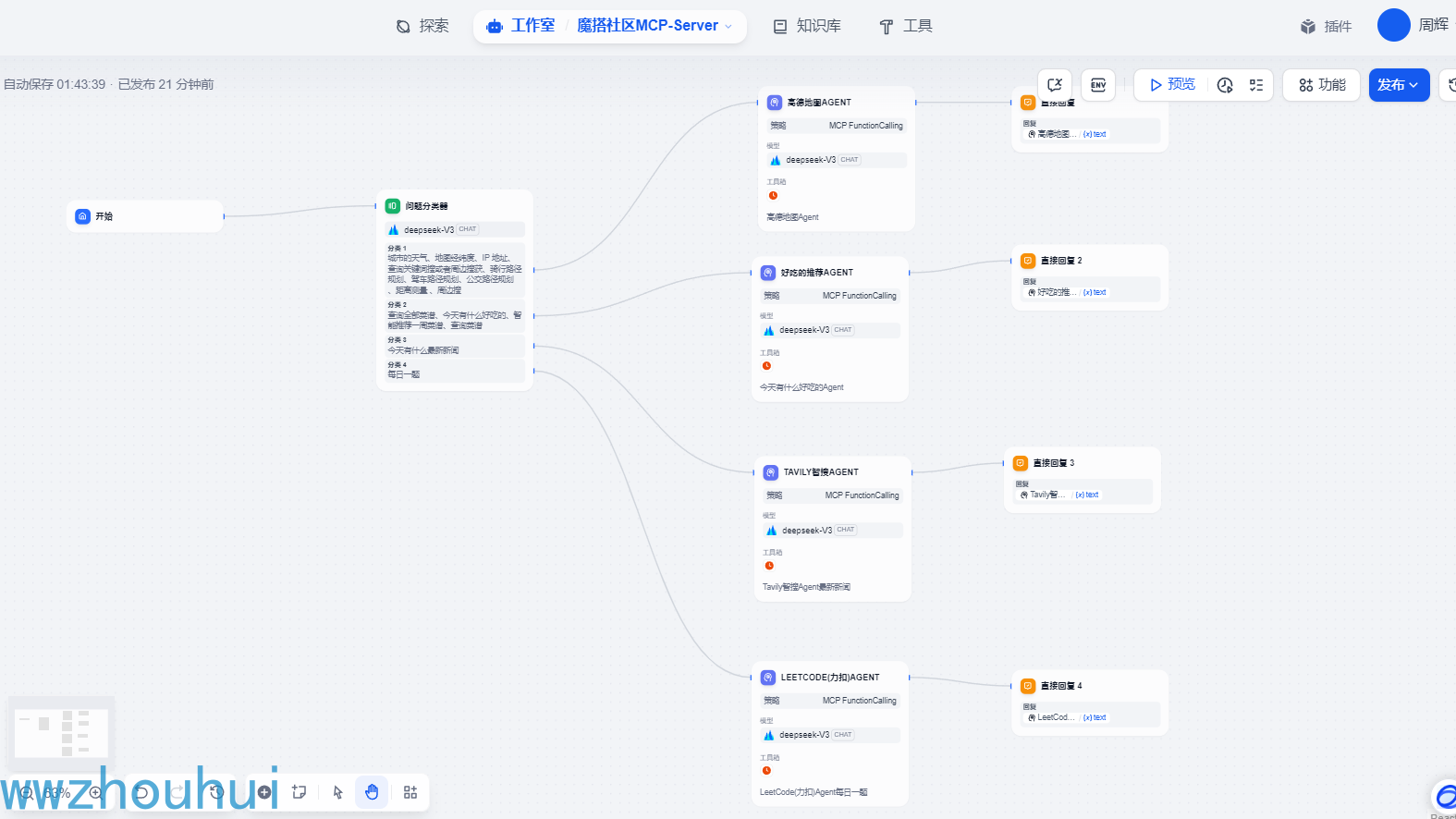 |
问题分类器、AGNET策略工具、魔搭社区MCP-server(高德MCP 、好吃的、Tavily、LeetCode(力扣)) | 2025年4月26日 | wwwzhouhui | 1.1.3 |
| 基于表结构的agent text2sql.yml | 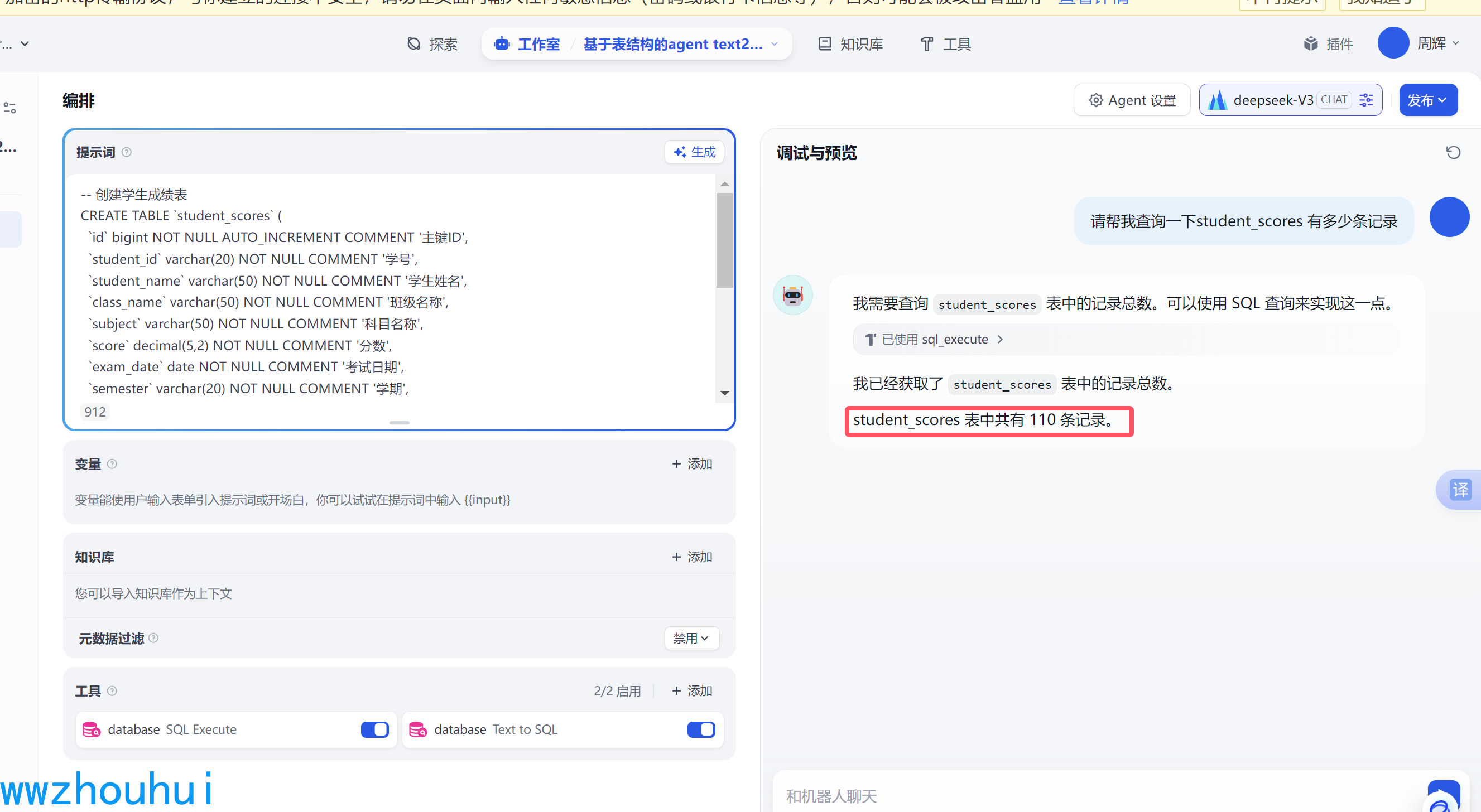 |
AGNET | 2025年4月24日 | wwwzhouhui | 1.1.3 |
| 基于知识库+agent实现text2sqlchatflow工作流.yml | 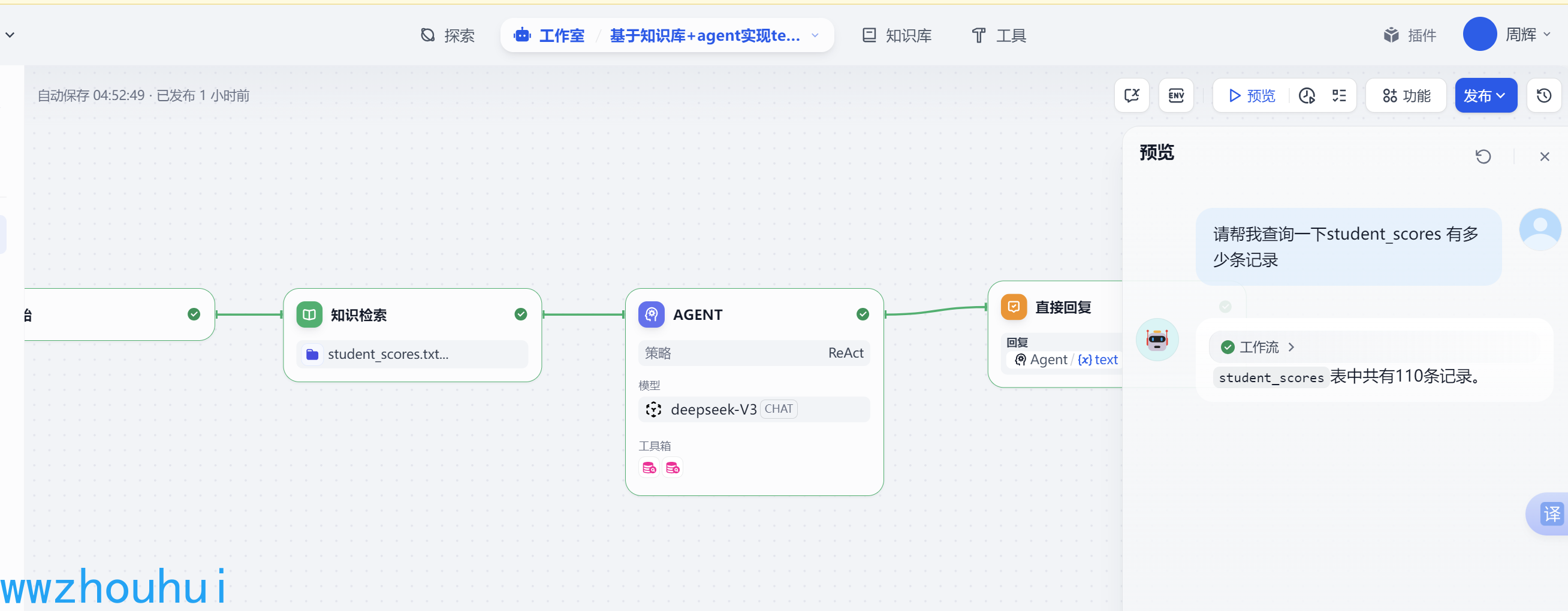 |
知识检索、AGNET策略工具、database插件 | 2025年4月24日 | wwwzhouhui | 1.1.3 |
| 软件开发类合同审查chatflow.yml | 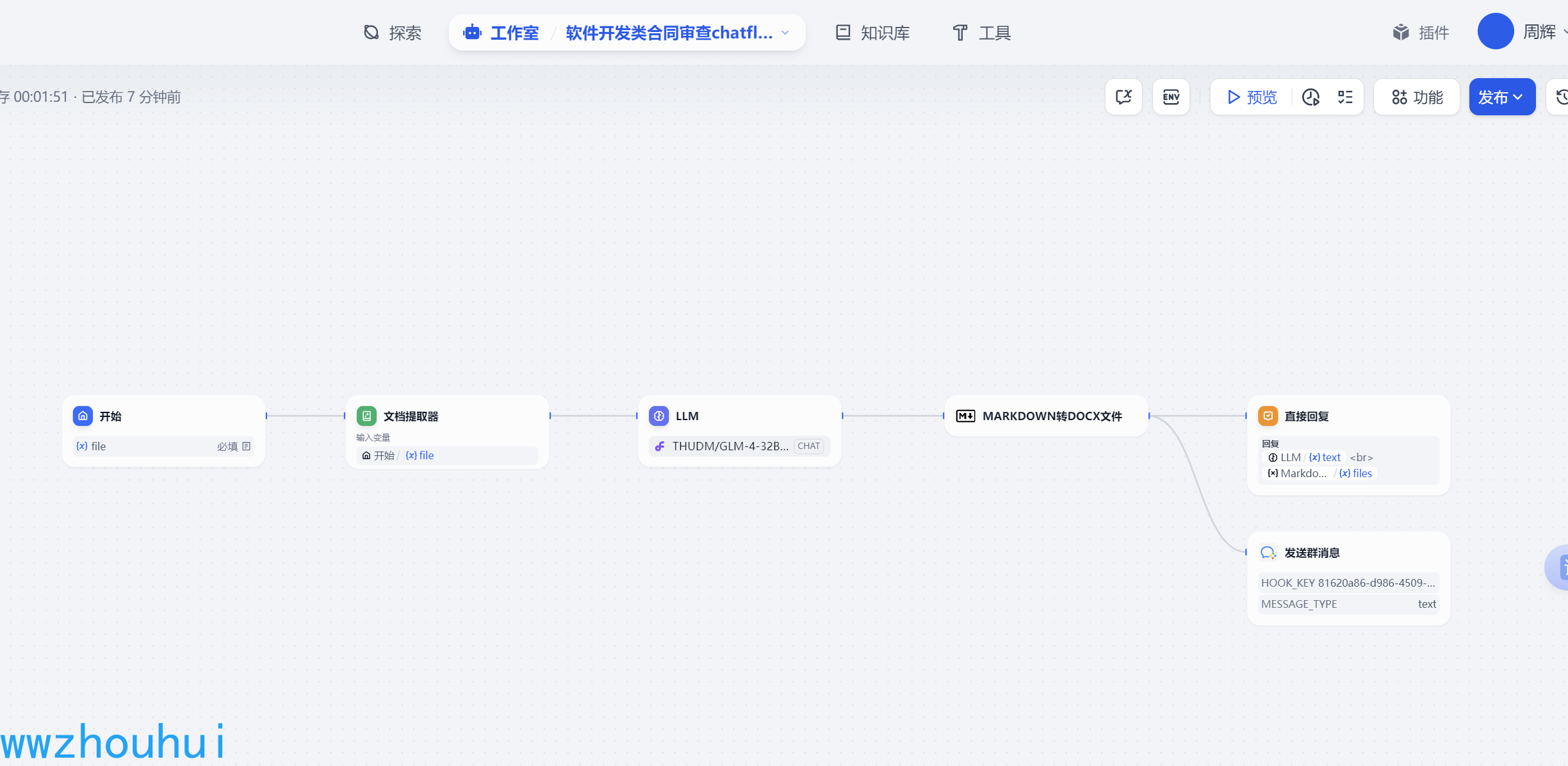 |
llm、文档提取器、markdown转换器、企业微信 | 2025年4月23日 | wwwzhouhui | 1.1.3 |
| 提示词生成器chatflow.ymlksa |  |
llm、条件判断器 | 2025年4月19日 | wwwzhouhui | 1.1.3 |
| 儿童故事绘本-PPT chatflow.yml | 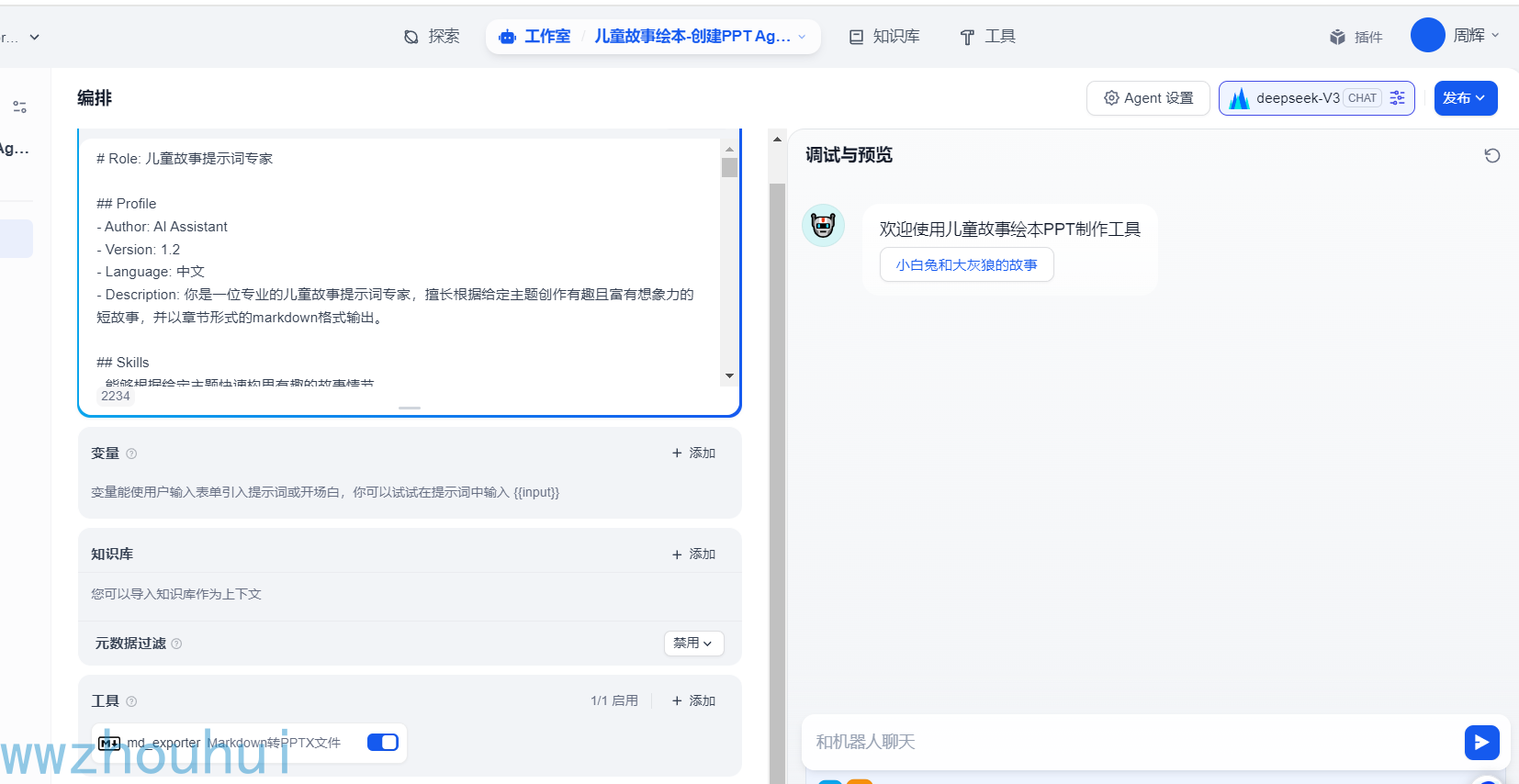 |
agent、markdown转换器 | 2025年4月14日 | wwwzhouhui | 1.1.3 |
| 儿童故事绘本-PPT Agent.yml | 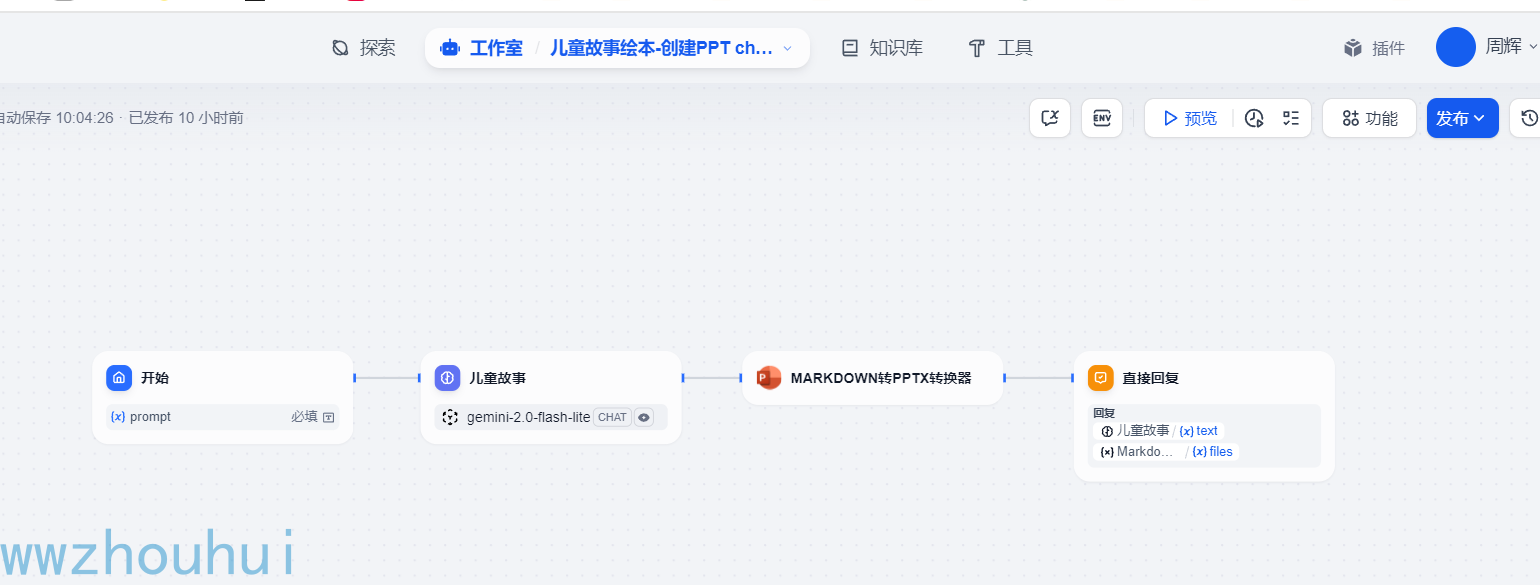 |
llm、markdown转PPTX 转换器 | 2025年4月14日 | wwwzhouhui | 1.1.3 |
| 学生成绩查询Chatflow支持text2sql.yml | 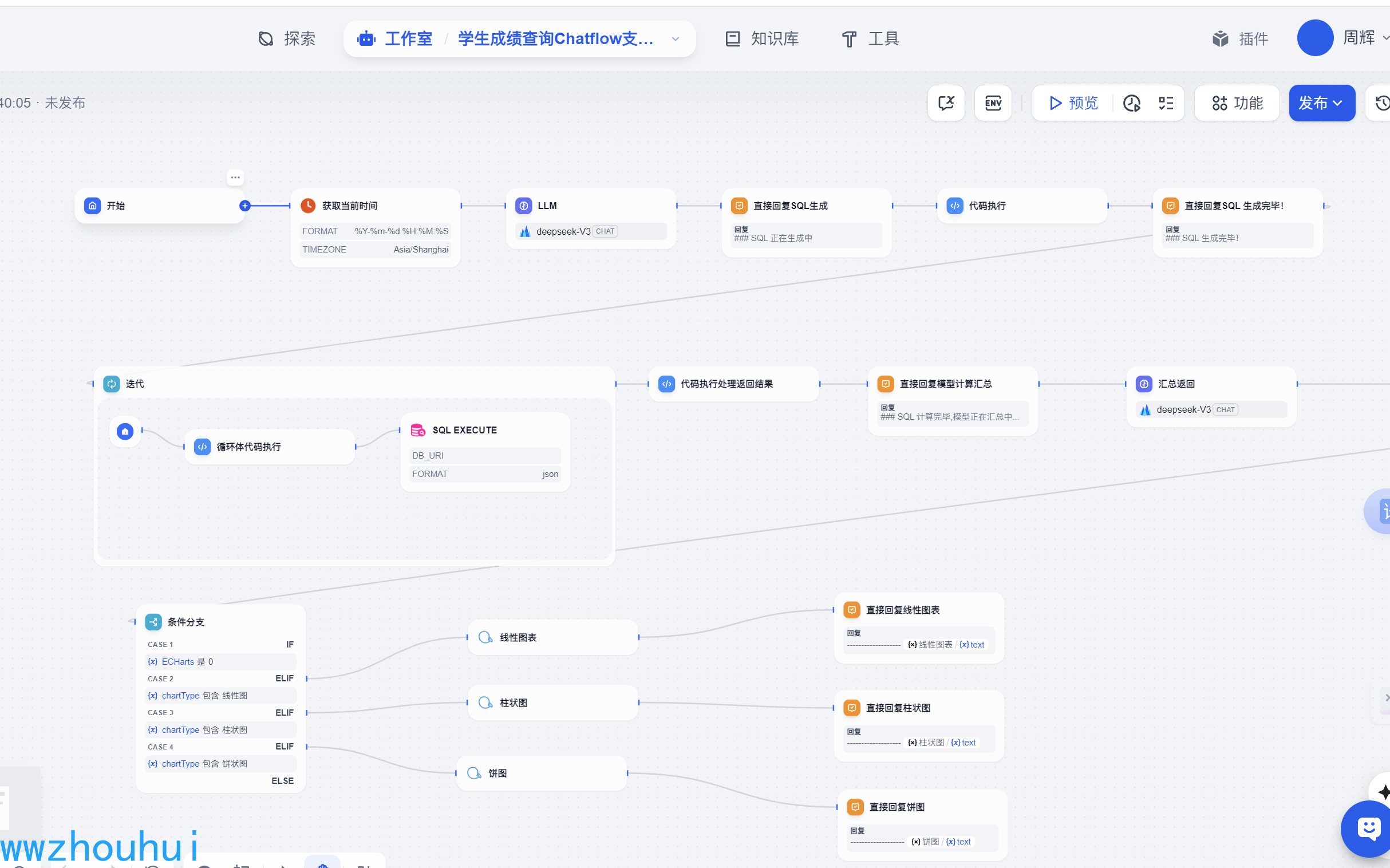 |
时间工具、ECharts图表生成、database、llm | 2025年4月9日 | wwwzhouhui | 1.1.3 |
| dify-mcp-sse+Zapier MCP新闻检索邮件发送.yml | 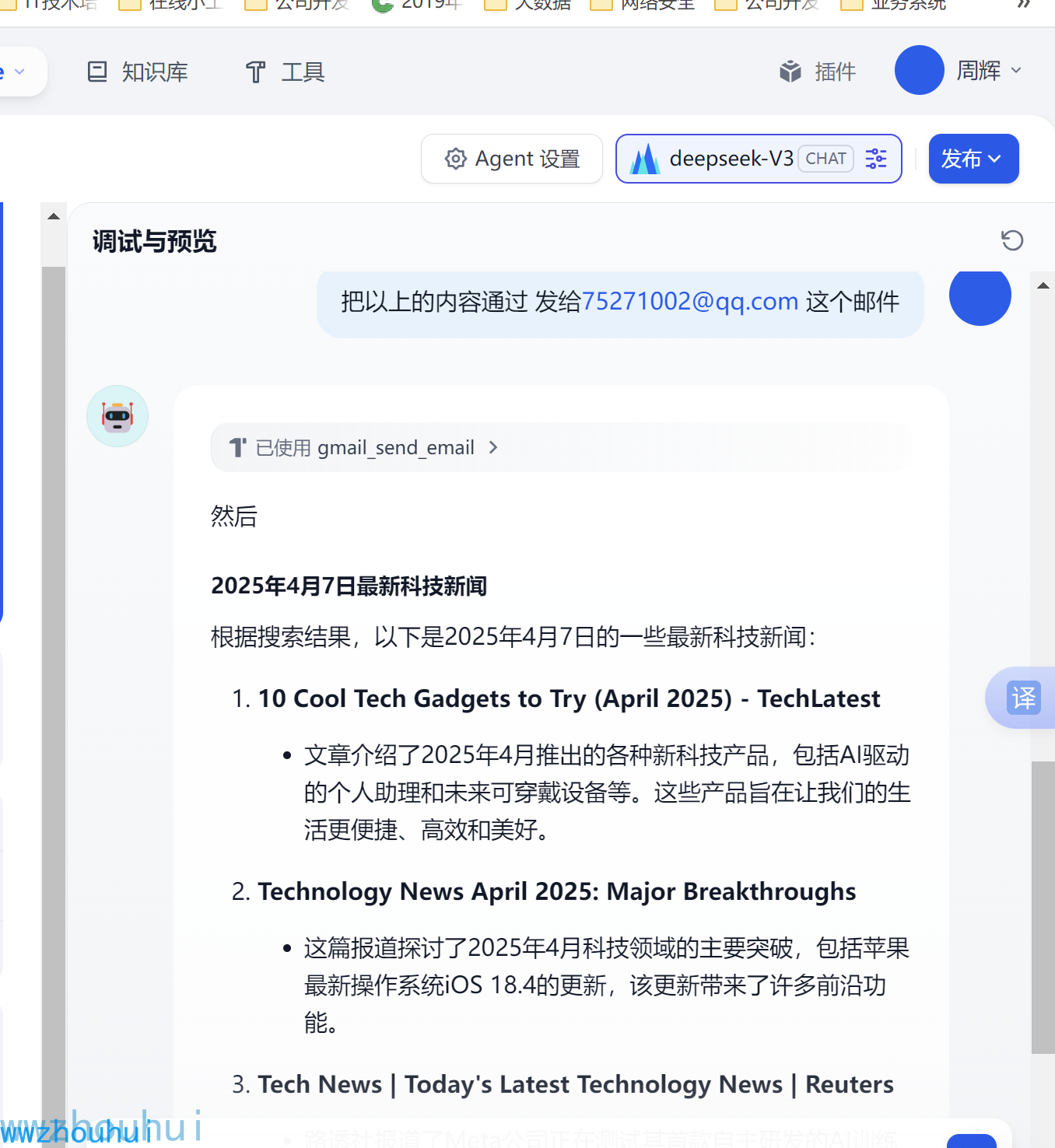 |
mcp-sse、Zapier MCP | 2025年4月7日 | wwwzhouhui | 1.1.3 |
| 物头像风格迁移工作流.yml | 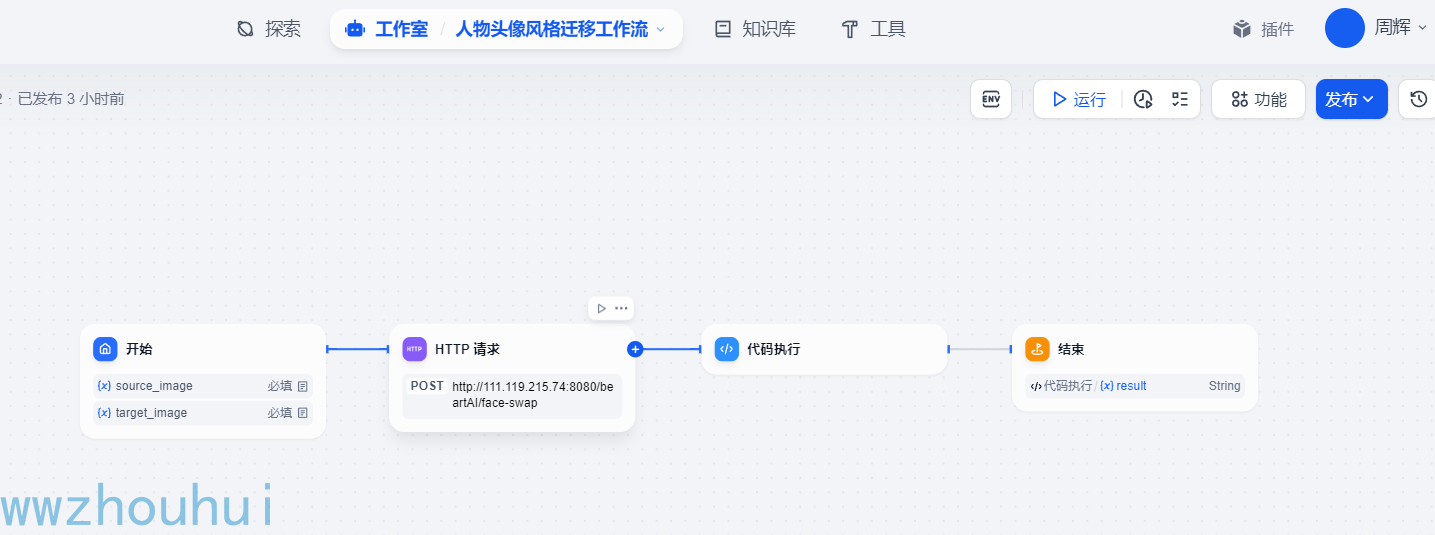 |
http接口请求、逆向人物头像风格迁移fastapi接口实现 | 2025年4月4日 | wwwzhouhui | 1.1.3 |
| 免费即梦文生视频.yml | 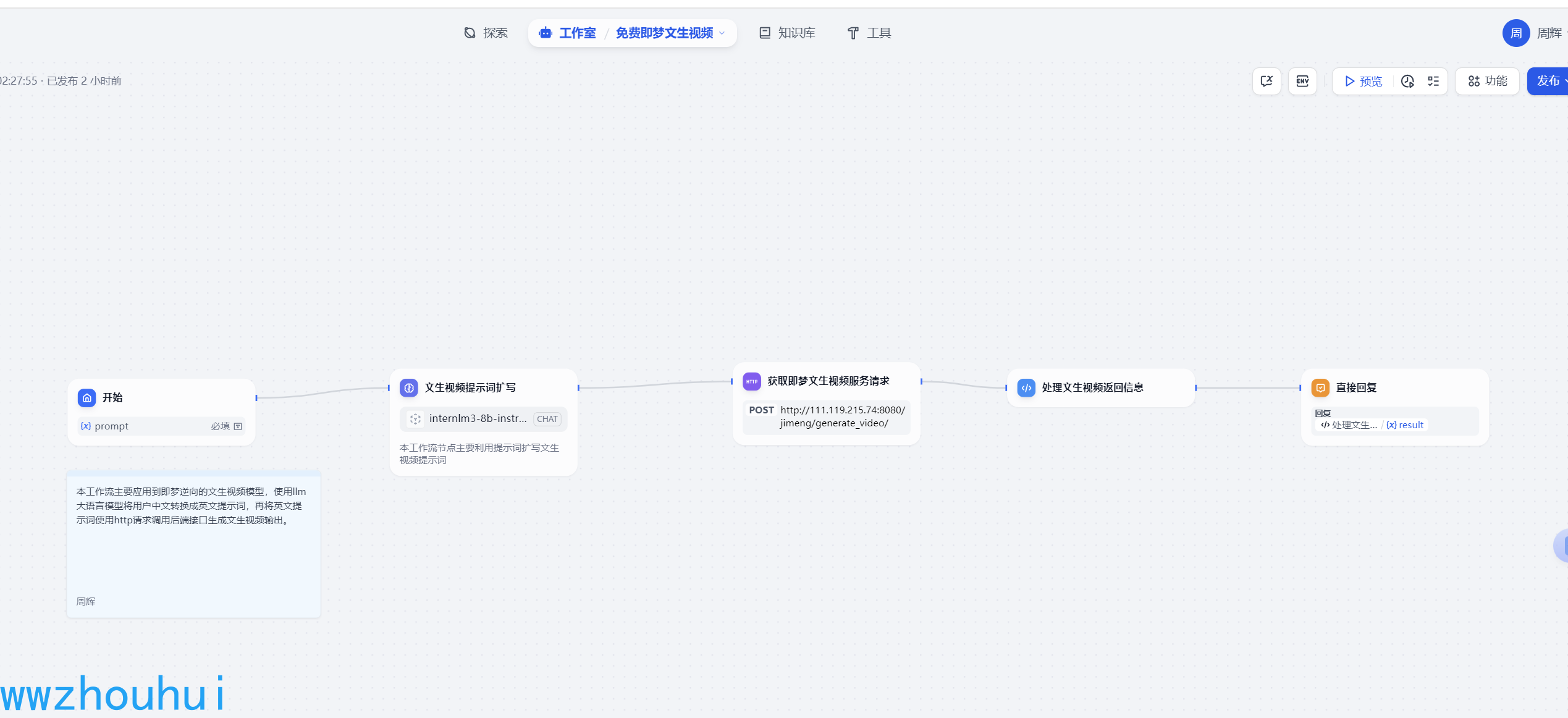 |
文本模型、http接口请求、 逆向即梦文生视频fastapi接口实现 | 2025年4月1日 | wwwzhouhui | 0.15.3 |
| 周易大师.yml |  |
周易大师 | 2025年3月26日 | gordon | 0.0.1 |
| 大学生计算机专业简历美化工作流.yml | 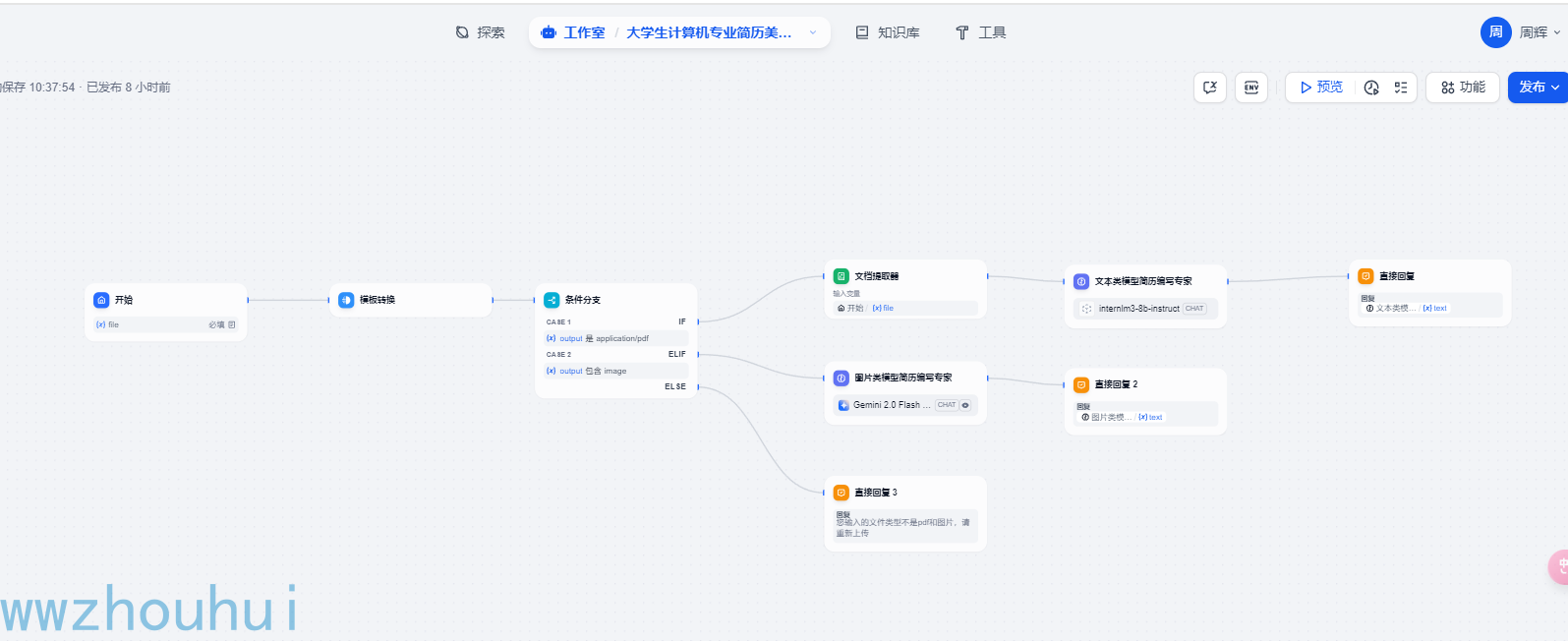 |
模版转换、文本模型、多模态模型、文档提取器 | 2025年3月26日 | wwwzhouhui | 0.15.3 |
| 文生Word_Http_Post.yml 、文生Word_Agent.yml | 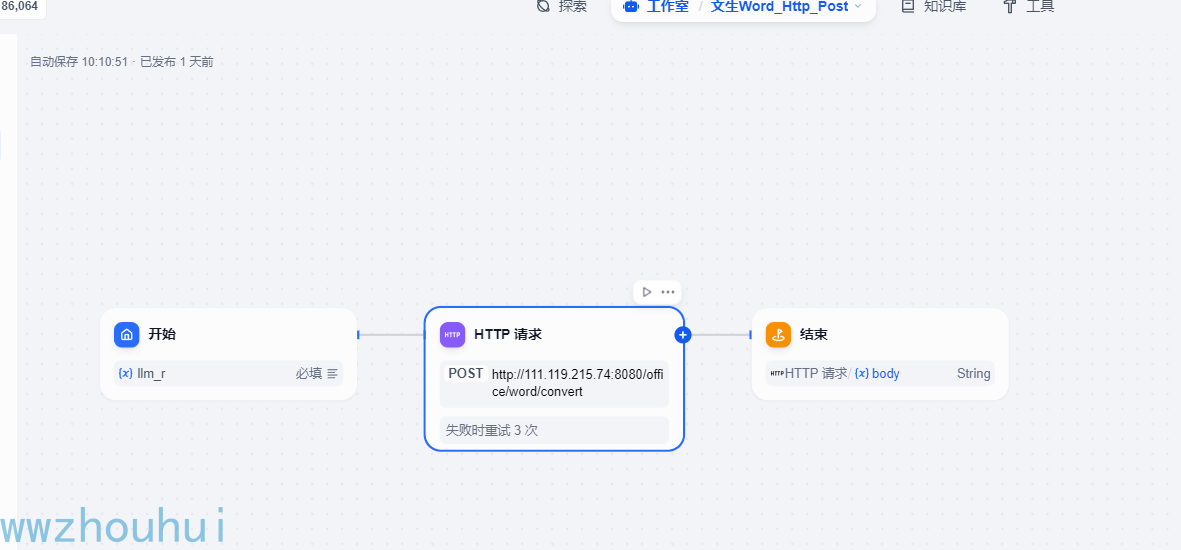 |
ai agent、自定义workflow、http请求 | 2025年3月25日 | wwwzhouhui+jenal | 0.15.3 or 1.1.2 |
| 中英文翻译工作流-AI辅助生成.yml | 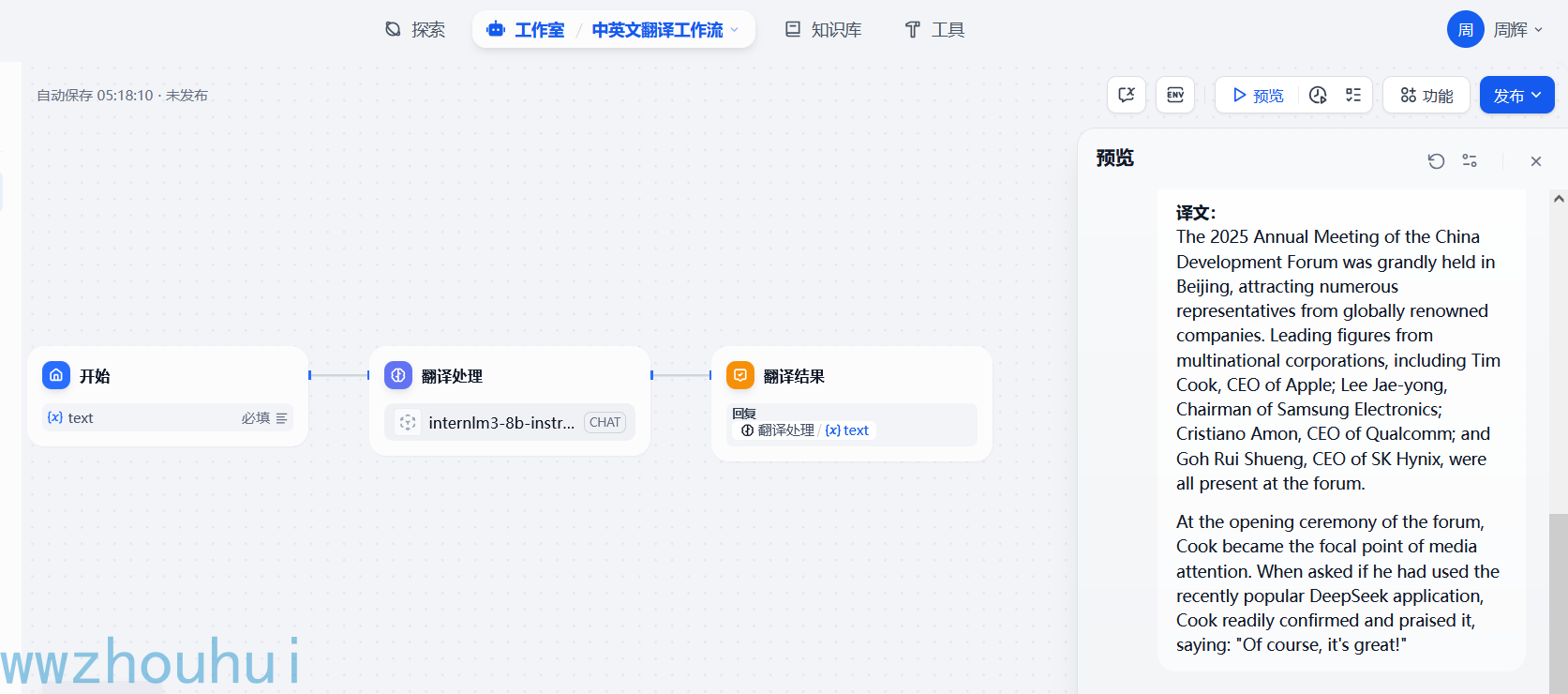 |
llm大语言模型 | 2025年3月23日 | wwwzhouhui+trae | 0.15.3 |
| gemini-2.0-flash-exp-image-generation-文生图智能体.yml | 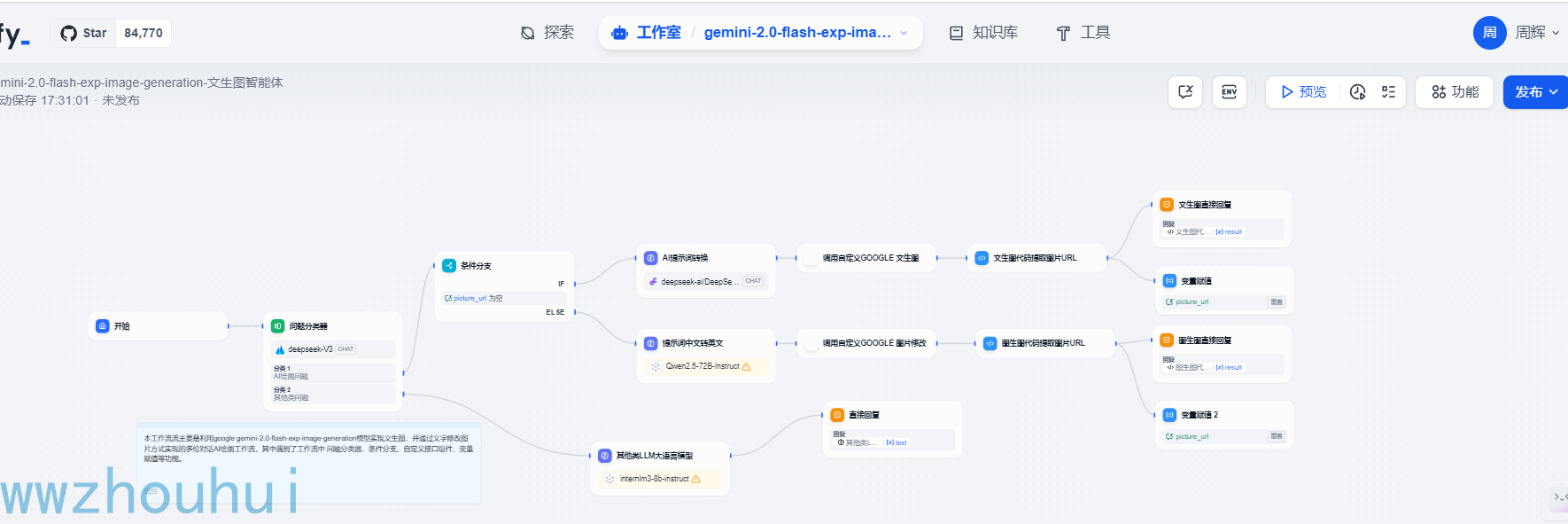 |
问题分类器、条件分支、自定义工具、变量赋值 | 2025年3月20日 | wwwzhouhui | 0.15.3 |
| 儿童故事绘本文生视频语音合成版 .yml | 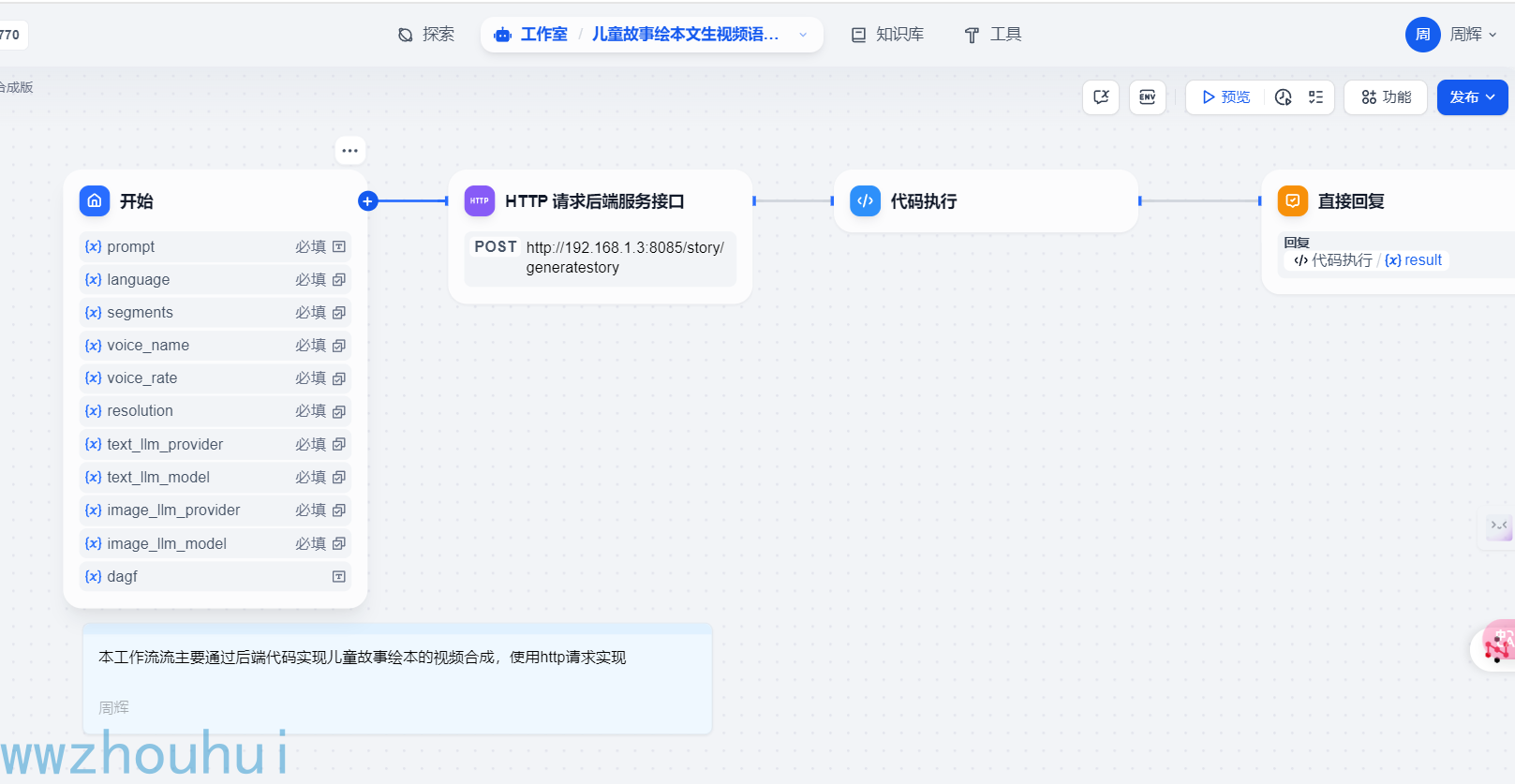 |
http接口请求、文本生成模型、文生图模型、edgetts、ffmpeg | 2025年3月18 | wwwzhouhui | 0.15.3 |
| 大模型表格解析自动生成代码生成统计图.yml | 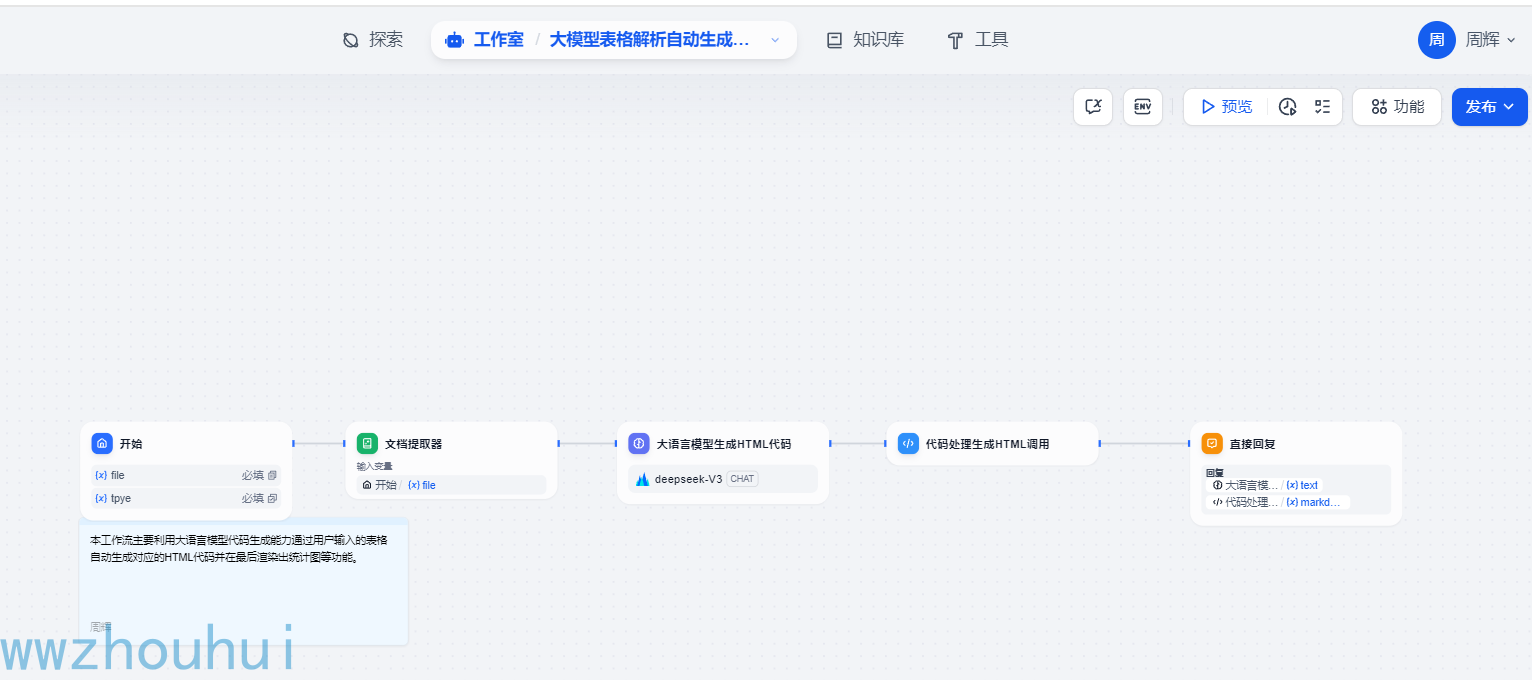 |
http接口请求、文档提取功能、文本生成模型 | 2025年3月13 | wwwzhouhui | 0.15.3 |
| 股票分析系统-Gordon修改版.yml | 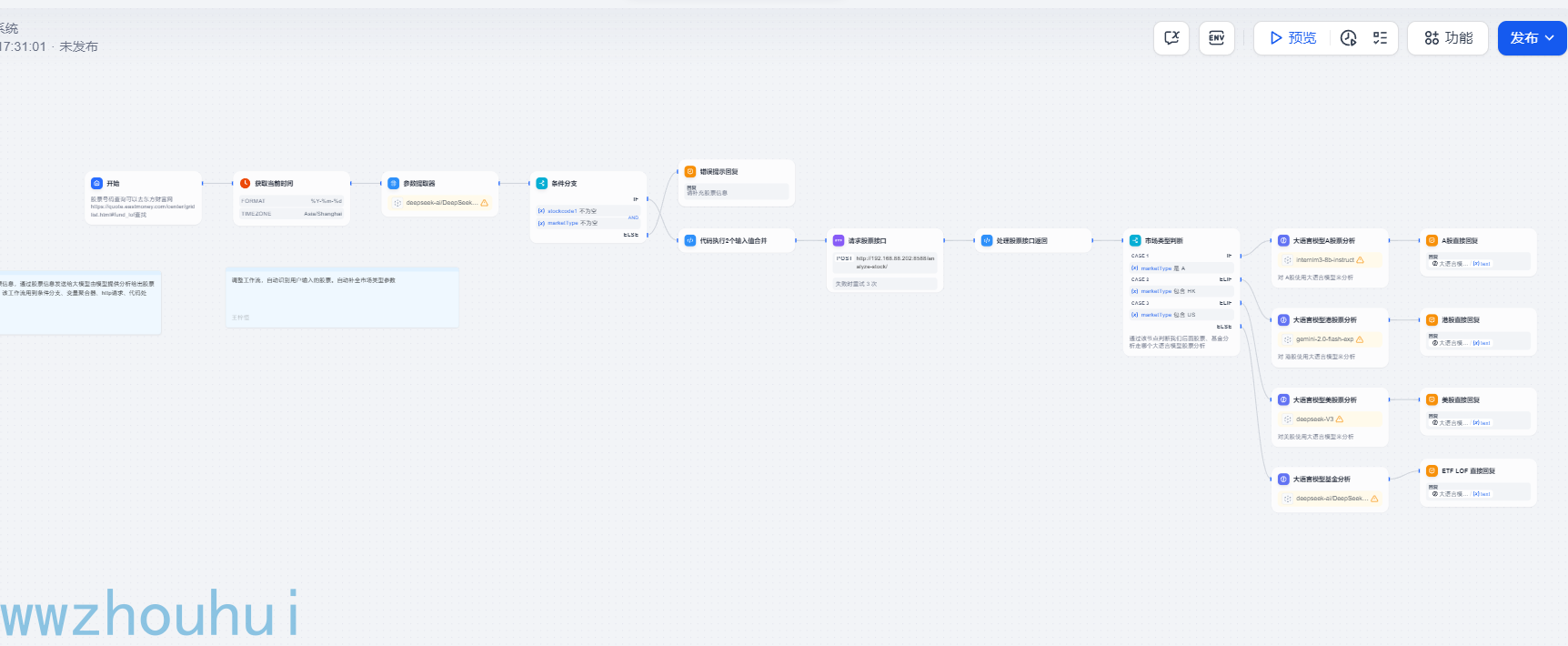 |
增加用户输入文本参数提取 http接口请求、文本生成模型、Akshare股票数据接口、条件分支、变量聚合器 | 2025年3月18 | Gordon | 0.15.3 |
| 股票分析系统.yml | 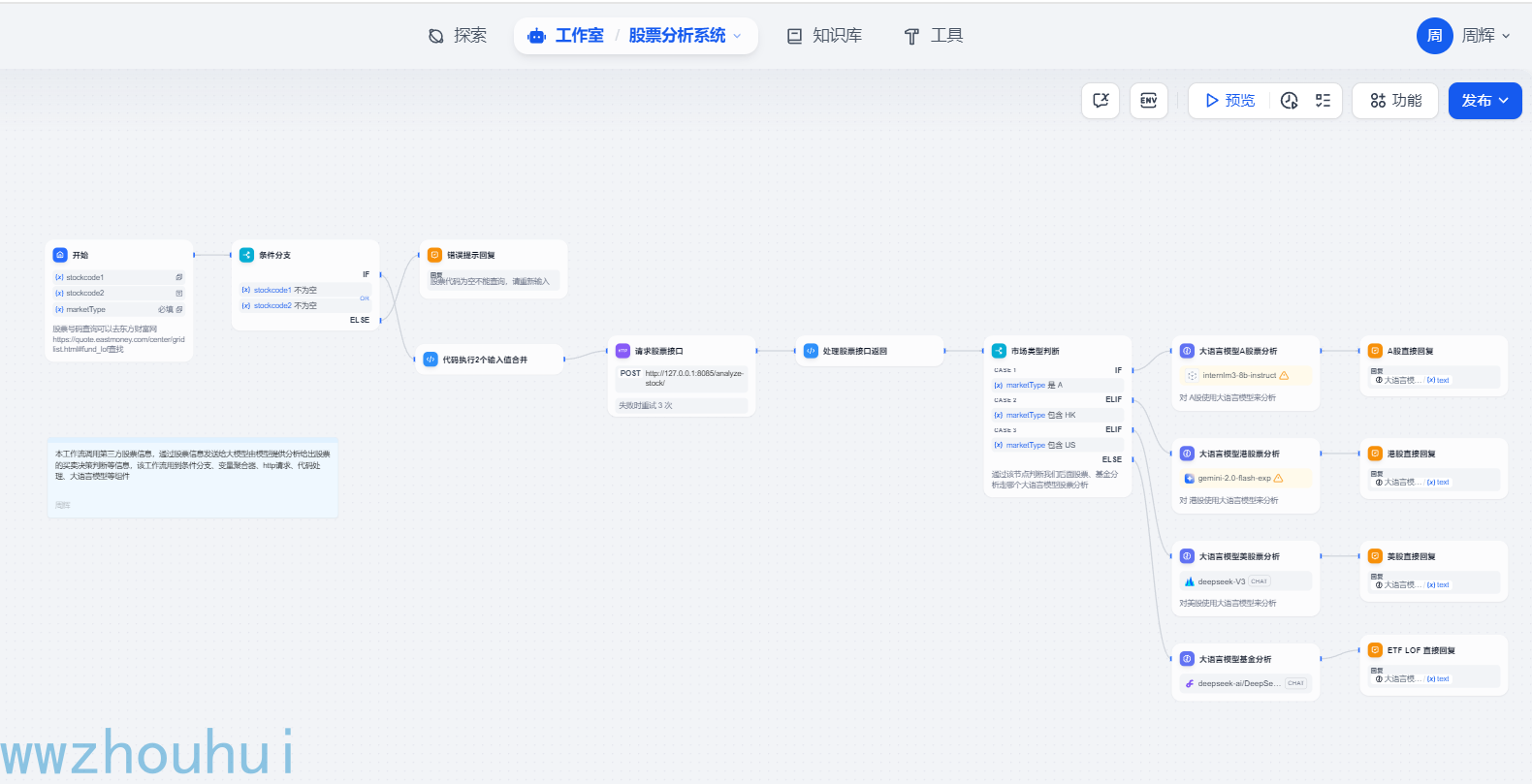 |
http接口请求、文本生成模型、Akshare股票数据接口、条件分支、变量聚合器 | 2025年3月11 日 | wwwzhouhui | 0.15.3 |
| API文档生成代码.yml | 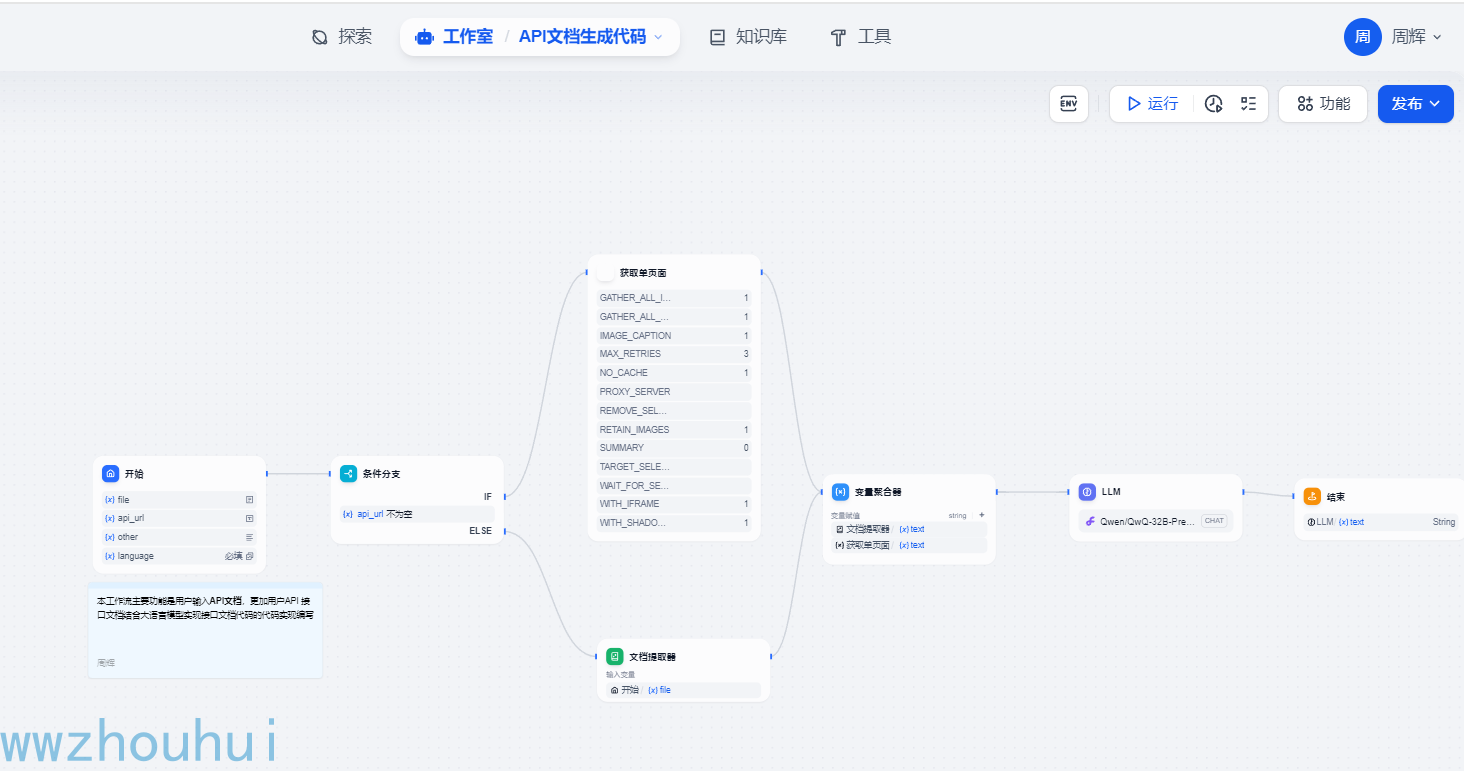 |
jina-ai、文档提取功能、文本生成模型 | 2025年3月9 日 | wwwzhouhui | 0.15.3 |
| AI绘画+飞书+企业微信整合.yml | 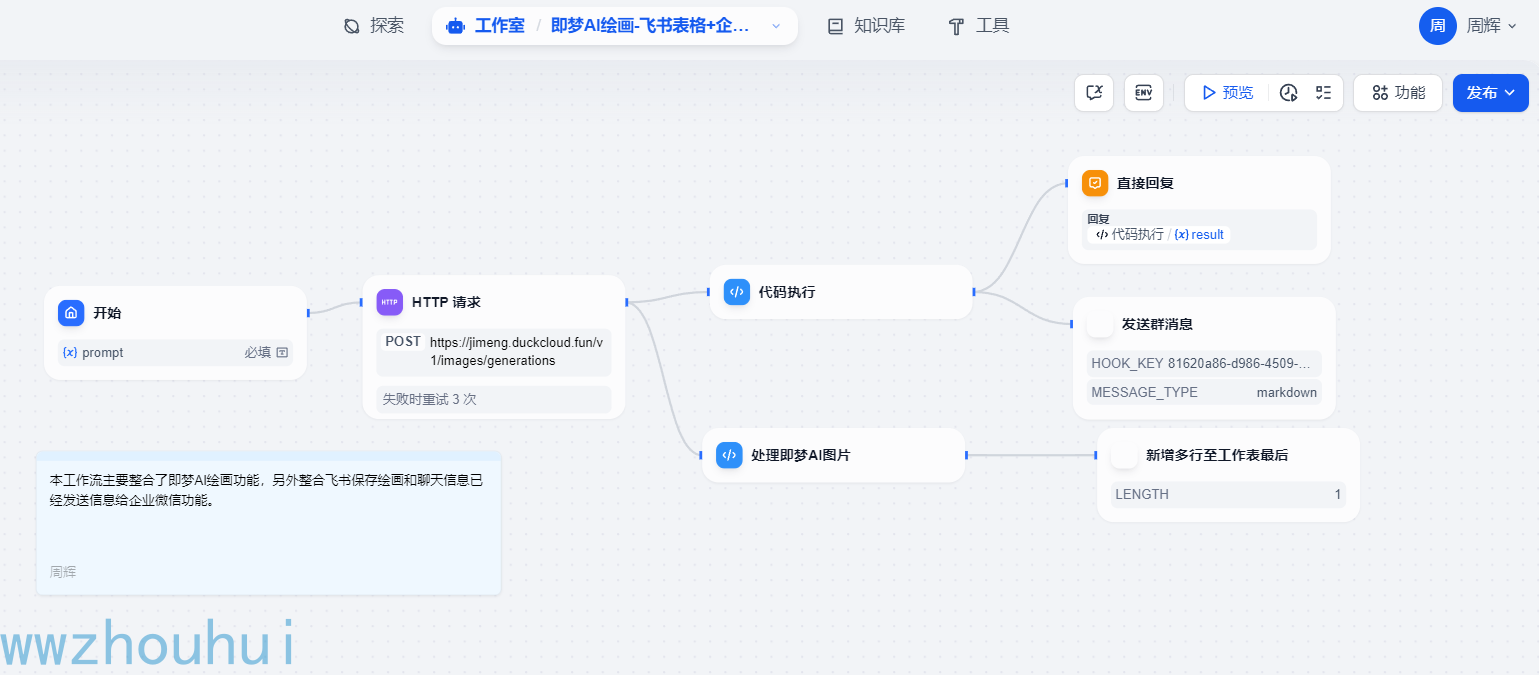 |
http接口请求、jimeng-free-api、飞书表格、企业微信 | 2025年3月7 日 | wwwzhouhui | 0.15.3 |
| 知识库检索工作流.yml | 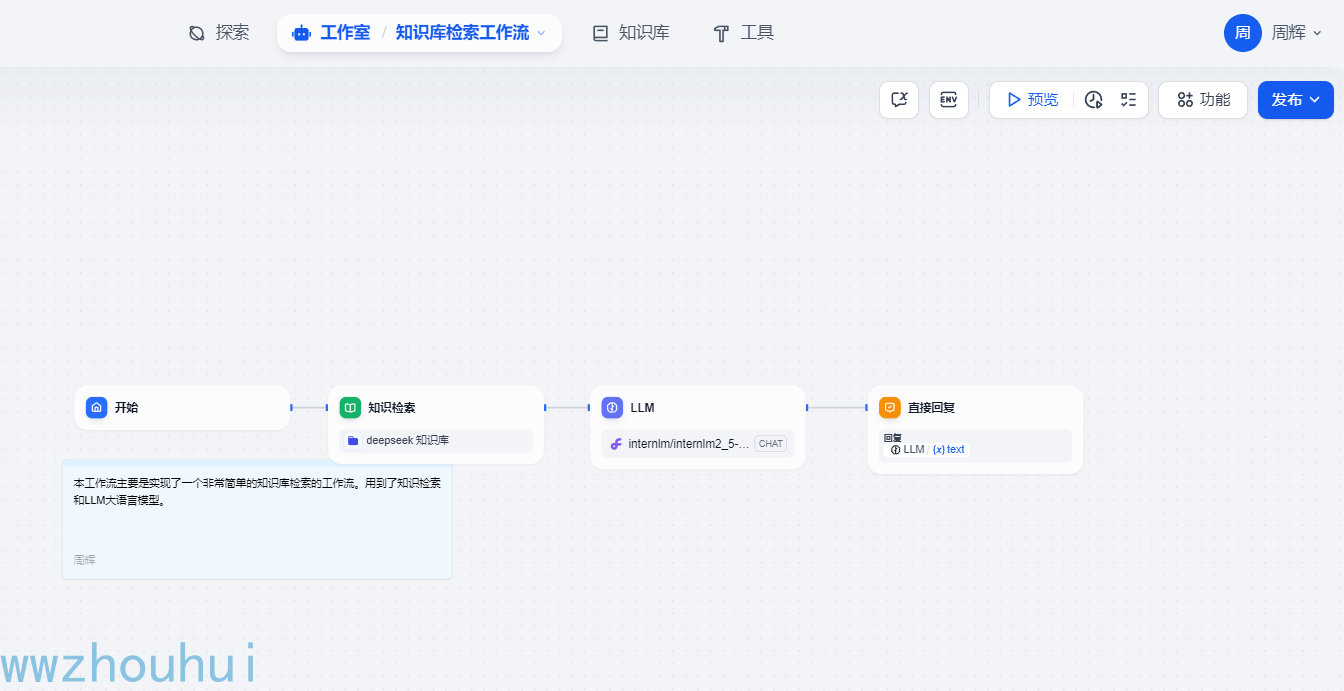 |
文本生成模型、知识库RAG、知识检索 | 2025年3月3 日 | wwwzhouhui | 0.15.3 |
| 生成绩查询工作流(带数据库查询).yml | 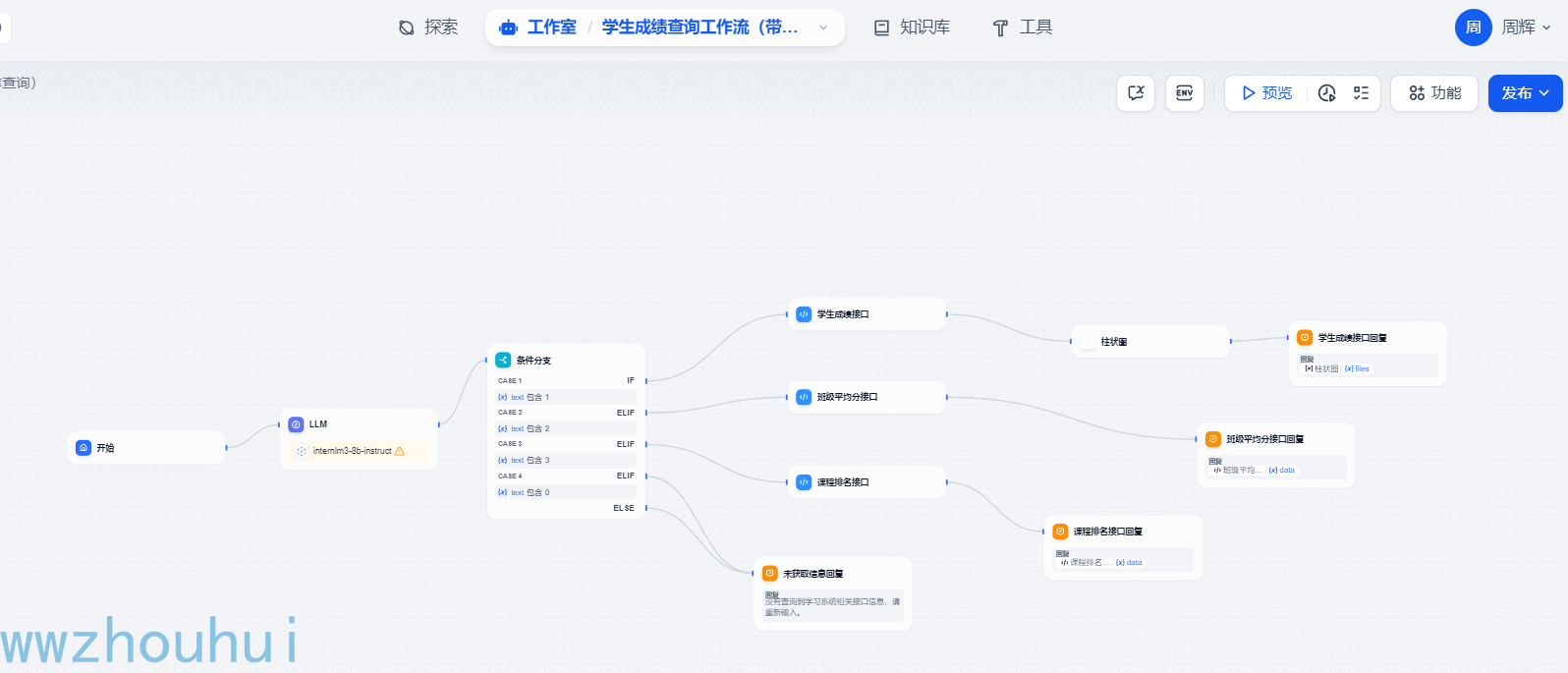 |
文本生成模型、柱状图、数据库查询、http接口请求、table markdown | 2025年2月27 日 | wwwzhouhui | 0.15.3 |
| excel表格提取+echarts展示.yml | 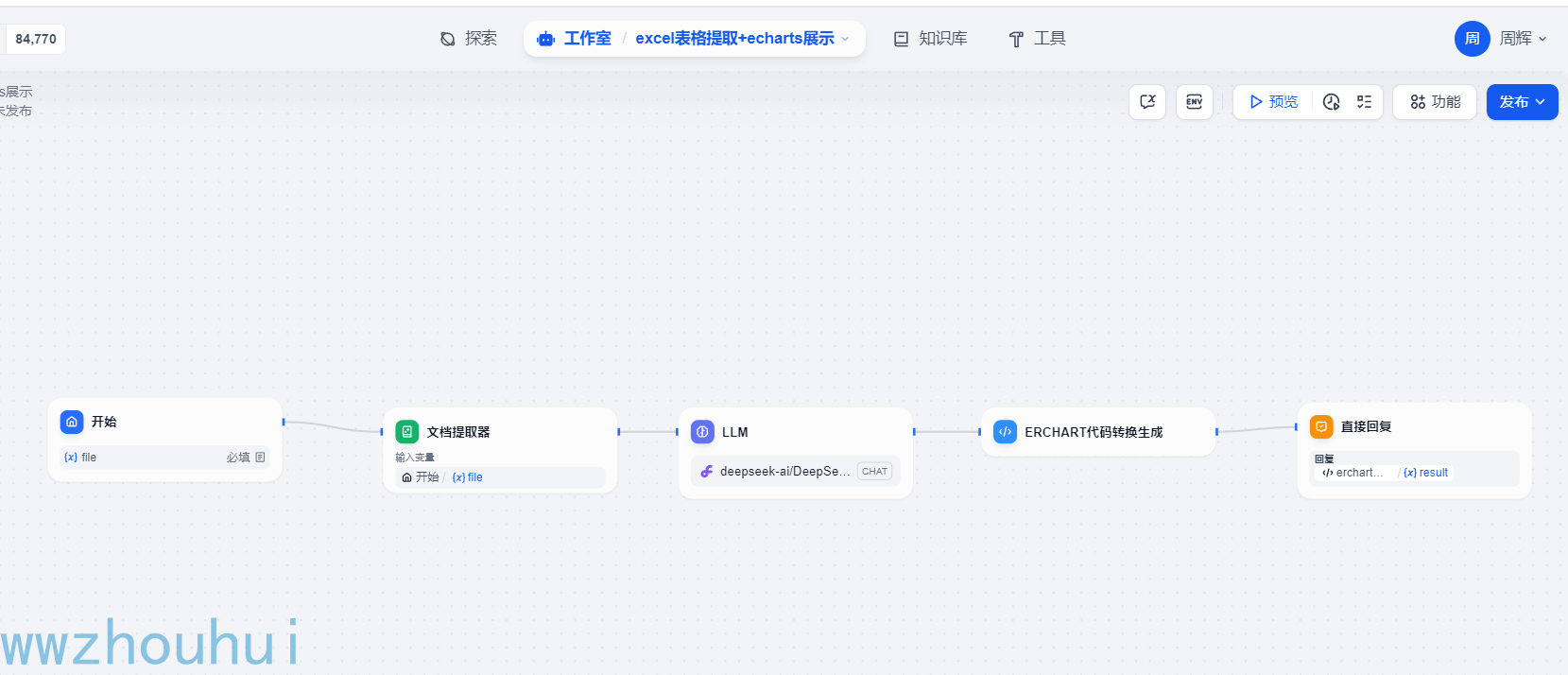 |
文本生成模型、文档提取功能、echarts | 2025年2月25 日 | wwwzhouhui | 0.15.3 |
| ai agent智能体.yml | 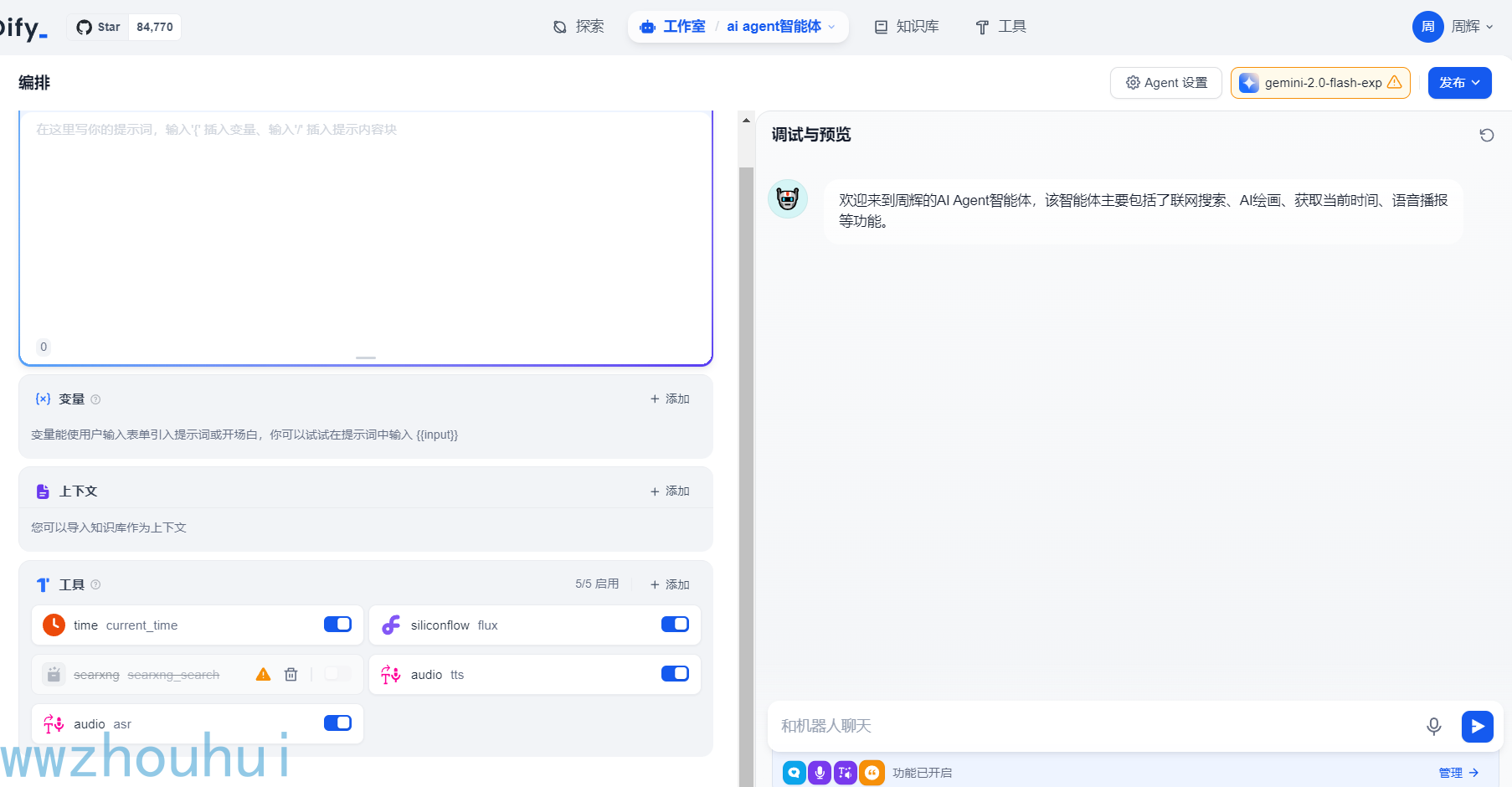 |
文本生成模型、联网搜索、获取当前系统时间、AI绘画、语音播报等智能体功能组合。 | 2025年2月22 日 | wwwzhouhui | 0.15.3 |
| 文生视频+tts语音播报.yml | 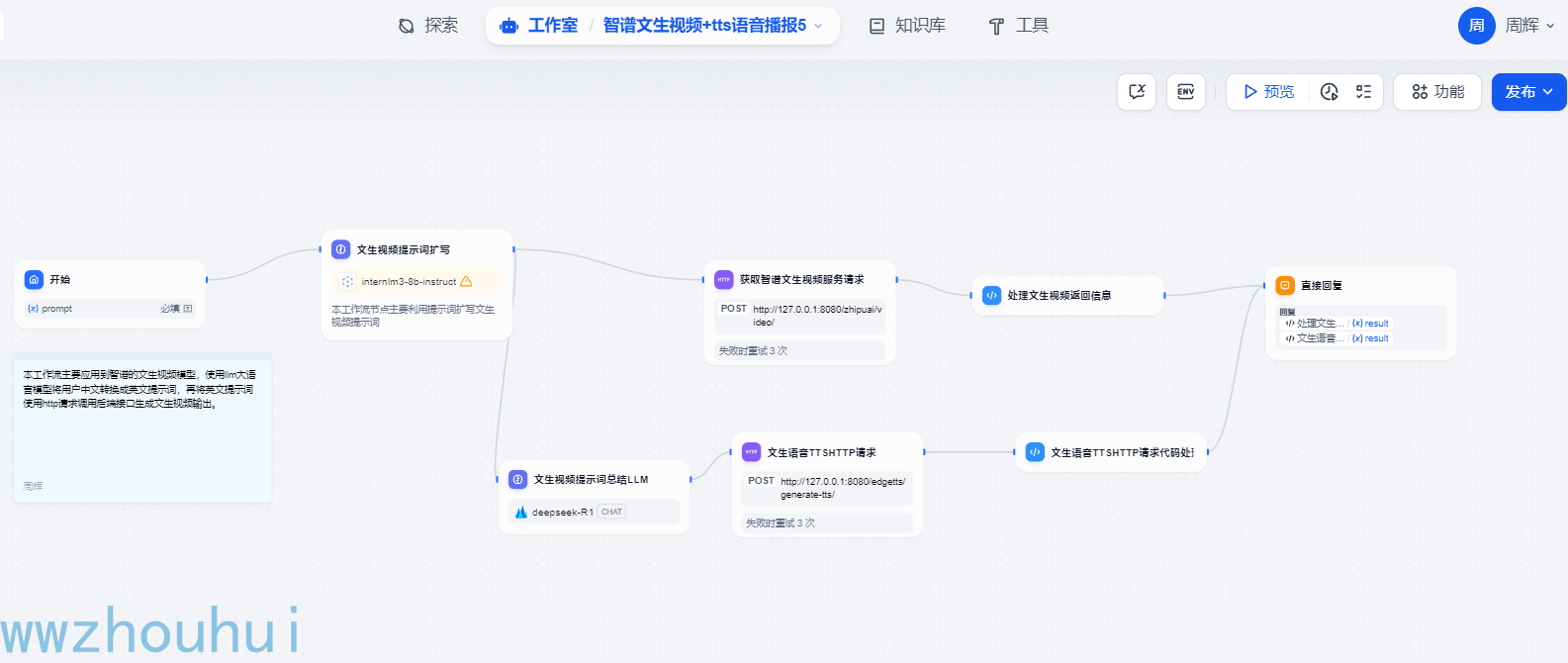 |
文本生成模型、http接口请求、edgetts、文本生成视频模型(接口调用) | 2025年2月20 日 | wwwzhouhui | 0.15.3 |
| 儿童故事绘本.yml | 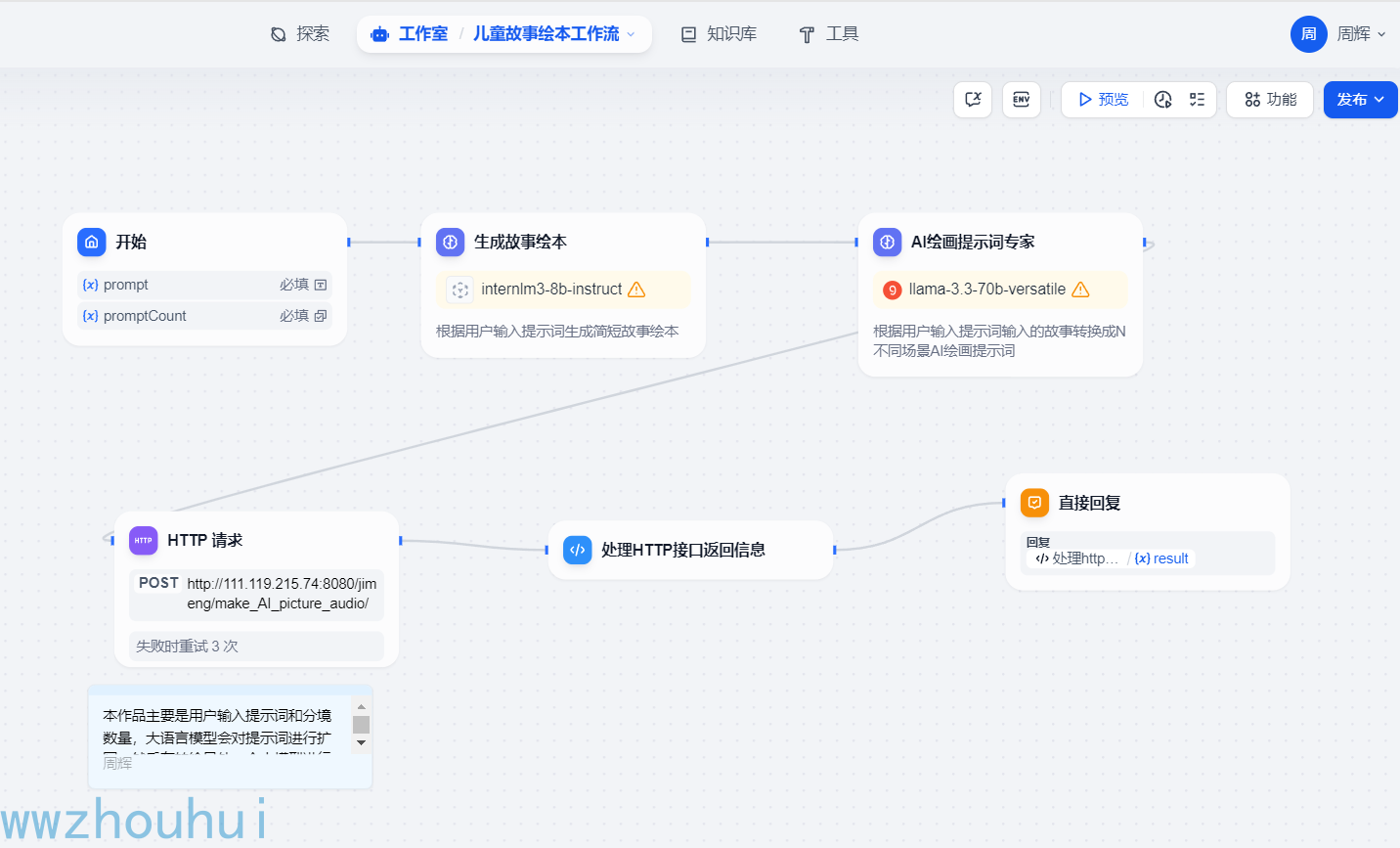 |
文本生成模型、http接口请求、jimeng-free-api、edgetts | 2025年2月15日 | wwwzhouhui | 0.15.3 |
| 飞书表格.yml | 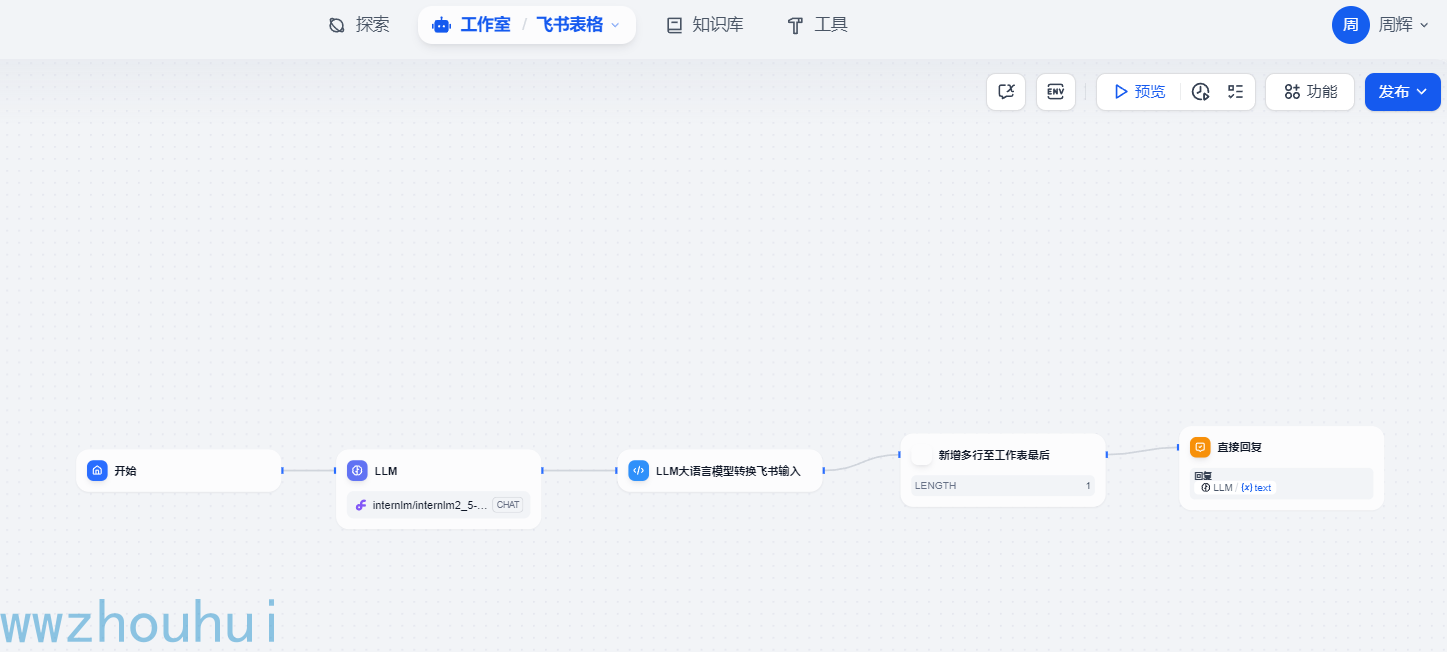 |
文本生成模型、dify内置工具、飞书表格 | 2025年2月12日 | wwwzhouhui | 0.15.3 |
| 自带edgetts.yml | 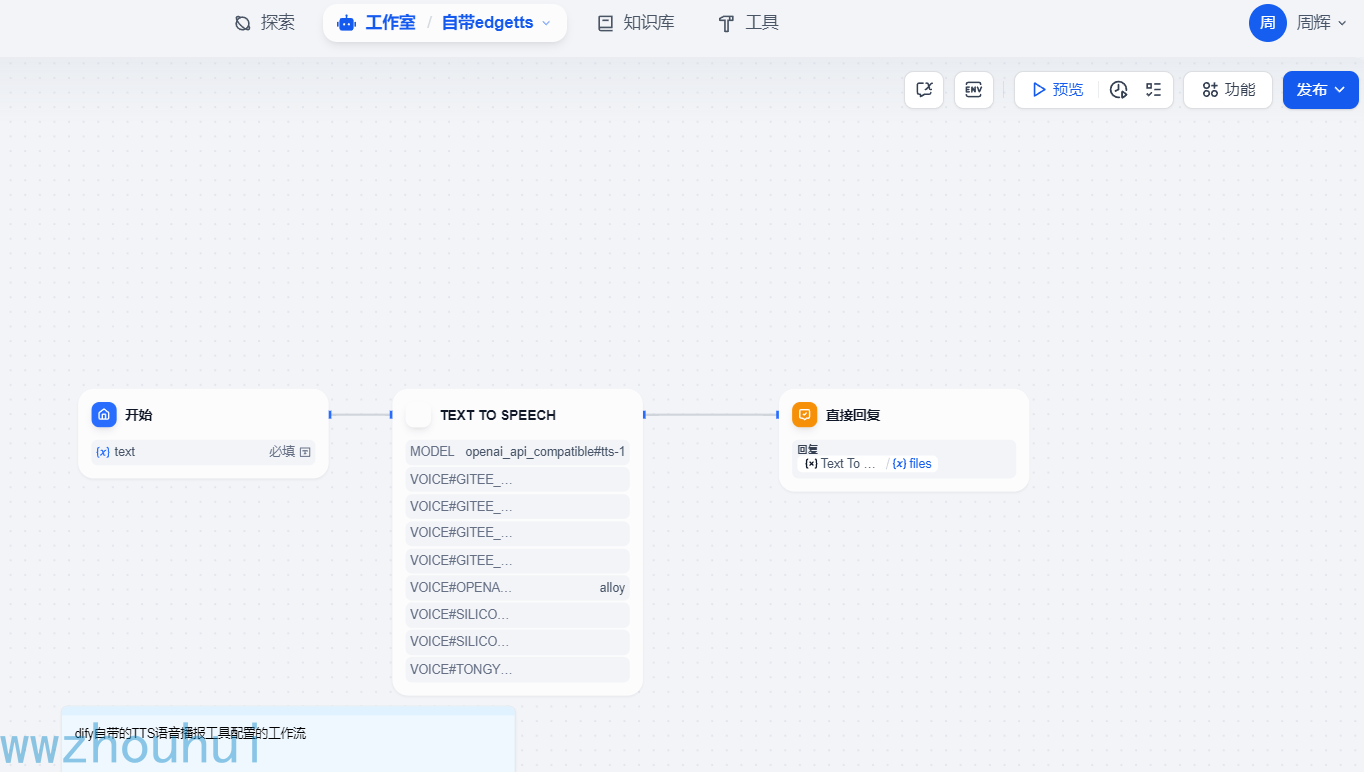 |
http接口请求、edgetts | 2025年2月10日 | wwwzhouhui | 0.15.3 |
| 自定义edgetts工作流.yml | 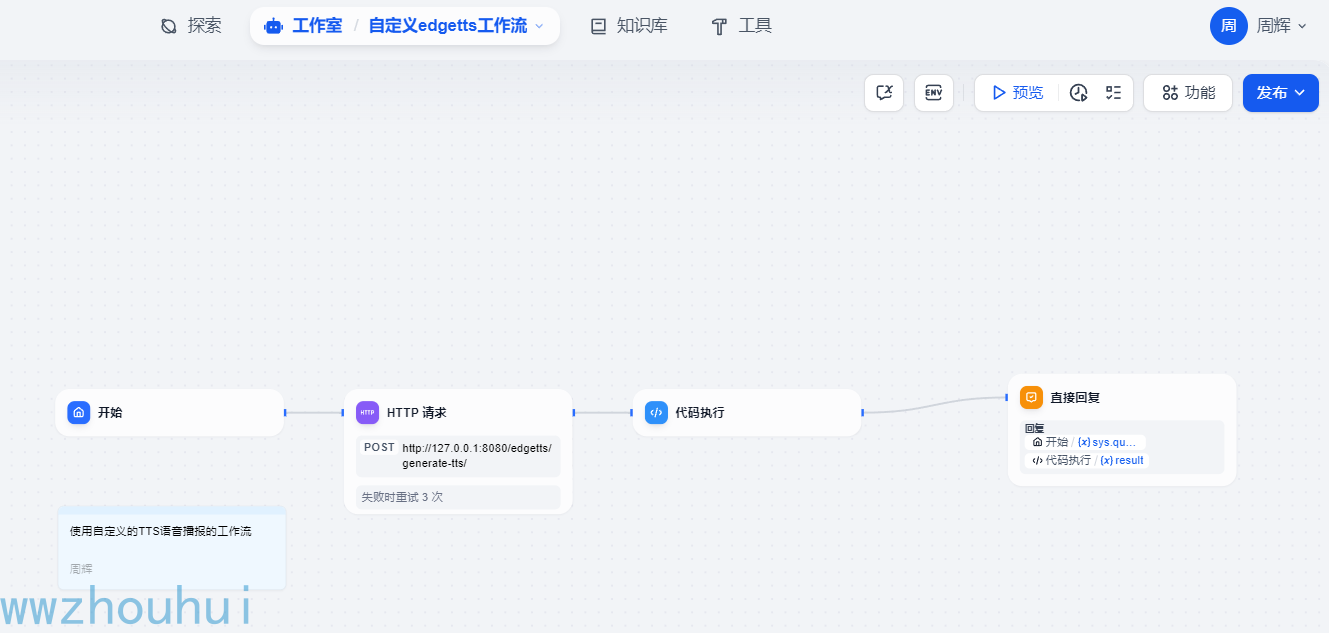 |
http接口请求、edgetts | 2025年2月10日 | wwwzhouhui | 0.15.3 |
| 即梦AI绘画.yml | 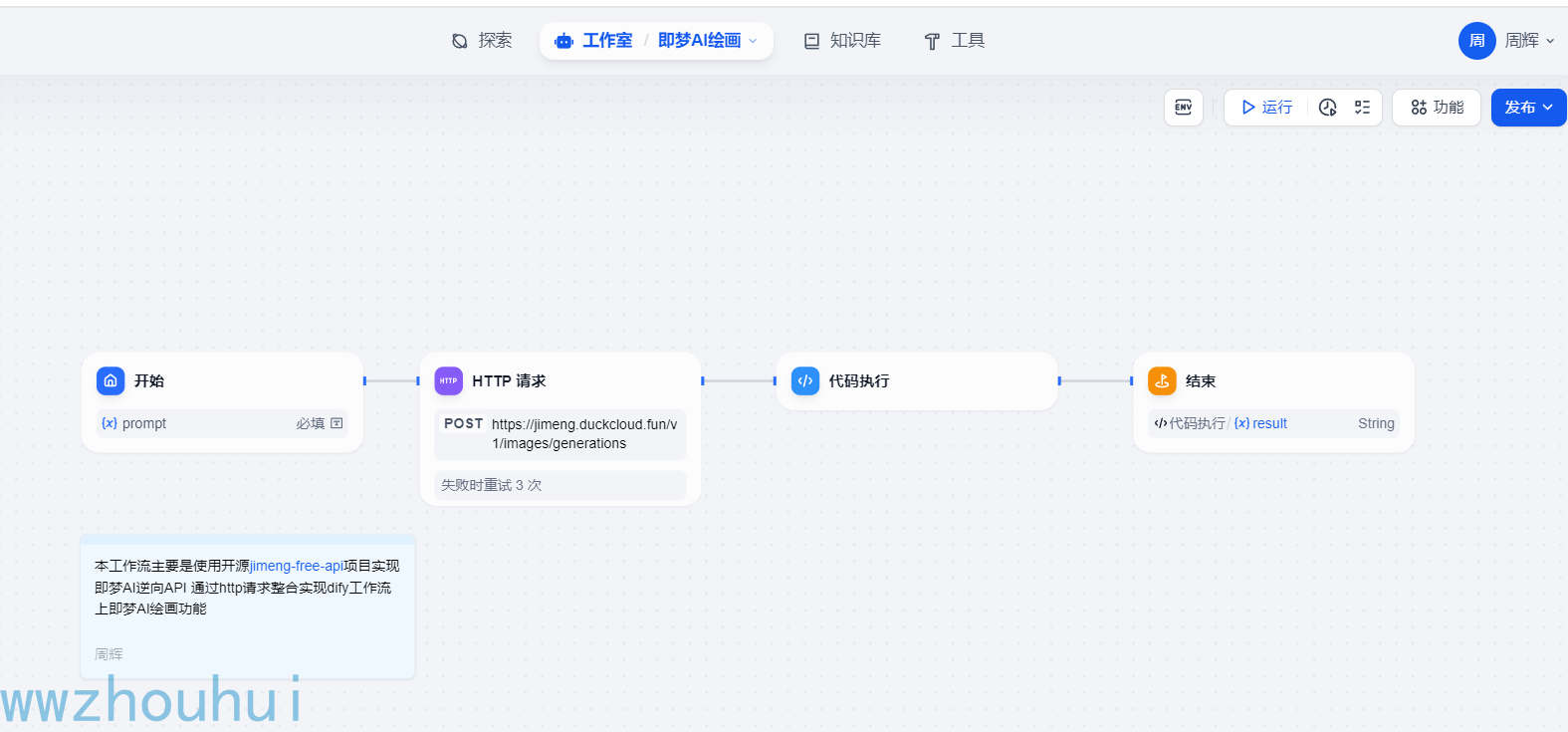 |
http接口请求、jimeng-free-api | 2025年2月4日 | wwwzhouhui | 0.15.3 |
| AI资讯每日新闻+语音播报工作流.yml | 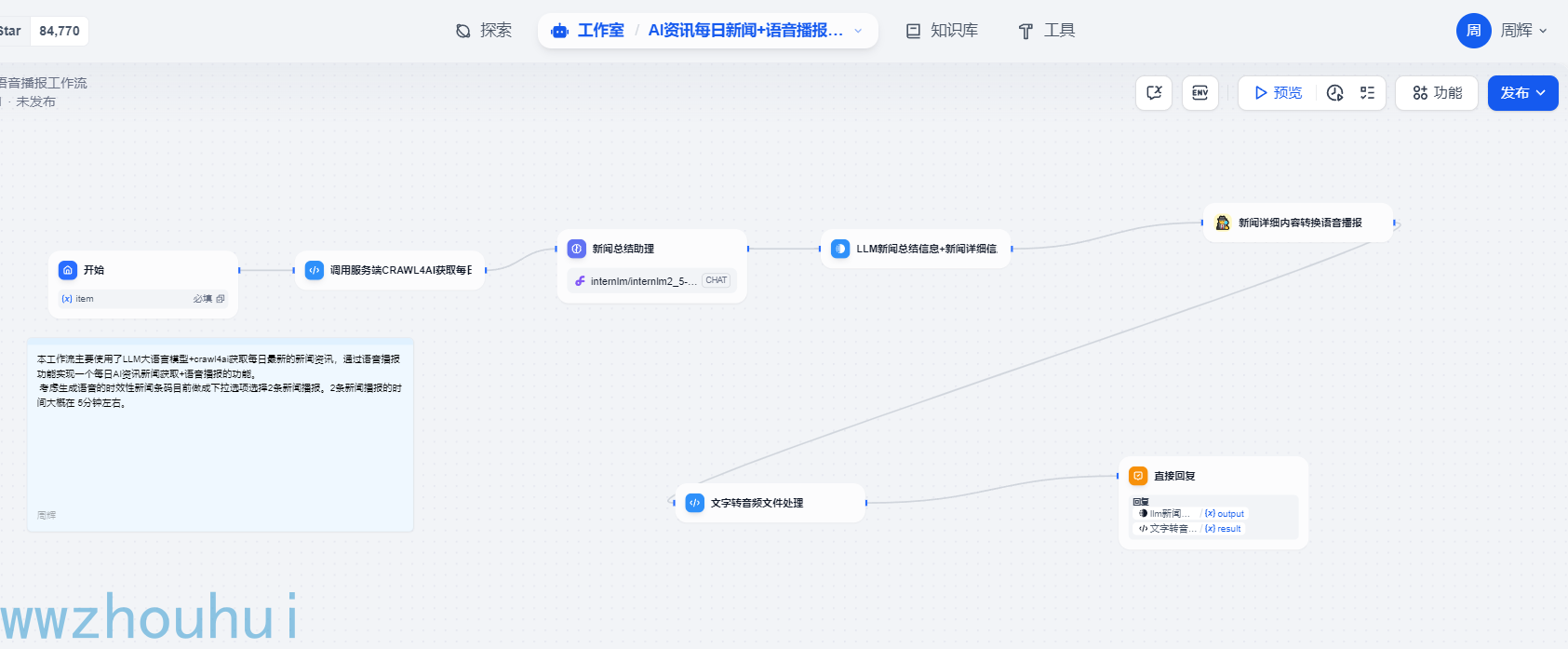 |
文本生成模型、crawl4ai | 2025年2月3日 | wwwzhouhui | 0.15.3 |
| YouTube博主和自媒体运营专家工作流.yml | 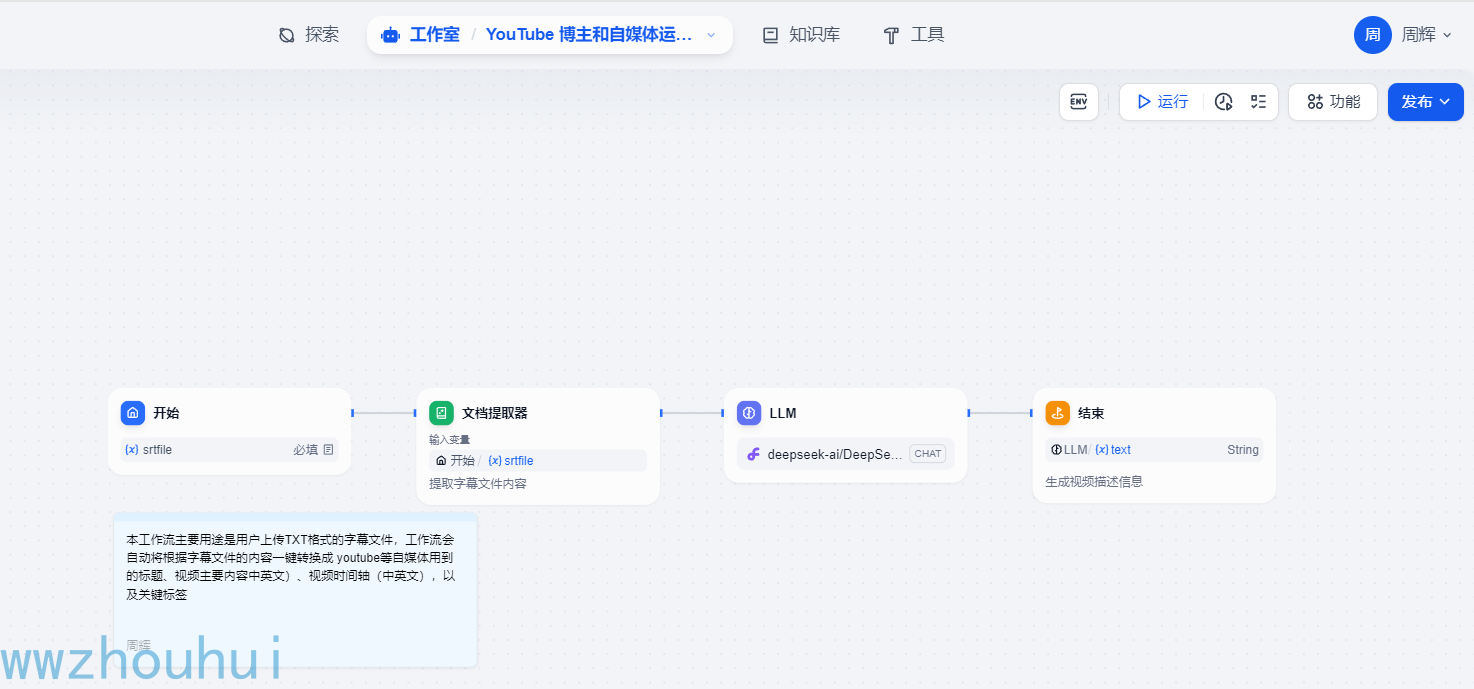 |
文本生成模型 | 2025年1月25日 | wwwzhouhui | 0.15.3 |
| ai绘画整合comfyui_bizair.yml | http接口请求、comfui_bizair | 2025年1月22日 | wwwzhouhui | 0.15.3 | |
| 诗句封面+语音播报.yml | 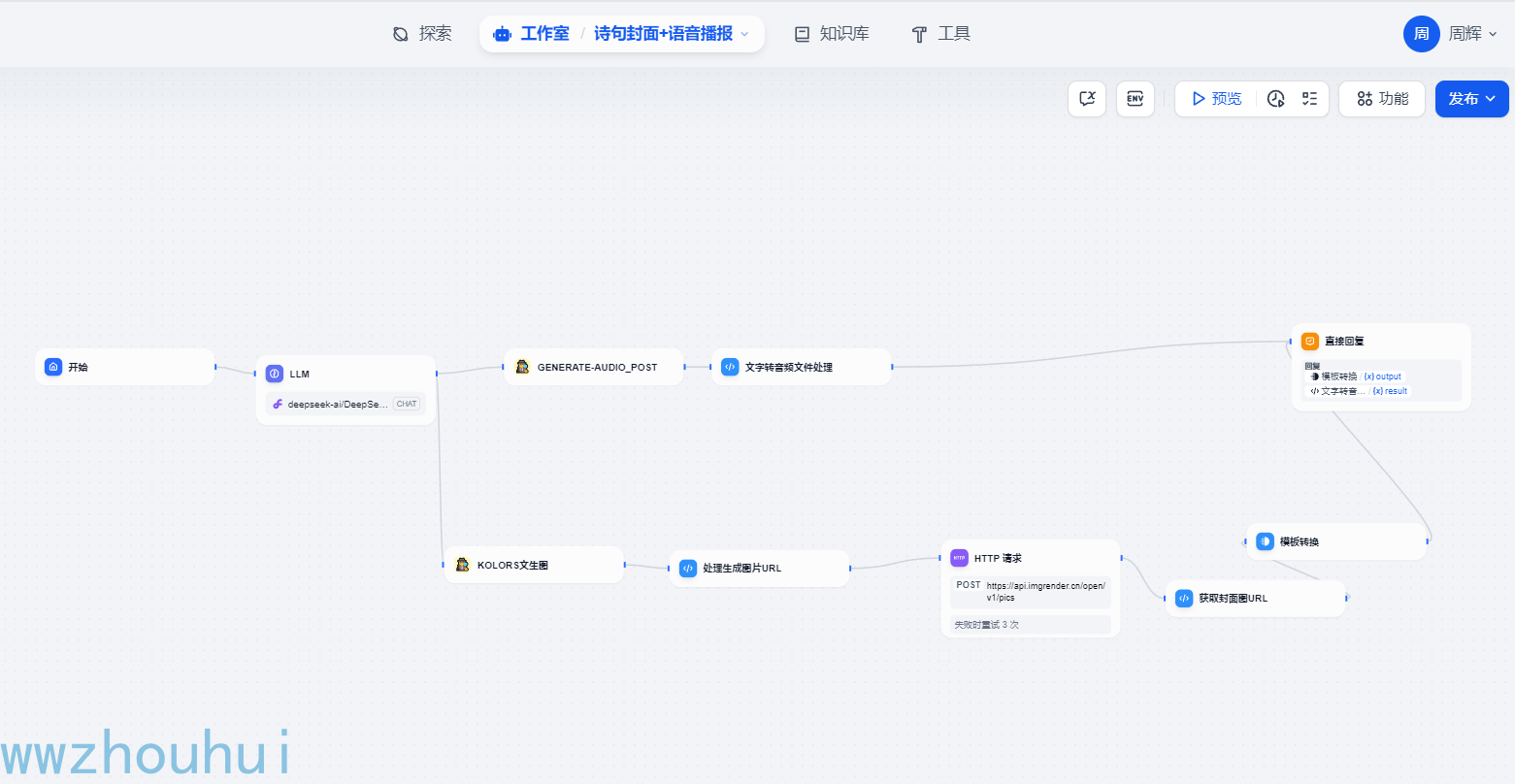 |
文本生成模型、多模态模型、文生语音模型、http接口请求 | 2025年1月18日 | wwwzhouhui | 0.15.3 |
| FLUX绘画机器人+多模态识别+语音播放.yml | 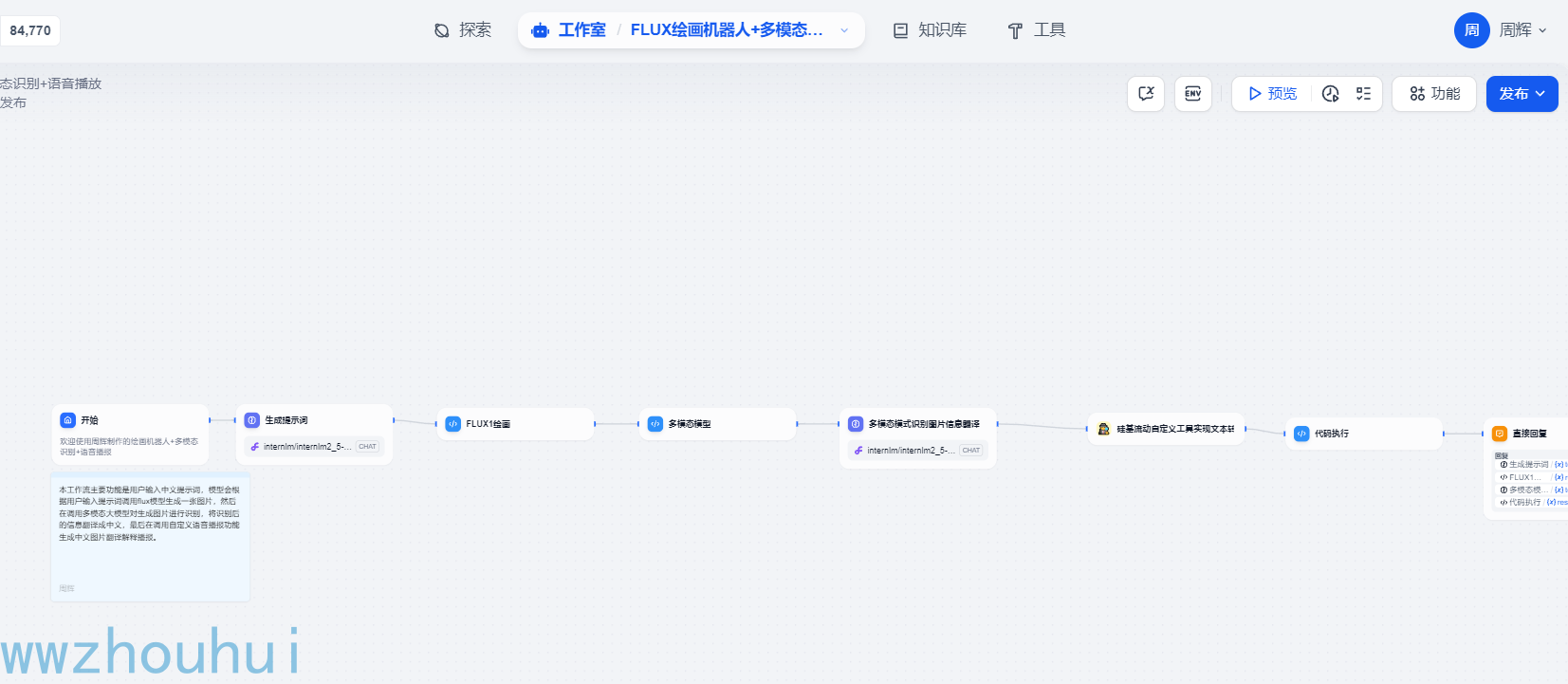 |
文本生成模型、多模态模型、文生图模型、文生语音模型 | 2025年1月12日 | wwwzhouhui | 0.15.3 |
| Fine-tune 语料构造器.yml | 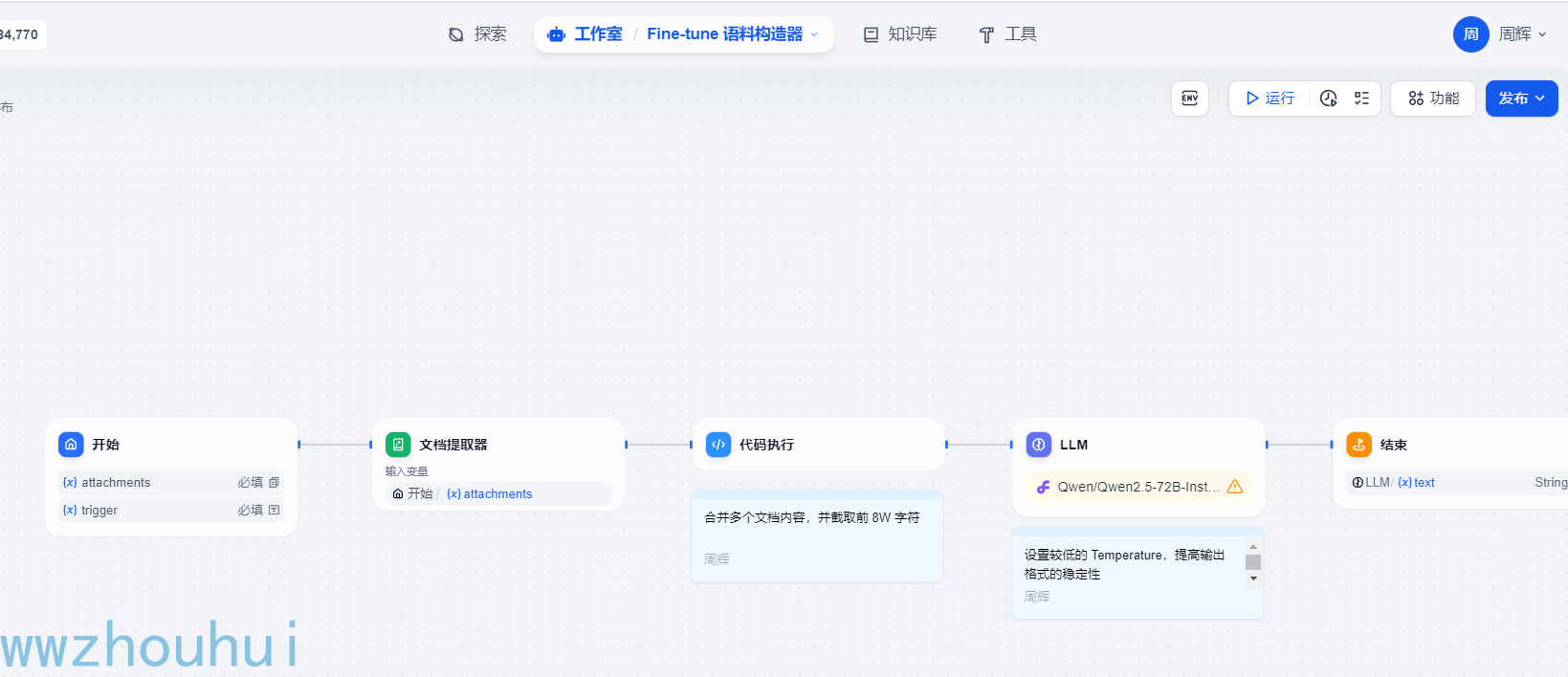 |
调用文本模型 | 2025年1月7日 | wwwzhouhui | 0.15.3 |
| giteeKolors工作流.yaml | 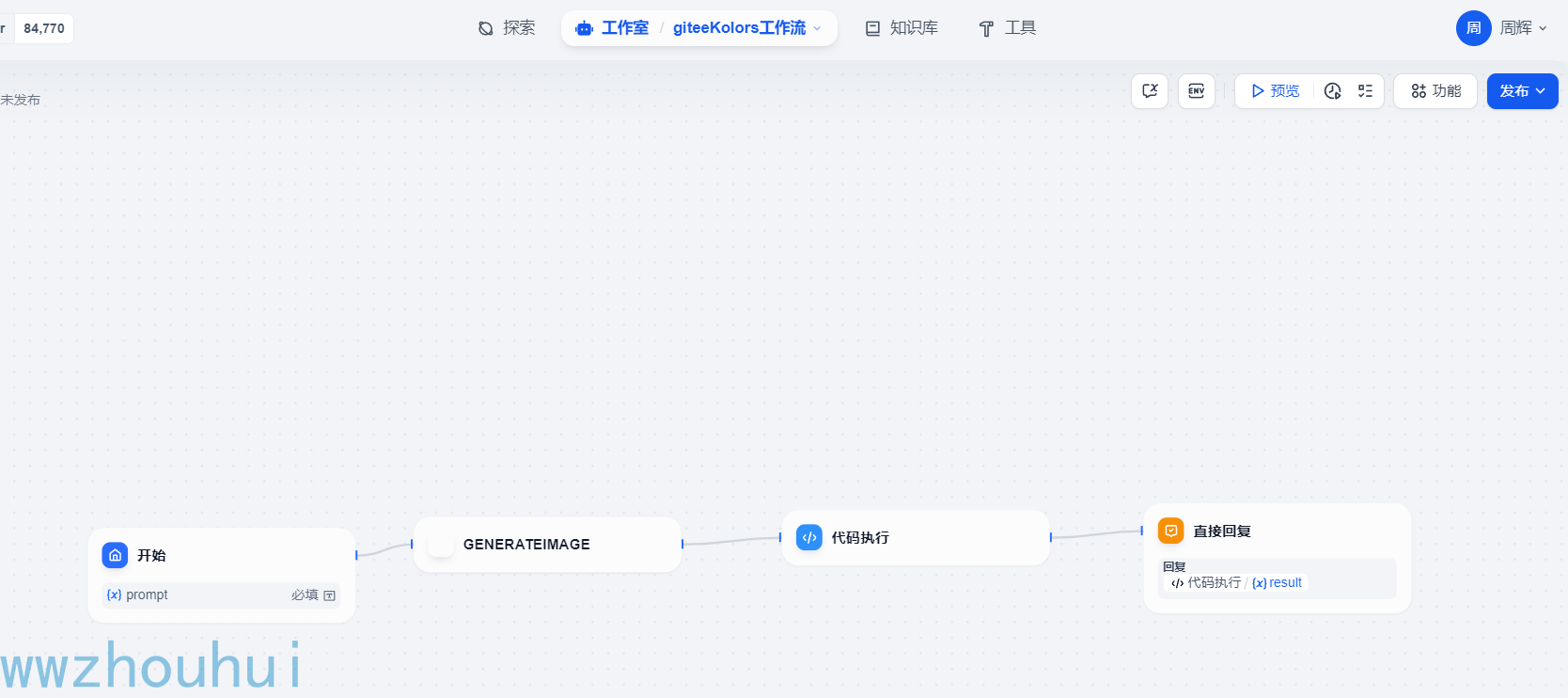 |
自定义第三方接口服务封装文生图、使用gitee Serverless API 接口+腾讯云OSS存储 | 2024年12月18日 | wwwzhouhui | 0.15.3 |
| 中国历史专家播客.yml | 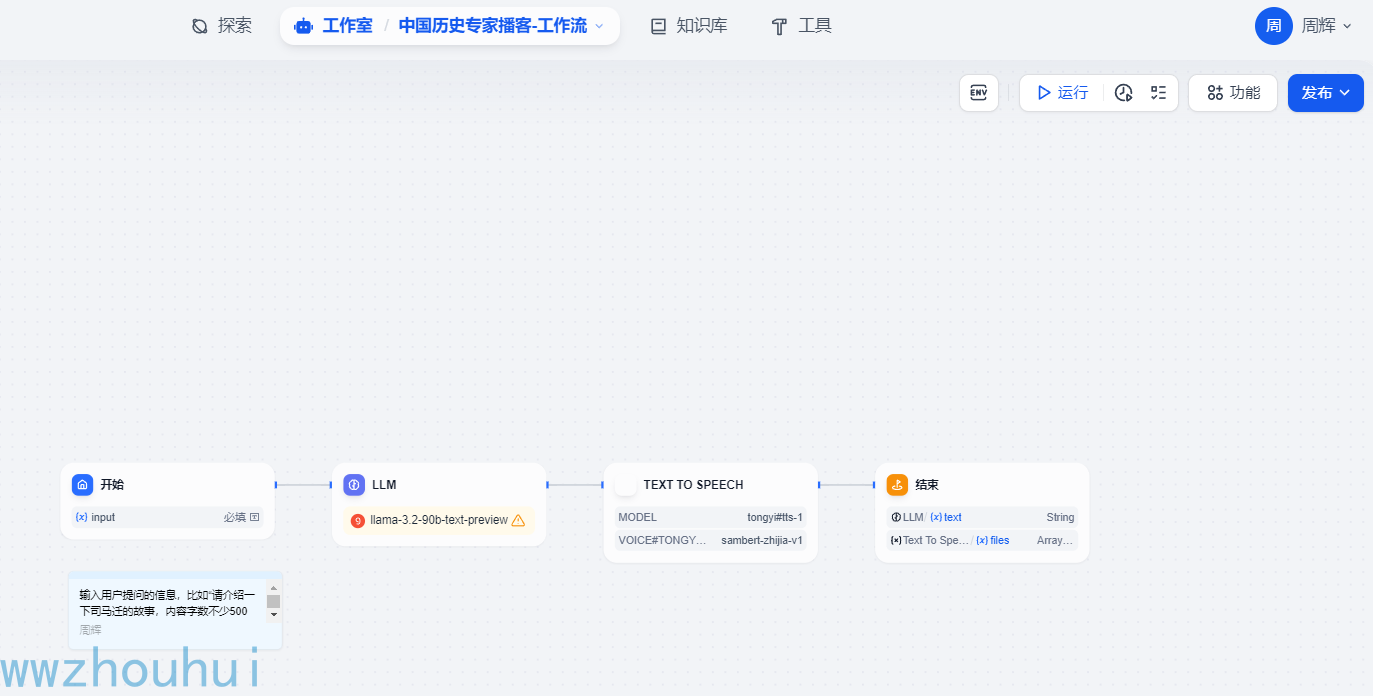 |
调用文本模型、TEXT TO SPEECH工具组件使用 | 2024年11月26日 | wwwzhouhui | 0.15.3 |
| 抓取获取36氪热榜文章内容 .yml | 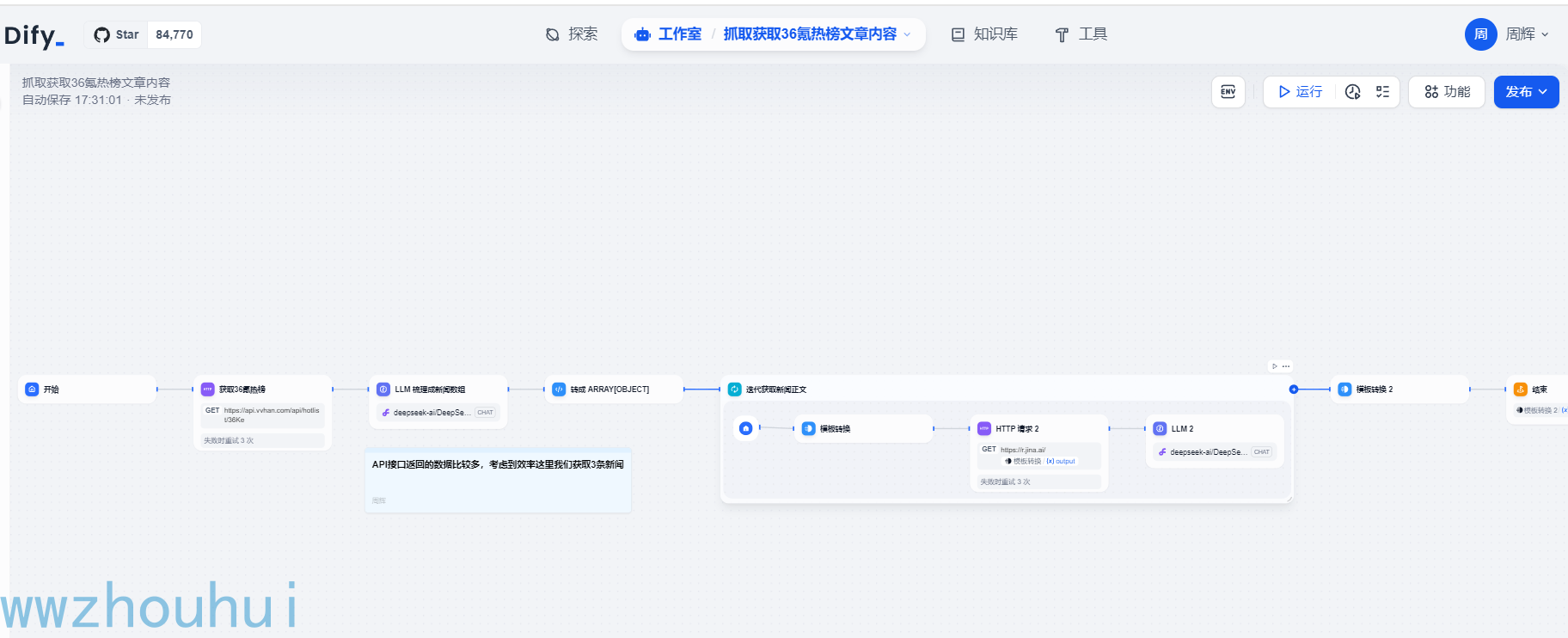 |
调用文本模型、http接口请求、jina-ai爬取网页信息、迭代 | 2024年11月16日 | wwwzhouhui | 0.15.3 |
| 发票比对专家-新版客运火车票2.yml | 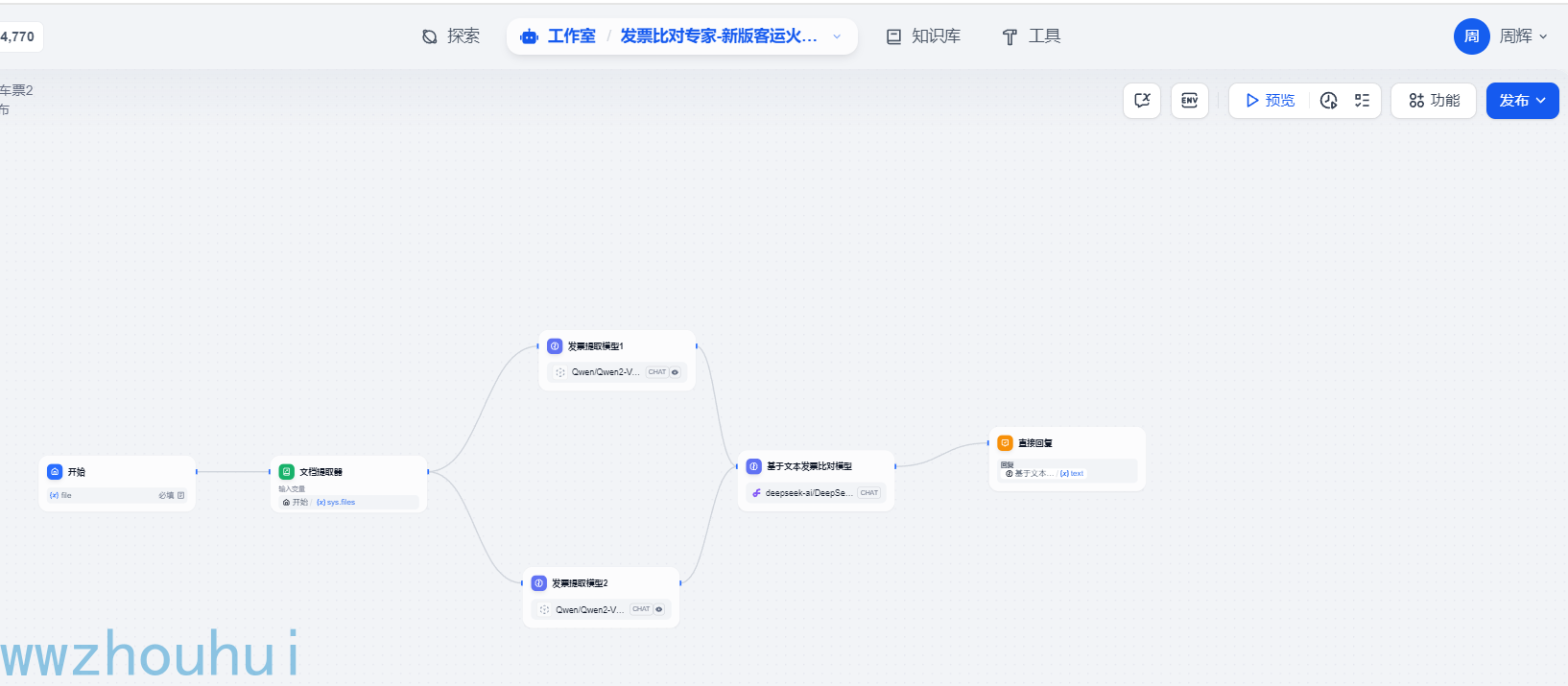 |
调用多模态模型、文本模型 | 2024年11月16日 | wwwzhouhui | 0.15.3 |
| 发票提取小工具整合版-变量聚合器.yml |  |
调用多模态模型、文本模型、文件提取器、IF流程判断 | 2024年11月16日 | wwwzhouhui | 0.15.3 |
| 增值税发票提取小工具chatflow.yml | 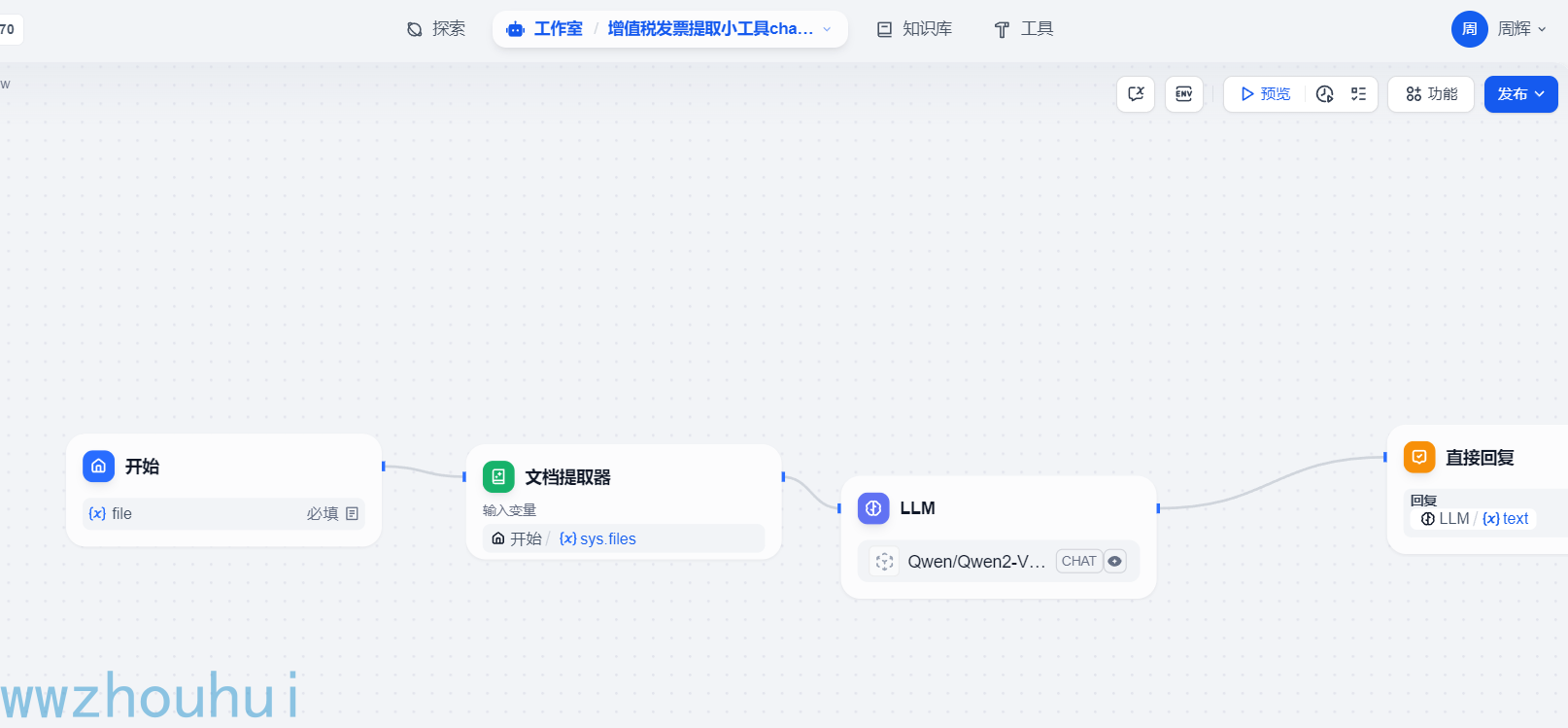 |
调用多模态模型、文本模型、文件提取器 | 2024年11月16日 | wwwzhouhui | 0.15.3 |
| FLUX绘画机器人.yml | 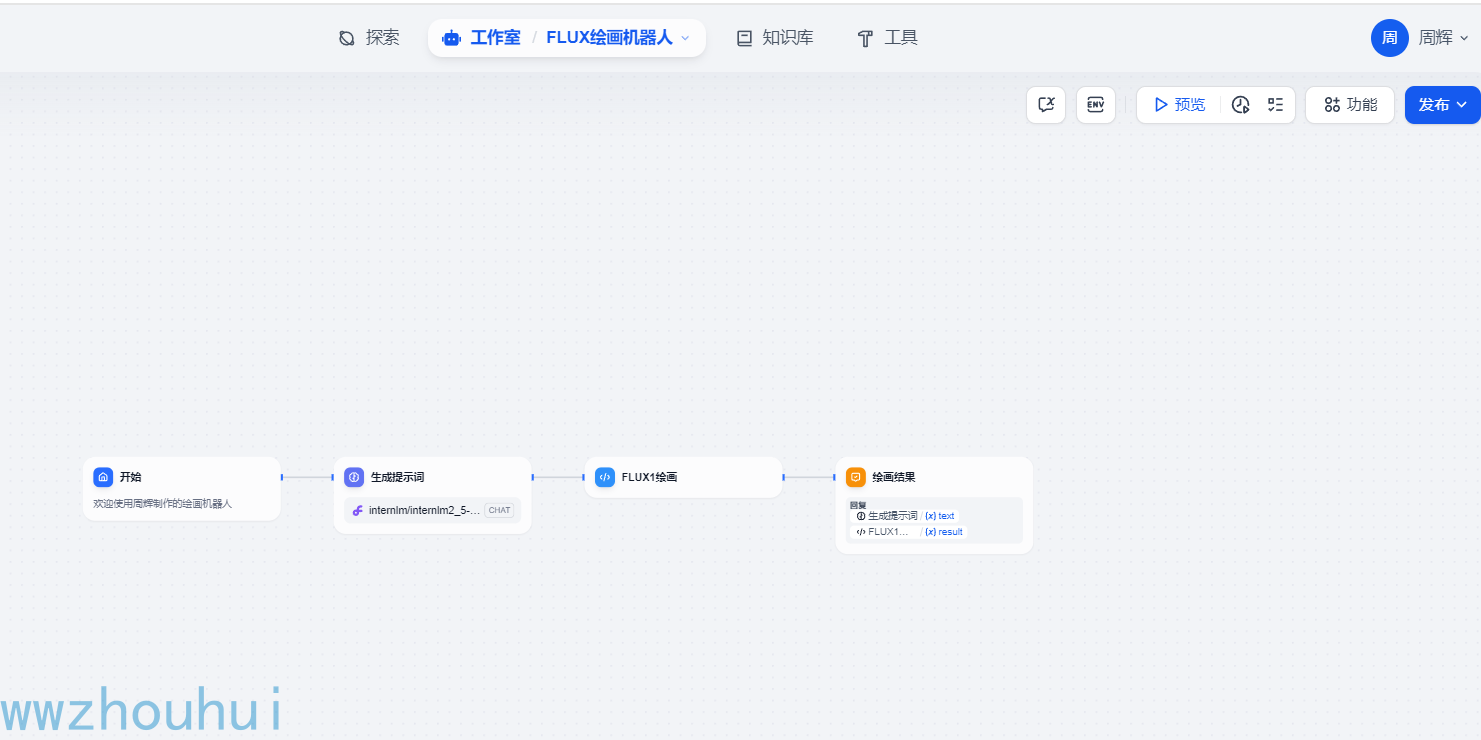 |
调用FLUX绘画模型、文本模型、http接口请求 | 2024年11月16日 | wwwzhouhui | 0.15.3 |
MIT License | Copyright © 2024-PRESENT AiAdventurer
For Tasks:
Click tags to check more tools for each tasksFor Jobs:
Alternative AI tools for sanic-web
Similar Open Source Tools

sanic-web
Sanic-Web is a lightweight, end-to-end, and easily customizable large model application project built on technologies such as Dify, Ollama & Vllm, Sanic, and Text2SQL. It provides a one-stop solution for developing large model applications, supporting graphical data-driven Q&A using ECharts, handling table-based Q&A with CSV files, and integrating with third-party RAG systems for general knowledge Q&A. As a lightweight framework, Sanic-Web enables rapid iteration and extension to facilitate the quick implementation of large model projects.
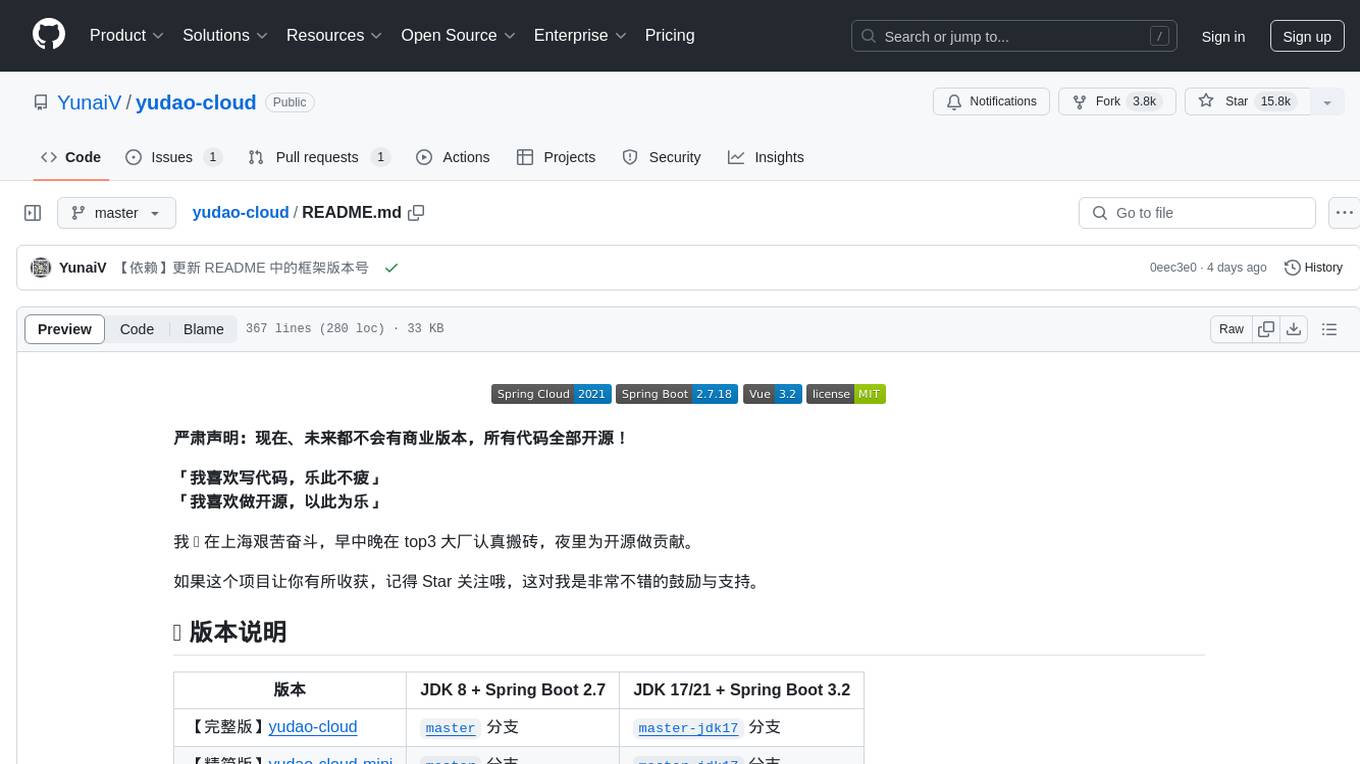
yudao-cloud
Yudao-cloud is an open-source project designed to provide a fast development platform for developers in China. It includes various system functions, infrastructure, member center, data reports, workflow, mall system, WeChat public account, CRM, ERP, etc. The project is based on Java backend with Spring Boot and Spring Cloud Alibaba microservices architecture. It supports multiple databases, message queues, authentication systems, dynamic menu loading, SaaS multi-tenant system, code generator, real-time communication, integration with third-party services like WeChat, Alipay, and more. The project is well-documented and follows the Alibaba Java development guidelines, ensuring clean code and architecture.
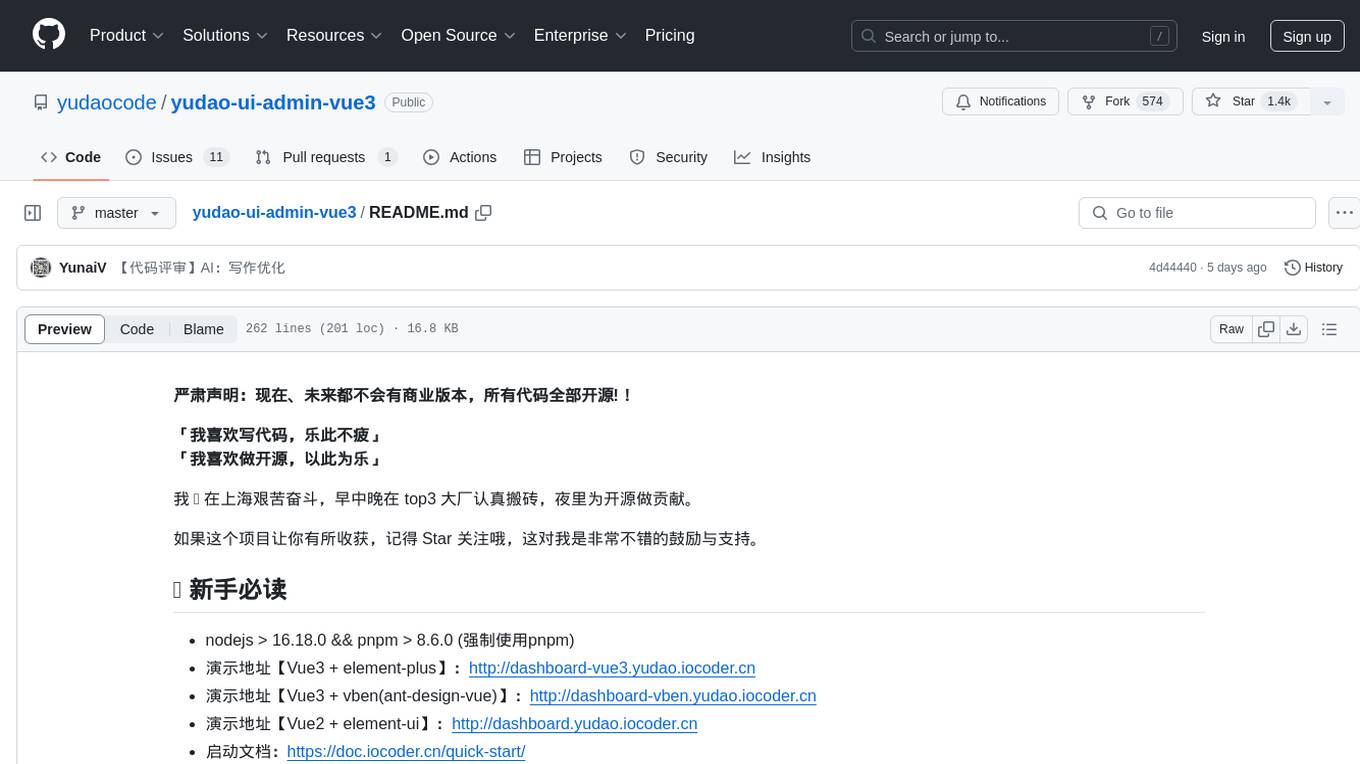
yudao-ui-admin-vue3
The yudao-ui-admin-vue3 repository is an open-source project focused on building a fast development platform for developers in China. It utilizes Vue3 and Element Plus to provide features such as configurable themes, internationalization, dynamic route permission generation, common component encapsulation, and rich examples. The project supports the latest front-end technologies like Vue3 and Vite4, and also includes tools like TypeScript, pinia, vueuse, vue-i18n, vue-router, unocss, iconify, and wangeditor. It offers a range of development tools and features for system functions, infrastructure, workflow management, payment systems, member centers, data reporting, e-commerce systems, WeChat public accounts, ERP systems, and CRM systems.
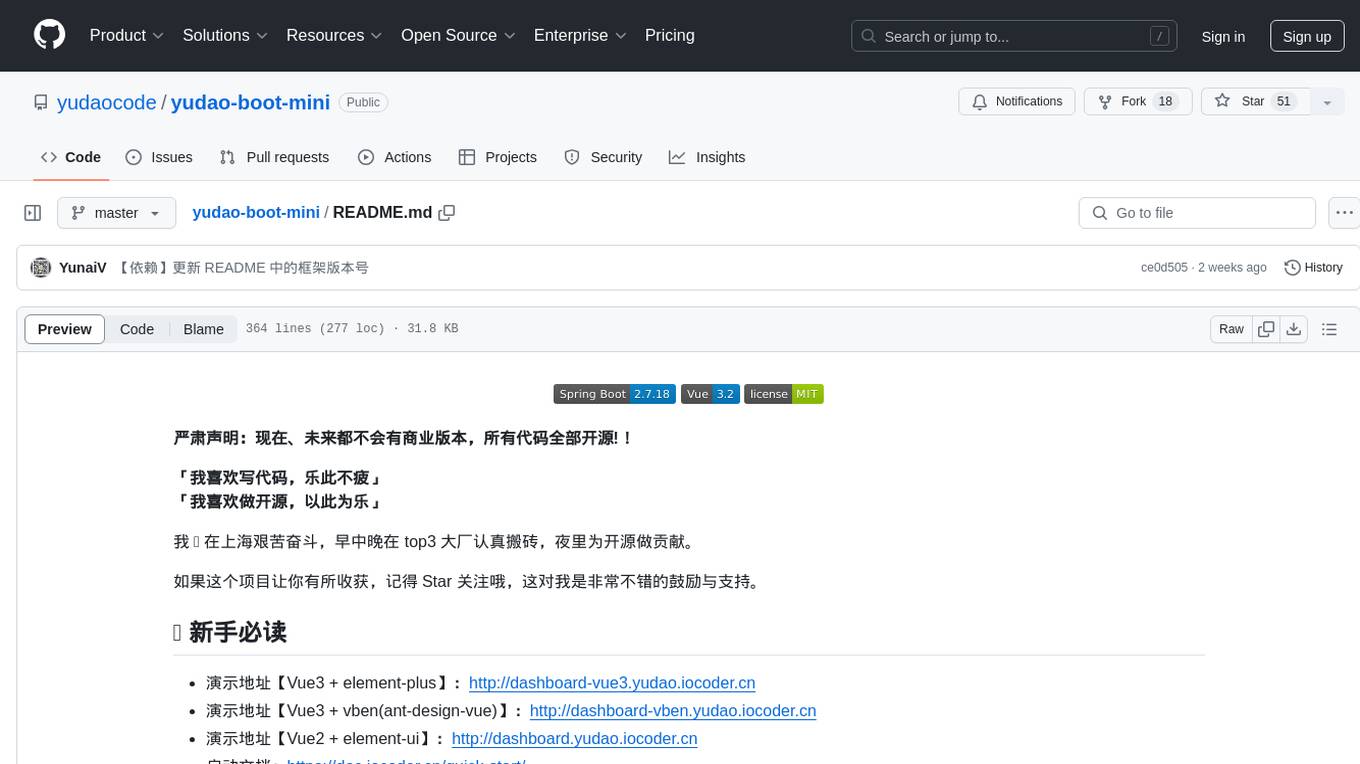
yudao-boot-mini
yudao-boot-mini is an open-source project focused on developing a rapid development platform for developers in China. It includes features like system functions, infrastructure, member center, data reports, workflow, mall system, WeChat official account, CRM, ERP, etc. The project is based on Spring Boot with Java backend and Vue for frontend. It offers various functionalities such as user management, role management, menu management, department management, workflow management, payment system, code generation, API documentation, database documentation, file service, WebSocket integration, message queue, Java monitoring, and more. The project is licensed under the MIT License, allowing both individuals and enterprises to use it freely without restrictions.
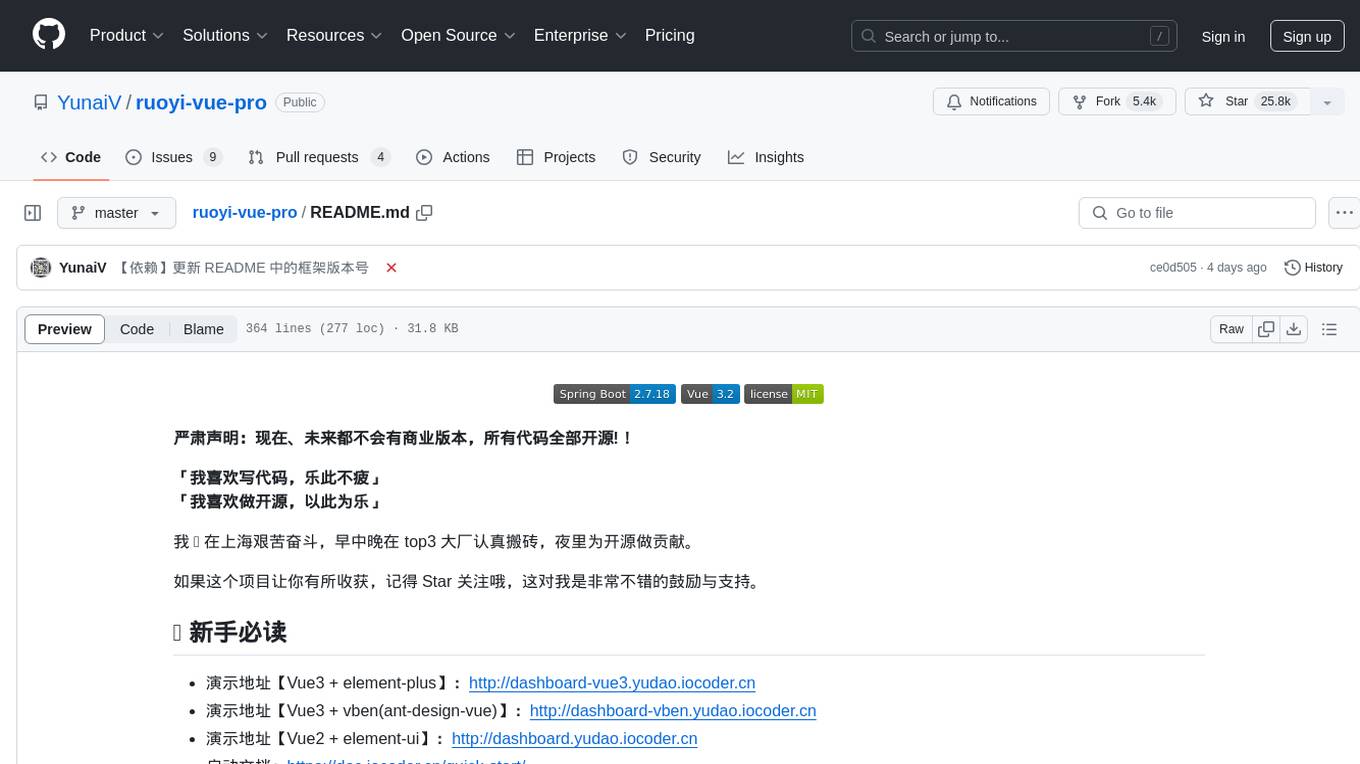
ruoyi-vue-pro
The ruoyi-vue-pro repository is an open-source project that provides a comprehensive development platform with various functionalities such as system features, infrastructure, member center, data reports, workflow, payment system, mall system, ERP system, CRM system, and AI big model. It is built using Java backend with Spring Boot framework and Vue frontend with different versions like Vue3 with element-plus, Vue3 with vben(ant-design-vue), and Vue2 with element-ui. The project aims to offer a fast development platform for developers and enterprises, supporting features like dynamic menu loading, button-level access control, SaaS multi-tenancy, code generator, real-time communication, integration with third-party services like WeChat, Alipay, and cloud services, and more.

XiaoFeiShu
XiaoFeiShu is a specialized automation software developed closely following the quality user rules of Xiaohongshu. It provides a set of automation workflows for Xiaohongshu operations, avoiding the issues of traditional RPA being mechanical, rule-based, and easily detected. The software is easy to use, with simple operation and powerful functionality.
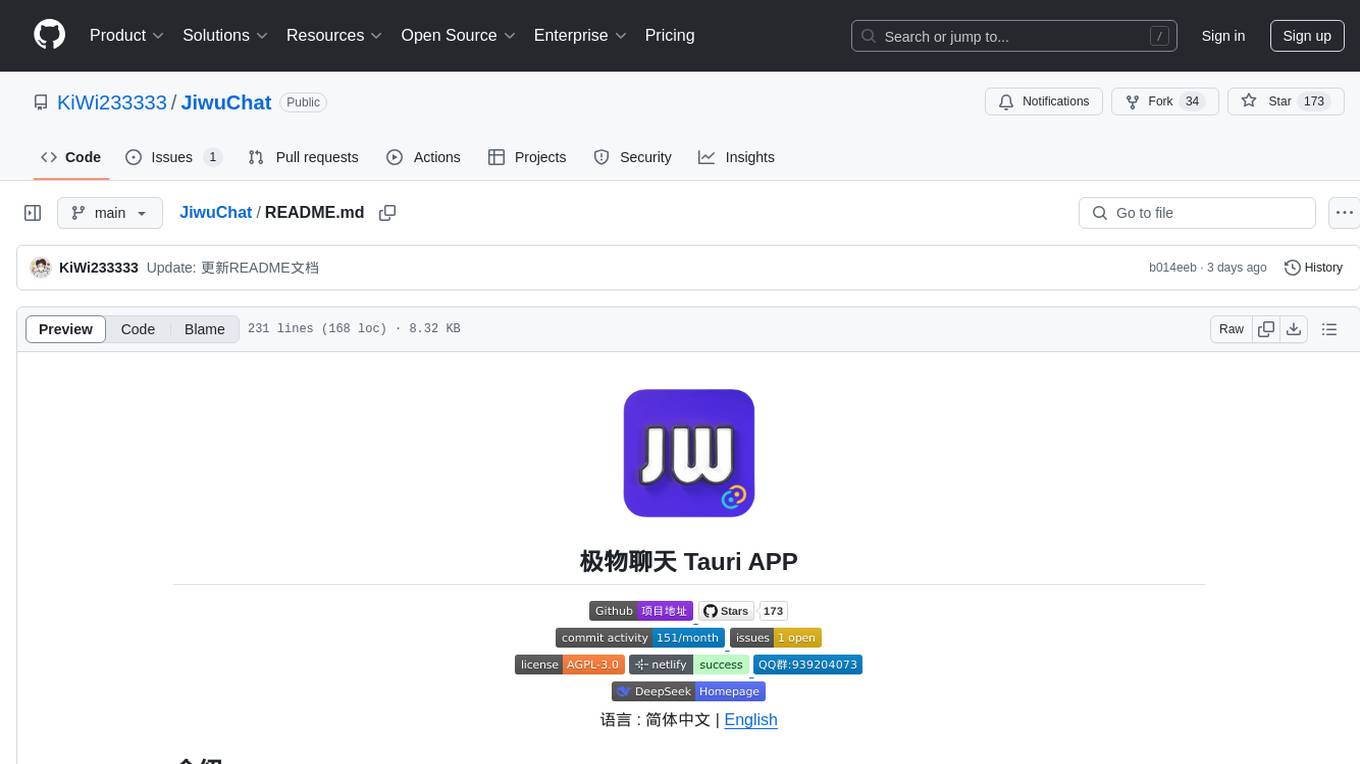
JiwuChat
JiwuChat is a lightweight multi-platform chat application built on Tauri2 and Nuxt3, with various real-time messaging features, AI group chat bots (such as 'iFlytek Spark', 'KimiAI' etc.), WebRTC audio-video calling, screen sharing, and AI shopping functions. It supports seamless cross-device communication, covering text, images, files, and voice messages, also supporting group chats and customizable settings. It provides light/dark mode for efficient social networking.
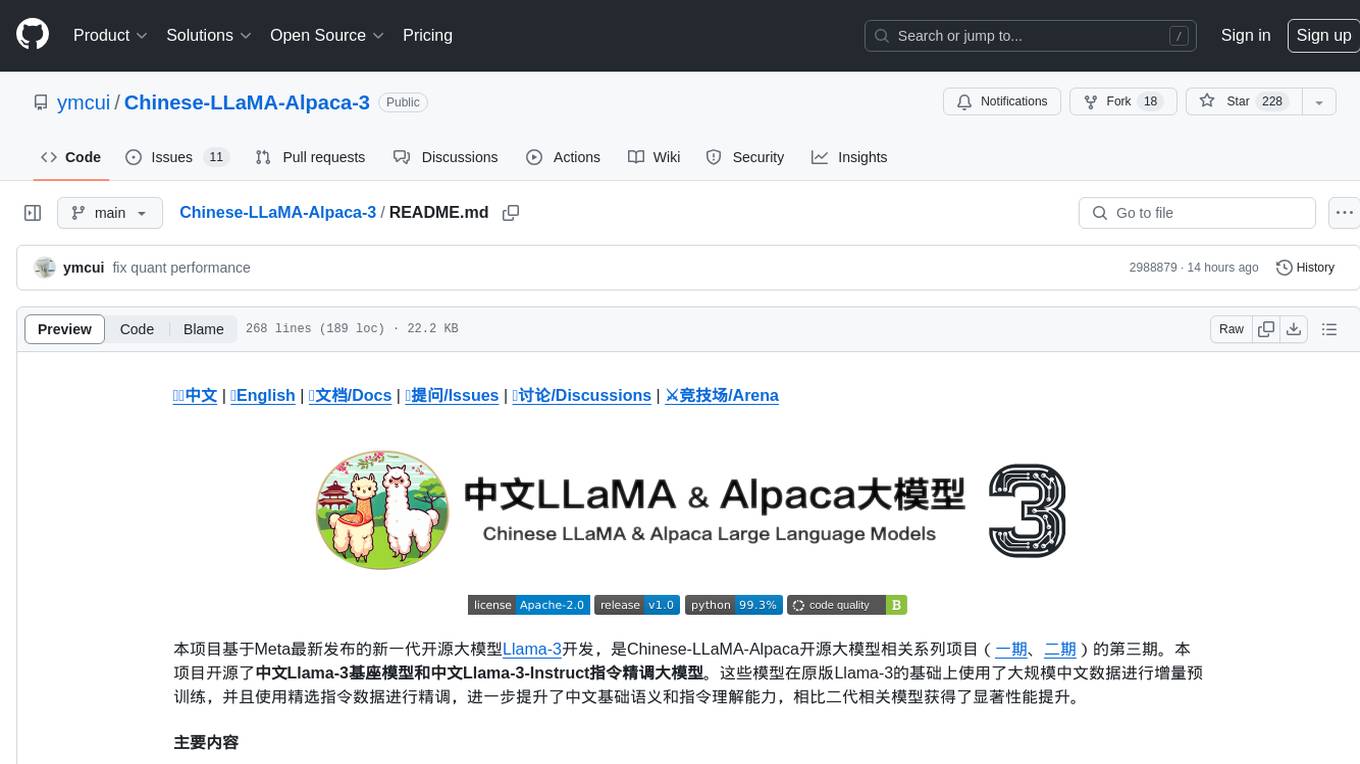
Chinese-LLaMA-Alpaca-3
Chinese-LLaMA-Alpaca-3 is a project based on Meta's latest release of the new generation open-source large model Llama-3. It is the third phase of the Chinese-LLaMA-Alpaca open-source large model series projects (Phase 1, Phase 2). This project open-sources the Chinese Llama-3 base model and the Chinese Llama-3-Instruct instruction fine-tuned large model. These models incrementally pre-train with a large amount of Chinese data on the basis of the original Llama-3 and further fine-tune using selected instruction data, enhancing Chinese basic semantics and instruction understanding capabilities. Compared to the second-generation related models, significant performance improvements have been achieved.
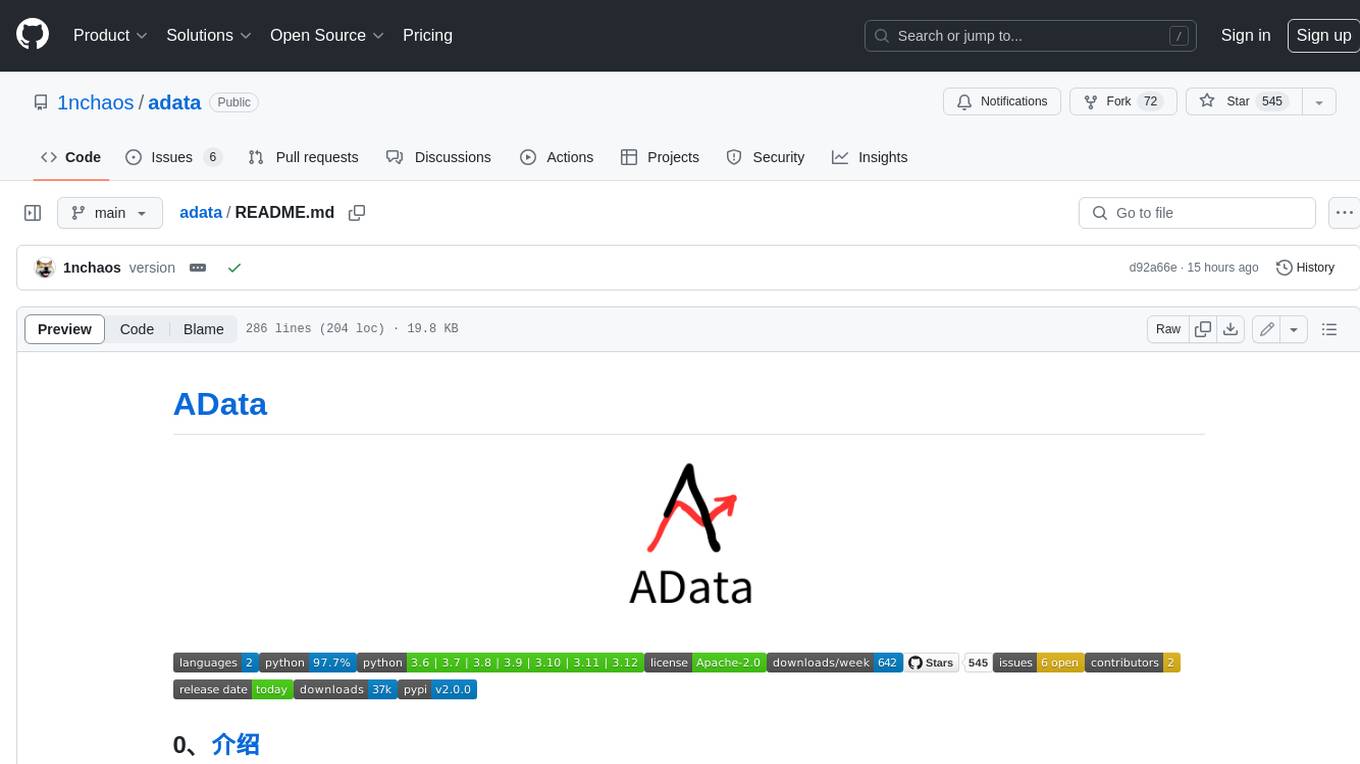
adata
AData is a free and open-source A-share database that focuses on transaction-related data. It provides comprehensive data on stocks, including basic information, market data, and sentiment analysis. AData is designed to be easy to use and integrate with other applications, making it a valuable tool for quantitative trading and AI training.
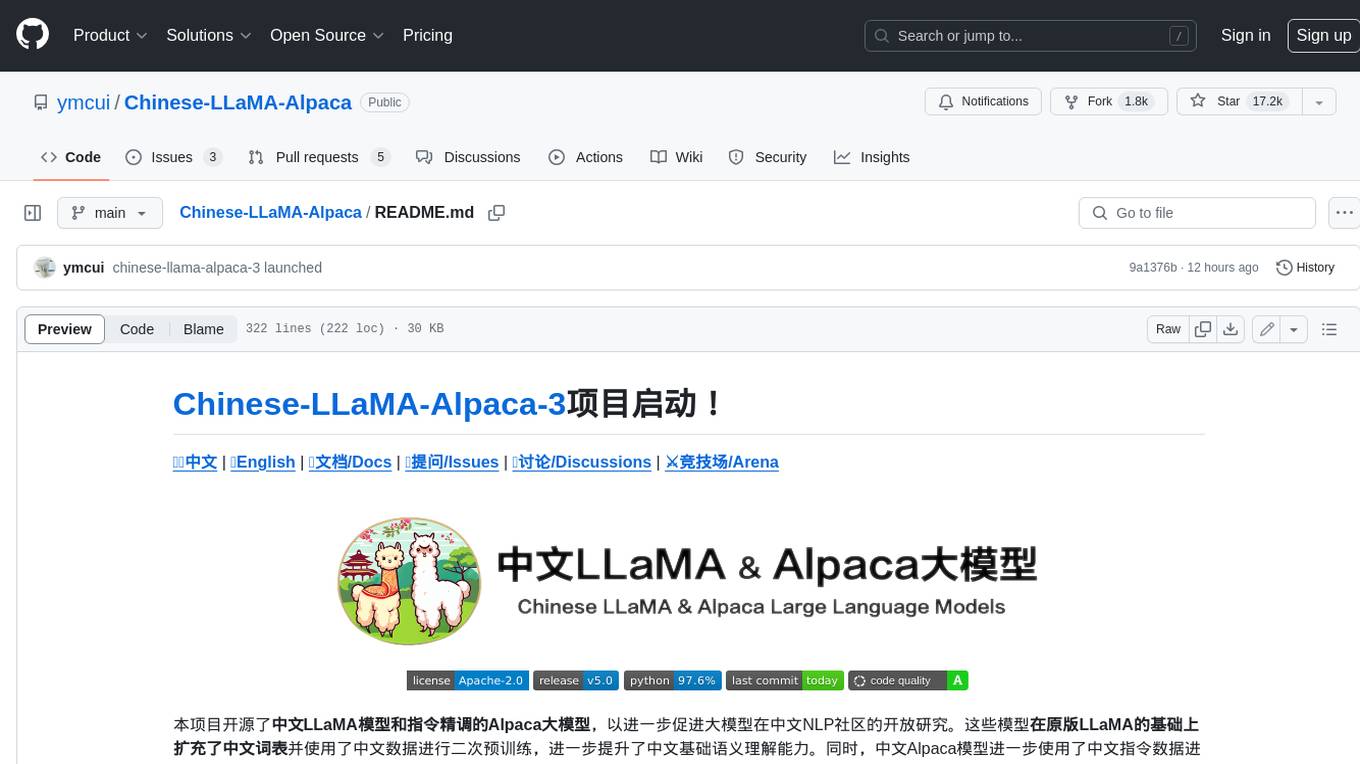
Chinese-LLaMA-Alpaca
This project open sources the **Chinese LLaMA model and the Alpaca large model fine-tuned with instructions**, to further promote the open research of large models in the Chinese NLP community. These models **extend the Chinese vocabulary based on the original LLaMA** and use Chinese data for secondary pre-training, further enhancing the basic Chinese semantic understanding ability. At the same time, the Chinese Alpaca model further uses Chinese instruction data for fine-tuning, significantly improving the model's understanding and execution of instructions.

Chinese-LLaMA-Alpaca-2
Chinese-LLaMA-Alpaca-2 is a large Chinese language model developed by Meta AI. It is based on the Llama-2 model and has been further trained on a large dataset of Chinese text. Chinese-LLaMA-Alpaca-2 can be used for a variety of natural language processing tasks, including text generation, question answering, and machine translation. Here are some of the key features of Chinese-LLaMA-Alpaca-2: * It is the largest Chinese language model ever trained, with 13 billion parameters. * It is trained on a massive dataset of Chinese text, including books, news articles, and social media posts. * It can be used for a variety of natural language processing tasks, including text generation, question answering, and machine translation. * It is open-source and available for anyone to use. Chinese-LLaMA-Alpaca-2 is a powerful tool that can be used to improve the performance of a wide range of natural language processing tasks. It is a valuable resource for researchers and developers working in the field of artificial intelligence.
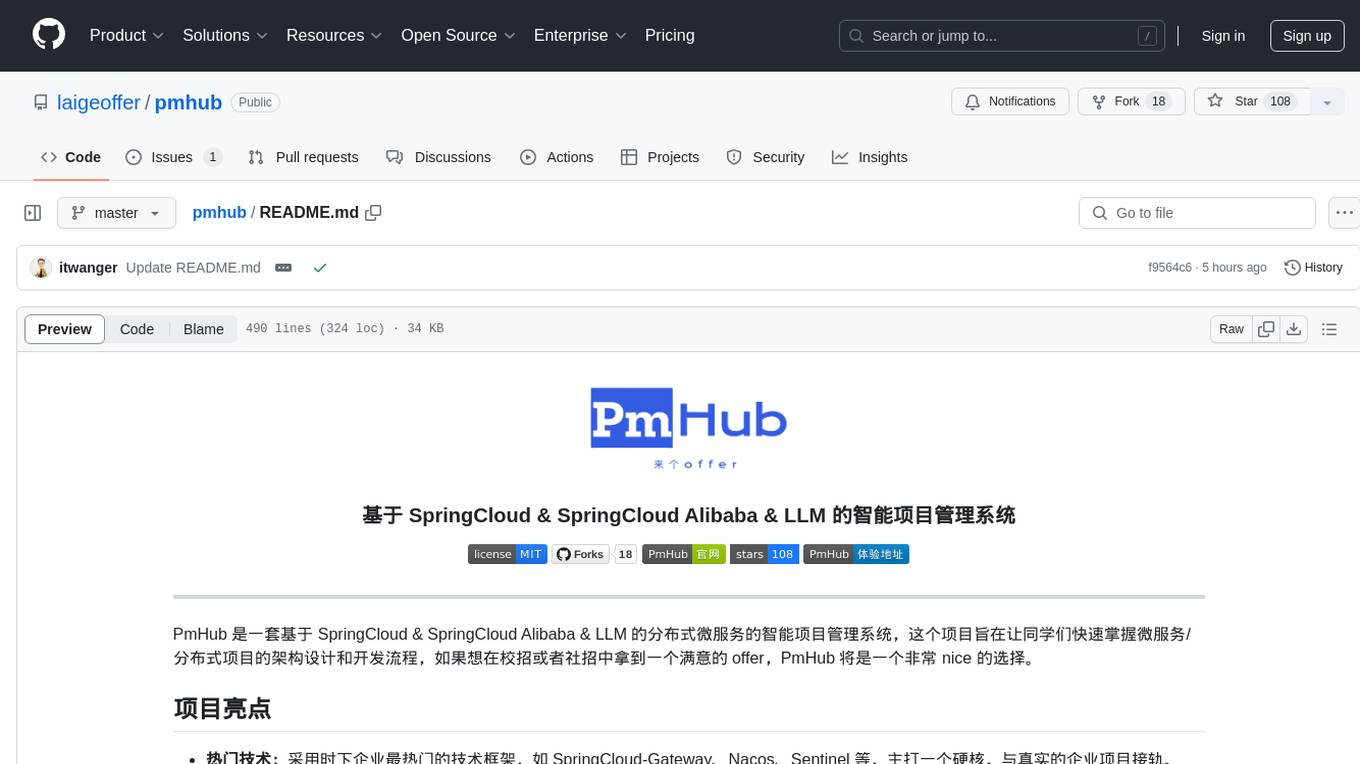
pmhub
PmHub is a smart project management system based on SpringCloud, SpringCloud Alibaba, and LLM. It aims to help students quickly grasp the architecture design and development process of microservices/distributed projects. PmHub provides a platform for students to experience the transformation from monolithic to microservices architecture, understand the pros and cons of both architectures, and prepare for job interviews. It offers popular technologies like SpringCloud-Gateway, Nacos, Sentinel, and provides high-quality code, continuous integration, product design documents, and an enterprise workflow system. PmHub is suitable for beginners and advanced learners who want to master core knowledge of microservices/distributed projects.
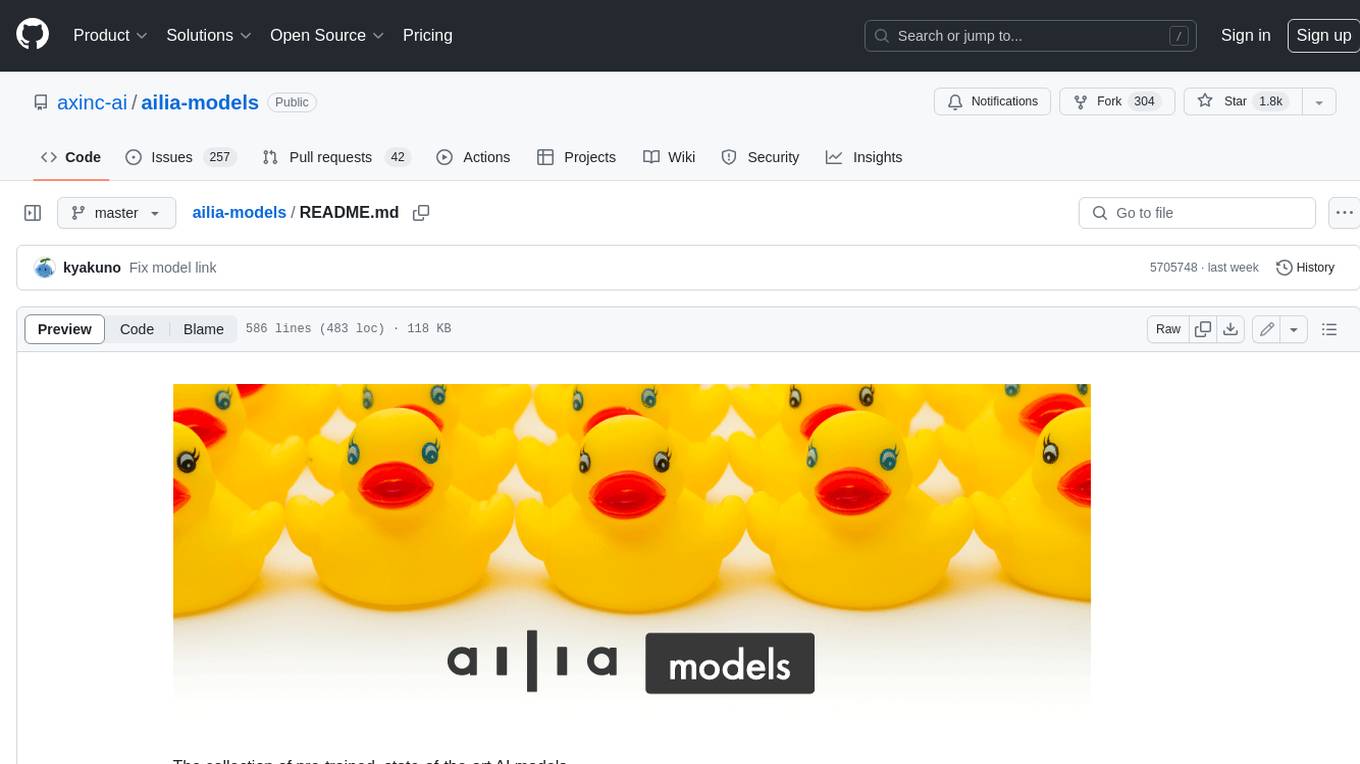
ailia-models
The collection of pre-trained, state-of-the-art AI models. ailia SDK is a self-contained, cross-platform, high-speed inference SDK for AI. The ailia SDK provides a consistent C++ API across Windows, Mac, Linux, iOS, Android, Jetson, and Raspberry Pi platforms. It also supports Unity (C#), Python, Rust, Flutter(Dart) and JNI for efficient AI implementation. The ailia SDK makes extensive use of the GPU through Vulkan and Metal to enable accelerated computing. # Supported models 323 models as of April 8th, 2024
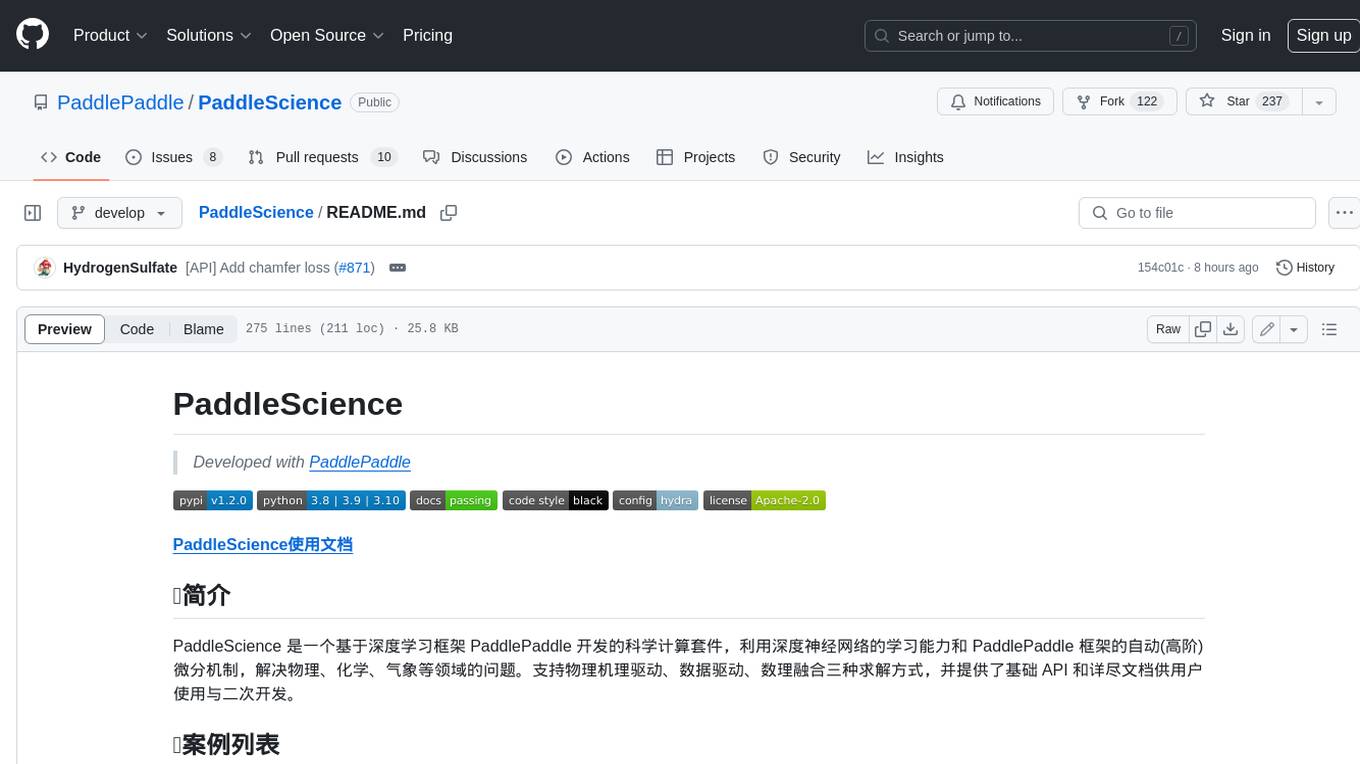
PaddleScience
PaddleScience is a scientific computing suite developed based on the deep learning framework PaddlePaddle. It utilizes the learning ability of deep neural networks and the automatic (higher-order) differentiation mechanism of PaddlePaddle to solve problems in physics, chemistry, meteorology, and other fields. It supports three solving methods: physics mechanism-driven, data-driven, and mathematical fusion, and provides basic APIs and detailed documentation for users to use and further develop.
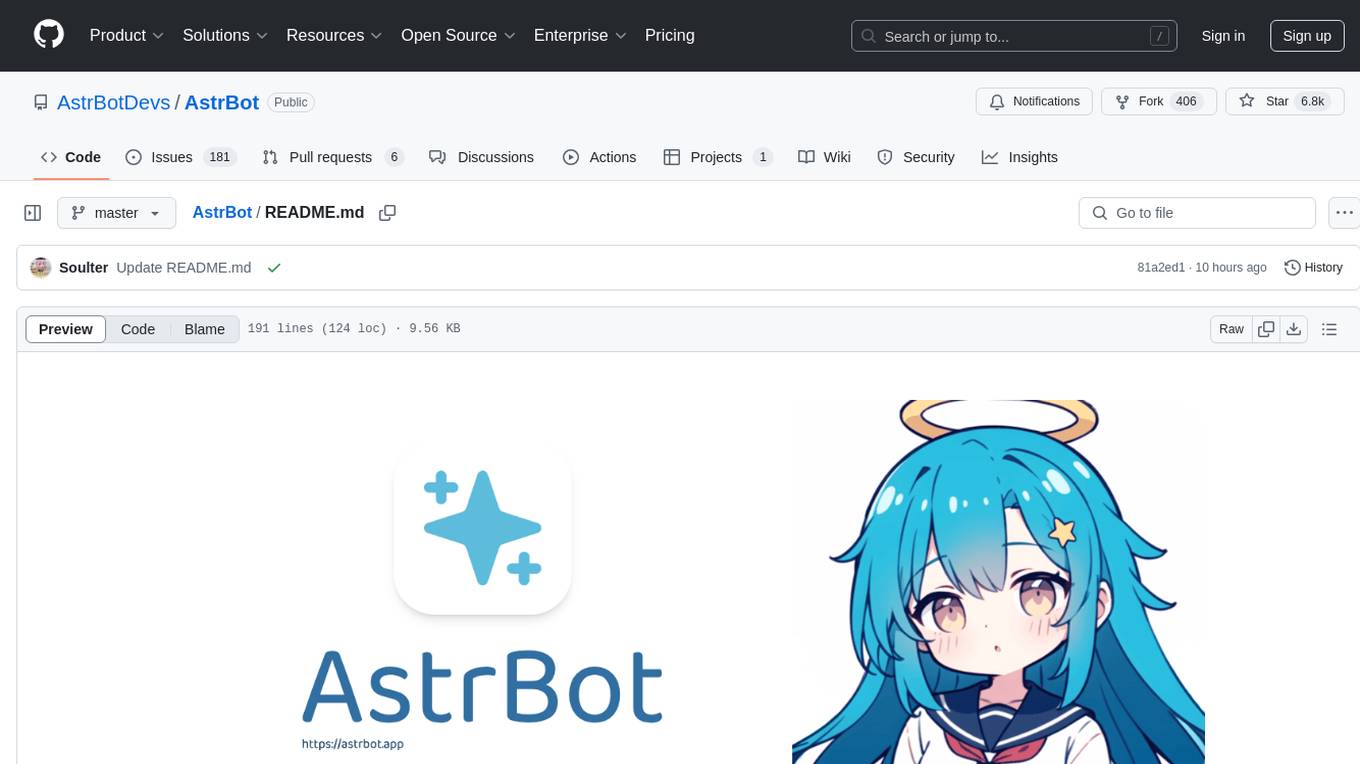
AstrBot
AstrBot is an open-source one-stop Agentic chatbot platform and development framework. It supports large model conversations, multiple messaging platforms, Agent capabilities, plugin extensions, and WebUI for visual configuration and management of the chatbot.
For similar tasks

Azure-Analytics-and-AI-Engagement
The Azure-Analytics-and-AI-Engagement repository provides packaged Industry Scenario DREAM Demos with ARM templates (Containing a demo web application, Power BI reports, Synapse resources, AML Notebooks etc.) that can be deployed in a customer’s subscription using the CAPE tool within a matter of few hours. Partners can also deploy DREAM Demos in their own subscriptions using DPoC.
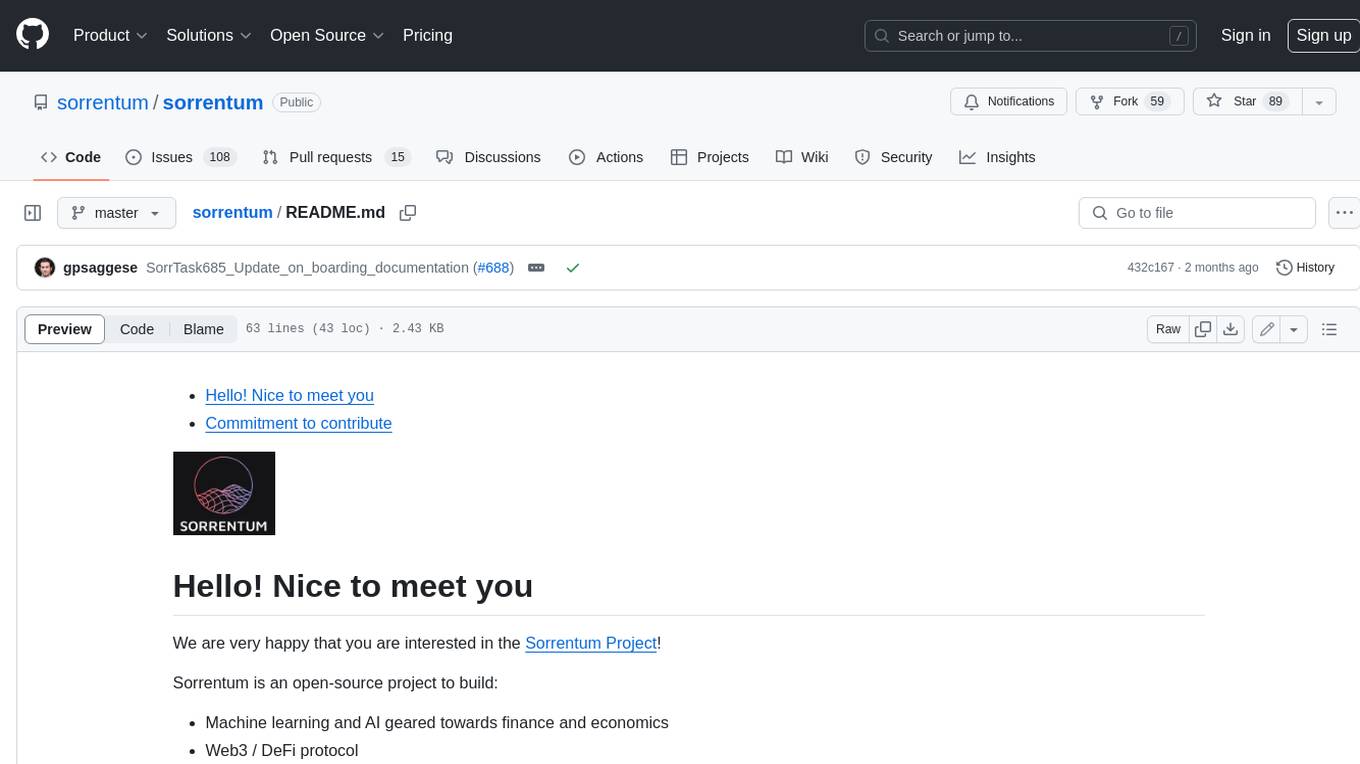
sorrentum
Sorrentum is an open-source project that aims to combine open-source development, startups, and brilliant students to build machine learning, AI, and Web3 / DeFi protocols geared towards finance and economics. The project provides opportunities for internships, research assistantships, and development grants, as well as the chance to work on cutting-edge problems, learn about startups, write academic papers, and get internships and full-time positions at companies working on Sorrentum applications.

tidb
TiDB is an open-source distributed SQL database that supports Hybrid Transactional and Analytical Processing (HTAP) workloads. It is MySQL compatible and features horizontal scalability, strong consistency, and high availability.

zep-python
Zep is an open-source platform for building and deploying large language model (LLM) applications. It provides a suite of tools and services that make it easy to integrate LLMs into your applications, including chat history memory, embedding, vector search, and data enrichment. Zep is designed to be scalable, reliable, and easy to use, making it a great choice for developers who want to build LLM-powered applications quickly and easily.

telemetry-airflow
This repository codifies the Airflow cluster that is deployed at workflow.telemetry.mozilla.org (behind SSO) and commonly referred to as "WTMO" or simply "Airflow". Some links relevant to users and developers of WTMO: * The `dags` directory in this repository contains some custom DAG definitions * Many of the DAGs registered with WTMO don't live in this repository, but are instead generated from ETL task definitions in bigquery-etl * The Data SRE team maintains a WTMO Developer Guide (behind SSO)
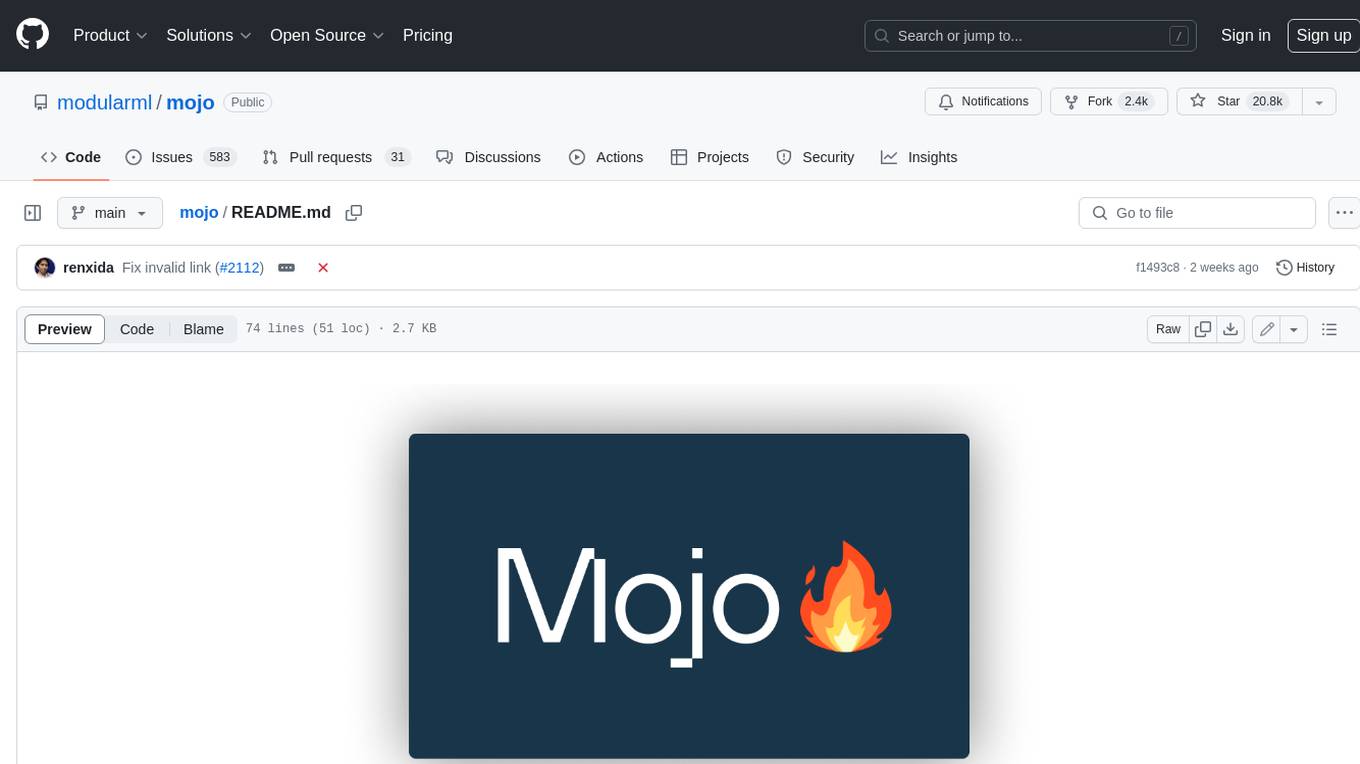
mojo
Mojo is a new programming language that bridges the gap between research and production by combining Python syntax and ecosystem with systems programming and metaprogramming features. Mojo is still young, but it is designed to become a superset of Python over time.
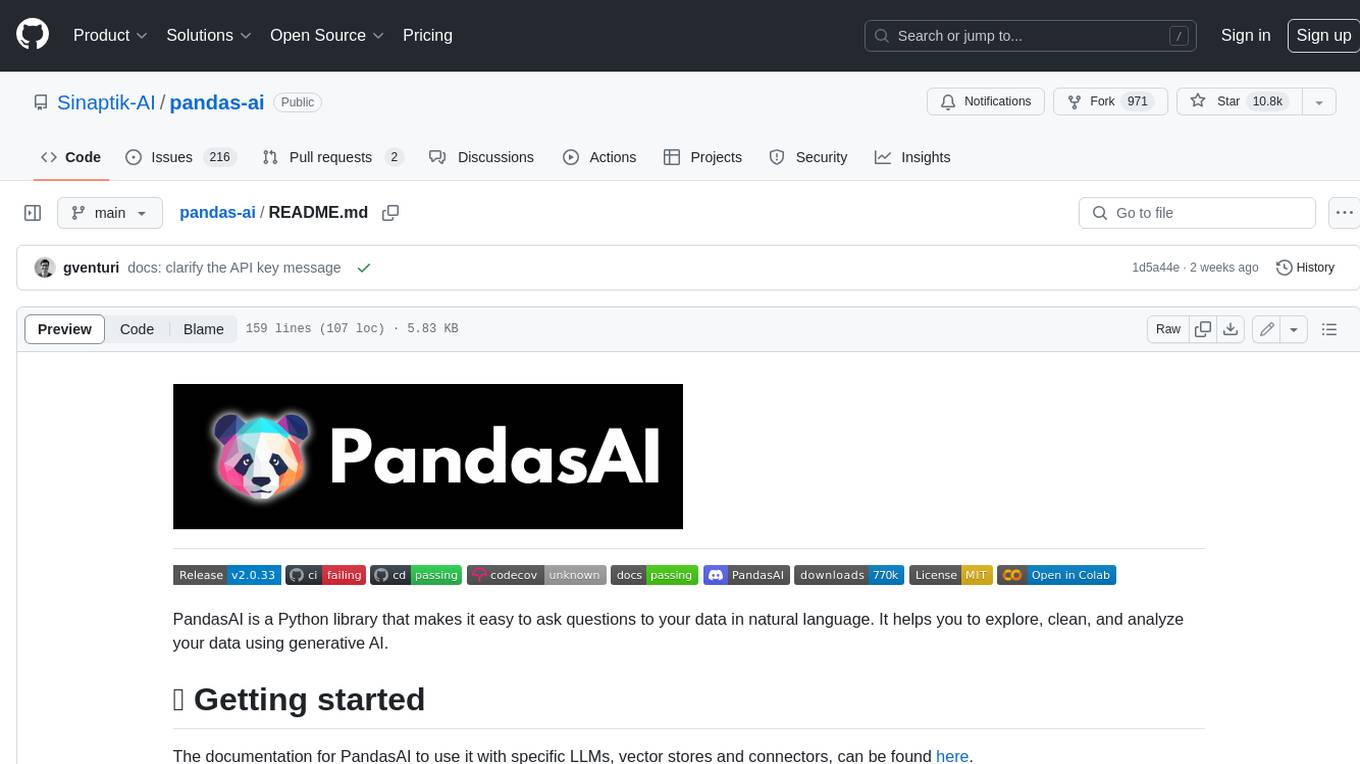
pandas-ai
PandasAI is a Python library that makes it easy to ask questions to your data in natural language. It helps you to explore, clean, and analyze your data using generative AI.

databend
Databend is an open-source cloud data warehouse that serves as a cost-effective alternative to Snowflake. With its focus on fast query execution and data ingestion, it's designed for complex analysis of the world's largest datasets.
For similar jobs

weave
Weave is a toolkit for developing Generative AI applications, built by Weights & Biases. With Weave, you can log and debug language model inputs, outputs, and traces; build rigorous, apples-to-apples evaluations for language model use cases; and organize all the information generated across the LLM workflow, from experimentation to evaluations to production. Weave aims to bring rigor, best-practices, and composability to the inherently experimental process of developing Generative AI software, without introducing cognitive overhead.

LLMStack
LLMStack is a no-code platform for building generative AI agents, workflows, and chatbots. It allows users to connect their own data, internal tools, and GPT-powered models without any coding experience. LLMStack can be deployed to the cloud or on-premise and can be accessed via HTTP API or triggered from Slack or Discord.

VisionCraft
The VisionCraft API is a free API for using over 100 different AI models. From images to sound.

kaito
Kaito is an operator that automates the AI/ML inference model deployment in a Kubernetes cluster. It manages large model files using container images, avoids tuning deployment parameters to fit GPU hardware by providing preset configurations, auto-provisions GPU nodes based on model requirements, and hosts large model images in the public Microsoft Container Registry (MCR) if the license allows. Using Kaito, the workflow of onboarding large AI inference models in Kubernetes is largely simplified.

PyRIT
PyRIT is an open access automation framework designed to empower security professionals and ML engineers to red team foundation models and their applications. It automates AI Red Teaming tasks to allow operators to focus on more complicated and time-consuming tasks and can also identify security harms such as misuse (e.g., malware generation, jailbreaking), and privacy harms (e.g., identity theft). The goal is to allow researchers to have a baseline of how well their model and entire inference pipeline is doing against different harm categories and to be able to compare that baseline to future iterations of their model. This allows them to have empirical data on how well their model is doing today, and detect any degradation of performance based on future improvements.

tabby
Tabby is a self-hosted AI coding assistant, offering an open-source and on-premises alternative to GitHub Copilot. It boasts several key features: * Self-contained, with no need for a DBMS or cloud service. * OpenAPI interface, easy to integrate with existing infrastructure (e.g Cloud IDE). * Supports consumer-grade GPUs.

spear
SPEAR (Simulator for Photorealistic Embodied AI Research) is a powerful tool for training embodied agents. It features 300 unique virtual indoor environments with 2,566 unique rooms and 17,234 unique objects that can be manipulated individually. Each environment is designed by a professional artist and features detailed geometry, photorealistic materials, and a unique floor plan and object layout. SPEAR is implemented as Unreal Engine assets and provides an OpenAI Gym interface for interacting with the environments via Python.

Magick
Magick is a groundbreaking visual AIDE (Artificial Intelligence Development Environment) for no-code data pipelines and multimodal agents. Magick can connect to other services and comes with nodes and templates well-suited for intelligent agents, chatbots, complex reasoning systems and realistic characters.


